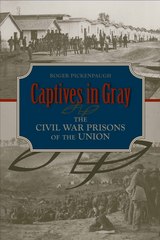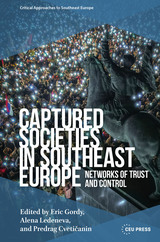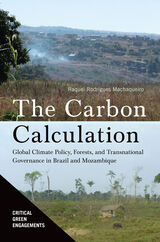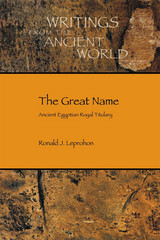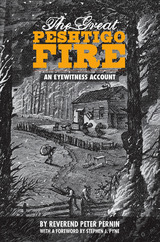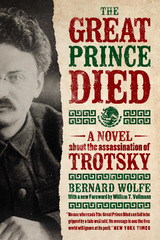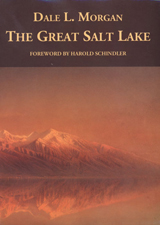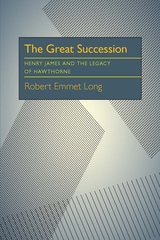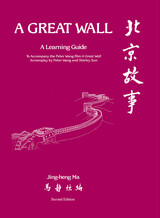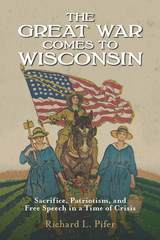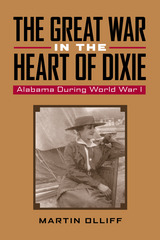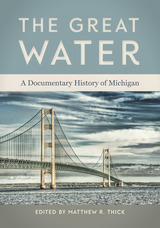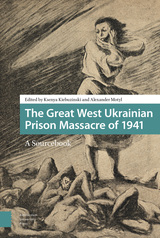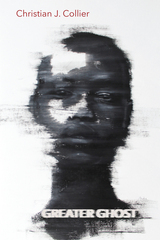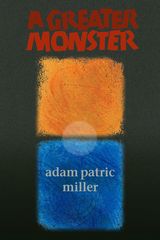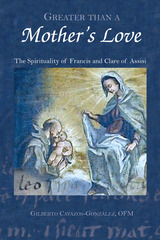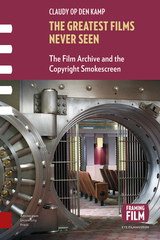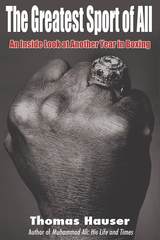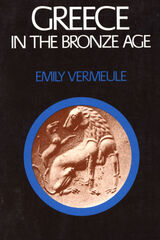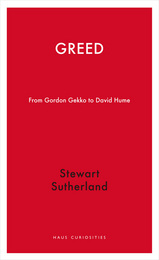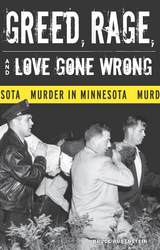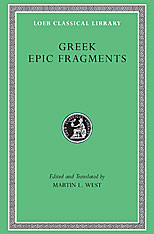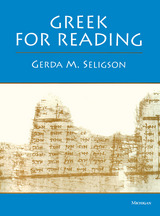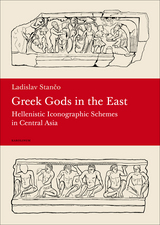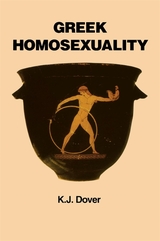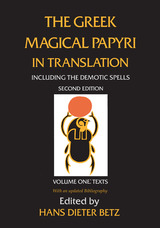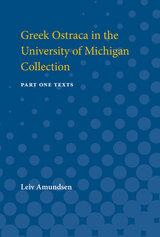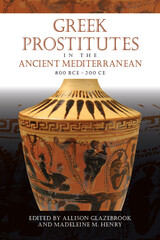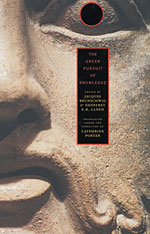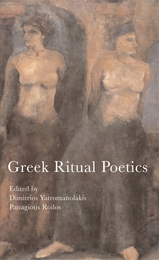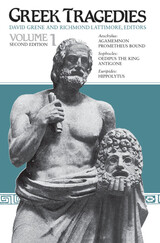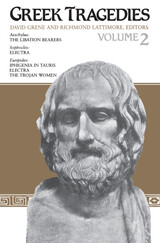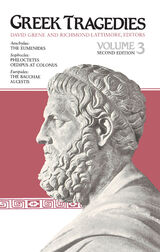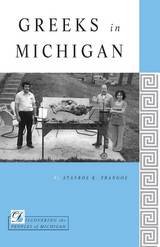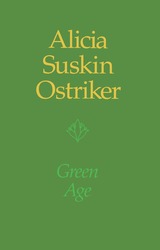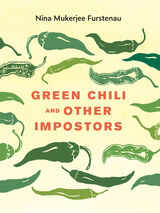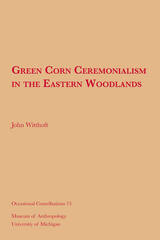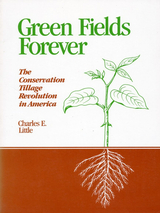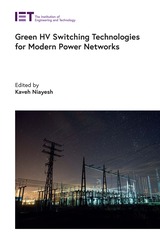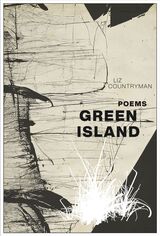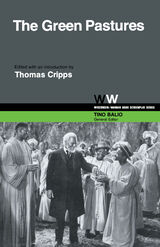The Great Midland
Alexander Saxton
University of Illinois Press, 1997 One of the best novels ever to portray the lives of American Communist activists, The Great Midland is a story of love and radical politics set just before World War II. It was published in 1948, when cold-war hysteria engulfed the United States; the publisher subsequently tried to pretend the book did not exist, and review media and bookstores ignored it.
The book vividly depicts the multiracial and multiethnic alliances that developed as Chicago railroad workers struggled to organize. It presents some of its narrative through the complex consciousness of Stephanie Koviak, a young, first-generation Polish-American.
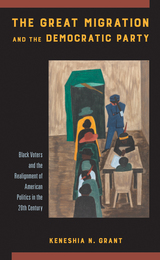 The Great Migration and the Democratic Party: Black Voters and the Realignment of American Politics in the 20th Century
Keneshia N. Grant
Temple University Press, 2020 Where Black people live has long been an important determinant of their ability to participate in political processes. The Great Migration significantly changed the way Democratic Party elites interacted with Black communities in northern cities, Detroit, New York, and Chicago. Many white Democratic politicians came to believe the growing pool of Black voters could help them reach their electoral goals—and these politicians often changed their campaign strategies and positions to secure Black support. Furthermore, Black migrants were able to participate in politics because there were fewer barriers to Black political participations outside the South. The Great Migration and the Democratic Party frames the Great Migration as an important economic and social event that also had serious political consequences. Keneshia Grant created one of the first listings of Black elected officials that classifies them based on their status as participants in the Great Migration. She also describes some of the policy/political concerns of the migrants. The Great Migration and the Democratic Party lays the groundwork for ways of thinking about the contemporary impact of Black migration on American politics.
 The Great Minnesota Cookie Book: Award-Winning Recipes from the Star Tribune's Holiday Cookie Contest
Lee Svitak Dean
University of Minnesota Press, 2018 Eighty delicious, imaginative recipes from the Star Tribune’s beloved annual cookie contest, with mouth-watering pictures and bakers’ stories
It’s cold in Minnesota, especially around the holidays, and there’s nothing like baking a batch of cookies to warm the kitchen and the heart. A celebration of the rich traditions, creativity, and taste of the region, The Great Minnesota Cookie Book collects the best-loved recipes and baking lore from fifteen years of the Star Tribune’s popular holiday cookie contest. Drop cookies and cutouts, refrigerator cookies and bars; Swedish shortbread, Viennese wafers, and French–Swiss butter cookies; almond palmiers; chai crescents and taffy treats; snowball clippers, cherry pinwheels, lime coolers, and chocolate-drizzled churros: a dizzying array and all delightful, the recipes in this book recall memories of holidays past and inspire the promise of happy gatherings to come. These are winning cookies in every sense, the best of the best chosen by the contest’s judges, accompanied by beautiful photographs as instructive as they are enticing. A treat for any occasion, whether party, bake sale, or after-school snack, each time- and taste-tested recipe is perfect for starting a tradition of one’s own.
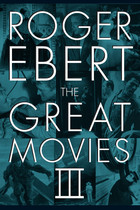 The Great Movies III
Roger Ebert
University of Chicago Press, 2010 Roger Ebert has been writing film reviews for the Chicago Sun-Times for over four decades now and his biweekly essays on great movies have been appearing there since 1996. As Ebert noted in the introduction to the first collection of those pieces, “They are not the greatest films of all time, because all lists of great movies are a foolish attempt to codify works which must stand alone. But it’s fair to say: If you want to take a tour of the landmarks of the first century of cinema, start here.
Enter The Great Movies III, Ebert’s third collection of essays on the crème de la crème of the silver screen, each one a model of critical appreciation and a blend of love and analysis that will send readers back to the films with a fresh set of eyes and renewed enthusiasm—or maybe even lead to a first-time viewing. From The Godfather: Part II to Groundhog Day, from The Last Picture Show to Last Tango in Paris, the hundred pieces gathered here display a welcome balance between the familiar and the esoteric, spanning Hollywood blockbusters and hidden gems, independent works and foreign language films alike. Each essay draws on Ebert’s vast knowledge of the cinema, its fascinating history, and its breadth of techniques, introducing newcomers to some of the most exceptional movies ever made, while revealing new insights to connoisseurs as well.
Named the most powerful pundit in America by Forbes magazine, and a winner of the Pulitzer Prize, Roger Ebert is inarguably the most prominent and influential authority on the cinema today. The Great Movies III is sure to please his many fans and further enhance his reputation as America’s most respected—and trusted—film critic.
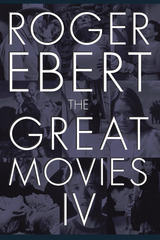 The Great Movies IV
Roger Ebert
University of Chicago Press, 2016 No film critic has ever been as influential—or as beloved— as Roger Ebert. Over more than four decades, he built a reputation writing reviews for the Chicago Sun-Times and, later, arguing onscreen with rival Chicago Tribune critic Gene Siskel and later Richard Roeper about the movies they loved and loathed. But Ebert went well beyond a mere “thumbs up” or “thumbs down.” Readers could always sense the man behind the words, a man with interests beyond film and a lifetime’s distilled wisdom about the larger world. Although the world lost one of its most important critics far too early, Ebert lives on in the minds of moviegoers today, who continually find themselves debating what he might have thought about a current movie.
The Great Movies IV is the fourth—and final—collection of Roger Ebert’s essays, comprising sixty-two reviews of films ranging from the silent era to the recent past. From films like The Cabinet of Caligari and Viridiana that have been considered canonical for decades to movies only recently recognized as masterpieces to Superman, The Big Lebowski, and Pink Floyd: The Wall, the pieces gathered here demonstrate the critical acumen seen in Ebert’s daily reviews and the more reflective and wide-ranging considerations that the longer format allowed him to offer. Ebert’s essays are joined here by an insightful foreword by film critic Matt Zoller Seitz, the current editor-in-chief of the official Roger Ebert website, and a touching introduction by Chaz Ebert.
A fitting capstone to a truly remarkable career, The Great Movies IV will introduce newcomers to some of the most exceptional movies ever made, while revealing new insights to connoisseurs as well.
The Great Name: Ancient Egyptian Royal Titulary
Ronald J. Leprohon
SBL Press, 2013 The titulary of the ancient Egyptian king was one of the symbols of authority he assumed at his coronation. At first consisting only of the Horus name, the titulary grew to include other phrases chosen to represent the king’s special relationship with the divine world. By the Middle Kingdom (late twenty-first century B.C.E.), the full fivefold titulary was clearly established, and kings henceforth used all five names regularly. This volume includes all rulers’ names from the so-called Dynasty 0 (ca. 3200 B.C.E.) to the last Ptolemaic ruler in the late first century B.C.E., offered in transliteration and English translation with an introduction and notes.
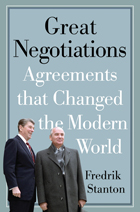 Great Negotiations: Agreements that Changed the Modern World
Fredrik Stanton
Westholme Publishing, 2010 Lessons in Diplomacy from Colonial America to the Cold War
"In a time when negotiations, both great and small, continue to shape our world, this book provides an excellent opportunity to learn from the past and understand the present.”—Kofi Annan, Nobel Peace Prize Winner and former Secretary General of the United Nations “A thought-provoking, informative book, highly recommended for all readers interested in international affairs.”—Library Journal “For anyone with an interest in diplomacy and political history, Stanton's book is both entertaining and informative.” —Foreign Policy Watch “Every professional concerned with dispute resolution and every student of negotiation has much to learn from Fredrik Stanton's lively stories of eight history-shaping negotiations.”—Robert H. Mnookin, Chair Program on Negotiation, Harvard Law School “An excellent introduction into some of the great triumphs and failures of modern diplomacy.”—Seattle Post-Intelligencer “An interesting, informative study well worth reading and pondering.” —American Diplomacy “Stanton deftly illustrates that the power of haggling can easily rival that of any army or warhead.”—Roll Call “Exhaustive research and careful thought have enabled Stanton to employ an extraordinary writing talent to produce a contribution to history and a source of enjoyable reading.”—New York Law Journal “Stanton brings back to life both famous and some long forgotten personalities in the history of major American, European, and Asian negotiations. He persuasively makes his case for the importance of negotiators and negotiations both when wars can be kept from beginning and when wars end. He weaves in deft descriptions of the personal strengths and foibles of negotiators and homes in on the ability of the best to improvise when maneuvering on unfamiliar terrain.” —Ambassador Richard W. Murphy, Council on Foreign Relations Words as much as weapons have shaped the course of history. Whether to avert, resolve, assist, or secure the outcome of a conflict, diplomacy in the modern age has had great triumphs and bitter failures, from the Cuban Missile Crisis in 1962, which narrowly spared humanity from a nuclear Armageddon, to the Treaty of Versailles after World War I, which created problems that still confront us today. Drawing on primary sources, transcripts, and interviews, Great Negotiations: Agreements that Changed the Modern World tells the stories of eight key episodes in modern diplomacy. From Benjamin Franklin securing crucial French support for the American revolution to Reagan and Gorbachev laying the groundwork to eliminate an entire class of nuclear weapons, Fredrik Stanton explains what each party brought to the negotiating table, the stakes, the obstacles to success, and how they were overcome.
 Great Old-Fashioned American Desserts
Beatrice Ojakangas
University of Minnesota Press, 2004 Delicious authentic recipes revised for the modern kitchen
Desserts have always been a fixture at the American table, inspiring pleasant lingering over a cup of coffee and just one more scrumptious bite. From colonial specialties to old-time country favorites, this book presents a complete collection of more than two hundred mouthwatering delights. Cooking expert Beatrice Ojakangas has researched original sources from across the country to recapture the delicious tastes of Lemon Icebox Cake, Applesauce Crisp, and Rhubarb-Strawberry Pie. Along with each recipe, Ojakangas shares fascinating stories and little-known facts about the history of the dessert. The recipes have been tested and updated for easy preparation with today’s ingredients and techniques, and this book also offers practical advice on buying fresh fruits and cooking pudding. From Yankee Apple Snow to Creole Sweet Potato Pie, Great Old-Fashioned American Desserts provides an enticing tour of the desserts of America’s rich food heritage.
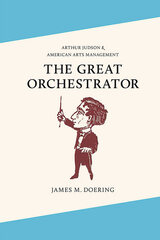 The Great Orchestrator: Arthur Judson and American Arts Management
James M. Doering
University of Illinois Press, 2013 This biography charts the career and legacy of the pioneering American music manager Arthur Judson (1881–1975), who rose to prominence in Philadelphia and New York at the beginning of the twentieth century. A violinist by training, Judson became manager of the Philadelphia Orchestra in 1915 under the iconic conductor Leopold Stokowski. Within a few years, Judson also took on management of the New York Philharmonic, navigating a period of change and the tenures of several important conductors who included William Mengelberg, Arturo Toscanini, and John Barbirolli. Judson also began managing individual artists, including pianists Alfred Cortot and Vladimir Horowitz, violinist Jasha Heifetz, and cellist Gregor Piatigorsky. He also organized the U.S. tours of several prominent composers, including Igor Stravinsky and Vincent d'Indy. At the same time, Judson began managing conductors. His first clients were Stokowski and Fritz Reiner. By the 1930s, Judson's conductor list included most of the important conductors working in America. Drawing on rich correspondence between Judson and the conductors and artists he served, James M. Doering demonstrates Judson's multifaceted roles, including involvement with programming choices, building audiences, negotiating with orchestra members and their unions, and exploring new technologies for extending the orchestras' reach. In addition to his colorful career behind the scenes at two preeminent American orchestras, Judson was important for a number of innovations in arts management. In 1922, he founded a nationwide network of local managers and later became involved in the relatively unexplored medium of radio, working first with WEAF in New York City and then later forming his own national radio network in 1927. Providing valuable insight into the workings of these orchestras and the formative years of arts management, The Great Orchestrator is a valuable portrait of one of the most powerful managers in American musical history.
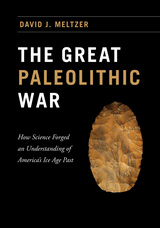 The Great Paleolithic War: How Science Forged an Understanding of America's Ice Age Past
David J. Meltzer
University of Chicago Press, 2015 Following the discovery in Europe in the late 1850s that humanity had roots predating known history and reaching deep into the Pleistocene era, scientists wondered whether North American prehistory might be just as ancient. And why not? The geological strata seemed exactly analogous between America and Europe, which would lead one to believe that North American humanity ought to be as old as the European variety. This idea set off an eager race for evidence of the people who might have occupied North America during the Ice Age—a long, and, as it turned out, bitter and controversial search.
In The Great Paleolithic War, David J. Meltzer tells the story of a scientific quest that set off one of the longest-running feuds in the history of American anthropology, one so vicious at times that anthropologists were deliberately frightened away from investigating potential sites. Through his book, we come to understand how and why this controversy developed and stubbornly persisted for as long as it did; and how, in the process, it revolutionized American archaeology.
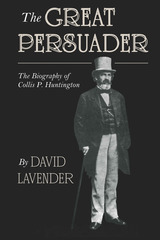 The Great Persuader: The Biography of Collis P. Huntington
David Lavender
University Press of Colorado, 1999 The Great Persuader is the biography of a robber baron, the greatest railroad mogul of them all-Collis P. Huntington, the Sacramento, California, storekeeper who, along with Leland Stanford and Mark Hopkins, parlayed $1,500 into America's first continental railroad. It is an almost unbelievable story of a high dream of fortune realized through highhanded practices-an adventure which left the national treasury poorer by millions of swindled dollars, and America itself richer by a national railroad system which contributed greatly to the country's westward expansion. How did Huntington operate? What were his methods? Was he corrupt? These are questions that were previously unanswered but thanks to the cooperation of the Huntington family who supplied Mr. Lavender with material that had never before been made public, Lavender shows just how Collis P. Huntington operated-and it was defintely outside the law, although well inside the prevailing morality of his time. It shows his complicated dealings with Sanford Hopkins, how he bested such tycoons as Thomas A. Scott, John C. Durrant, Oliver Ames and Jay Gould, how Huntington accumulated the great fortune which was the legacy to his family, and how his great railroad network was to prove an unparalleled legacy to all Americans. The Great Persuader is a powerful story of a remarkable man whose singleness of purpose and ruthless manipulation of men and money propelled the great enterprise forward against all odds.
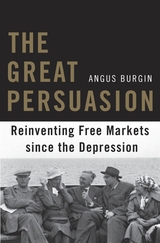 The Great Persuasion: Reinventing Free Markets since the Depression
Angus Burgin
Harvard University Press, 2012 Just as today's observers struggle to justify the workings of the free market in the wake of a global economic crisis, an earlier generation of economists revisited their worldviews following the Great Depression. The Great Persuasionis an intellectual history of that project. Angus Burgin traces the evolution of postwar economic thought in order to reconsider many of the most basic assumptions of our market-centered world.
Conservatives often point to Friedrich Hayek as the most influential defender of the free market. By examining the work of such organizations as the Mont Pèlerin Society, an international association founded by Hayek in 1947 and later led by Milton Friedman, Burgin reveals that Hayek and his colleagues were deeply conflicted about many of the enduring problems of capitalism. Far from adopting an uncompromising stance against the interventionist state, they developed a social philosophy that admitted significant constraints on the market. Postwar conservative thought was more dynamic and cosmopolitan than has previously been understood.
It was only in the 1960s and '70s that Friedman and his contemporaries developed a more strident defense of the unfettered market. Their arguments provided a rhetorical foundation for the resurgent conservatism of Barry Goldwater and Ronald Reagan and inspired much of the political and economic agenda of the United States in the ensuing decades. Burgin's brilliant inquiry uncovers both the origins of the contemporary enthusiasm for the free market and the moral quandaries it has left behind.
The Great Peshtigo Fire: An Eyewitness Account
Peter Pernin
Wisconsin Historical Society Press, 1999 Reverend Peter Pernin was the parish priest for Peshtigo and nearby Marinette, whose churches burned to the ground. He published his account of the fire in 1874. The late William Converse Haygood served as editor of the Wisconsin Magazine of History from 1957 to 1975. He prepared this version of Father Pernin's account on the occasion of the Peshtigo Fire's centennial in 1971. Foreword writer Stephen J. Pyne is a professor at Arizona State University in Tempe and author of numerous books on wildland fire, including Fire in America.
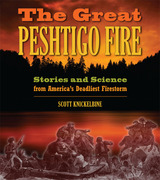 The Great Peshtigo Fire: Stories and Science from America’s Deadliest Fire
Scott Knickelbine
Wisconsin Historical Society Press, 2012 On the night of October 8, 1871, a whirlwind of fire swept through northeastern Wisconsin, destroying the bustling frontier town of Peshtigo. Trees, buildings, and people burst into flames. Metal melted. Sand turned into glass. People thought the end of the world had come. When the “tornado of fire” was over, 2,500 people were dead, and Peshtigo was nothing but a smoking ruin. It was the deadliest wildfire in U.S. history. The Great Peshtigo Fire: Stories and Science from America’s Deadliest Firestorm explores the history, science, and legacy of the 1871 Peshtigo Fire at a fourth-grade reading level. Readers will learn about the history of settlement, agriculture, and forestry in 19th-century Wisconsin. This illuminating text covers a diverse range of topics that will enrich the reader’s understanding of the Peshtigo Fire, including the building and land-use practices of the time that made the area ripe for such a fire, the weather patterns that fostered widespread fires throughout the upper Midwest in the summer and fall of 1871, and exciting first-person accounts that vividly bring the `victims’ stories to life. Connections made between the Peshtigo Fire and the history of fire prevention in the United States encourage critical thinking about issues that remain controversial to this day, such as planned burns and housing development restrictions near forested areas. The Great Peshtigo Fire: Stories and Science from America’s Deadliest Firestorm will inform and captivate its readers as it journeys through the horrifying history of the Peshtigo Fire.
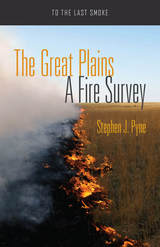 The Great Plains: A Fire Survey
Stephen J. Pyne
University of Arizona Press, 2017 Early descriptions of the Great Plains often focus on a vast, grassy expanse that was either burnt or burning. The scene continued to burn until the land was plowed under or grazed away and broken by innumerable roads and towns. Yet, where the original landscape has persisted, so has fire, and where people have sought to restore something of that original setting, they have had to reinstate fire. This has required the persistence or creation of a fire culture, which in turn inspired schools of science and art that make the Great Plains today a regional hearth for American fire. Volume 5 of To the Last Smoke introduces a region that once lay at the geographic heart of American fire, and today promises to reclaim something of that heritage. After all these years, the Great Plains continue to bear witness to how fires can shape contemporary life, and vice versa. In this collection of essays, Stephen J. Pyne explores how this once most regularly and widely burned province of North America, composed of various subregions and peoples, has been shaped by the flames contained within it and what fire, both tame and feral, might mean for the future of its landscapes. Included in this volume: - How wildland and rural fire have changed from the 19th century to the 21st century
- How fire is managed in the nation’s historic tallgrass prairies, from Texas to South Dakota, from Illinois to Nebraska
- How fire connects with other themes of Great Plains life and culture
- How and why Texas has returned to the national narrative of landscape fire
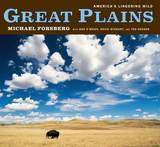 Great Plains: America's Lingering Wild
Michael Forsberg
University of Chicago Press, 2009 The Great Plains were once among the greatest grasslands on the planet. But as the United States and Canada grew westward, the Plains were plowed up, fenced in, overgrazed, and otherwise degraded. Today, this fragmented landscape is the most endangered and least protected ecosystem in North America. But all is not lost on the prairie. Through lyrical photographs, essays, historical images, and maps, this beautifully illustrated book gets beneath the surface of the Plains, revealing the lingering wild that still survives and whose diverse natural communities, native creatures, migratory traditions, and natural systems together create one vast and extraordinary whole. Three broad geographic regions in Great Plains are covered in detail, evoked in the unforgettable and often haunting images taken by Michael Forsberg. Between the fall of 2005 and the winter of 2008, Forsberg traveled roughly 100,000 miles across 12 states and three provinces, from southern Canada to northern Mexico, to complete the photographic fieldwork for this project, underwritten by The Nature Conservancy. Complementing Forsberg’s images and firsthand accounts are essays by Great Plains scholar David Wishart and acclaimed writer Dan O’Brien. Each section of the book begins with a thorough overview by Wishart, while O’Brien—a wildlife biologist and rancher as well as a writer—uses his powerful literary voice to put the Great Plains into a human context, connecting their natural history with man’s uses and abuses. The Great Plains are a dynamic but often forgotten landscape—overlooked, undervalued, misunderstood, and in desperate need of conservation. This book helps lead the way forward, informing and inspiring readers to recognize the wild spirit and splendor of this irreplaceable part of the planet.
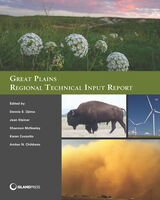 Great Plains Regional Technical Input Report
Dennis S. Ojima, Jean Steiner, Shannon McNeely, Karen Cozetto, and Amber N. Childress
Island Press, 2015 Prepared for the 2013 National Climate Assessment and a landmark study in terms of its breadth and depth of coverage, Great Plains Regional Technical Input Report is the result of a collaboration among numerous local, state, federal, and nongovernmental agencies to develop a comprehensive, state of the art look at the effects of climate change on the eight states that encompass the Great Plains region.
The Great Plains states are already experiencing the impacts of a changing climate, and will likely continue to experience warming temperatures, more extreme precipitation events, reduced snow and ice cover, and rising relative sea levels. The book presents a review of the historic, current, and projected future climate of the region; describes interactions with important sectors of the Northeast and examines cross-sectoral issues, namely climate change mitigation, adaptation, and education and outreach.
Rich in science and case studies, it examines the latest climate change impacts, scenarios, vulnerabilities, and adaptive capacity and offers decision makers and stakeholders a substantial basis from which to make informed choices that will affect the well-being of the region's inhabitants in the decades to come.
The Great Prince Died: A Novel about the Assassination of Trotsky
Bernard Wolfe
University of Chicago Press, 2015 On August 20, 1940, Marxist philosopher, politician, and revolutionary Leon Trotsky was attacked with an ice axe in his home in Coyoacán, Mexico. He died the next day.
In The Great Prince Died, Bernard Wolfe offers his lyrical, fictionalized account of Trotsky’s assassination as witnessed through the eyes of an array of characters: the young American student helping to translate the exiled Trotsky’s work (and to guard him), the Mexican police chief, a Rumanian revolutionary, the assassin and his handlers, a poor Mexican “peón,” and Trotsky himself. Drawing on his own experiences working as the exiled Trotsky’s secretary and bodyguard and mixing in digressions on Mexican culture, Stalinist tactics, and Bolshevik history, Wolfe interweaves fantasy and fact, delusion and journalistic reporting to create one of the great political novels of the past century.
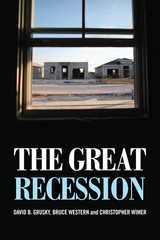 The Great Recession
David B. Grusky
Russell Sage Foundation, 2012 Officially over in 2009, the Great Recession is now generally acknowledged to be the most devastating global economic crisis since the Great Depression. As a result of the crisis, the United States lost more than 7.5 million jobs, and the unemployment rate doubled—peaking at more than 10 percent. The collapse of the housing market and subsequent equity market fluctuations delivered a one-two punch that destroyed trillions of dollars in personal wealth and made many Americans far less financially secure. Still reeling from these early shocks, the U.S. economy will undoubtedly take years to recover. Less clear, however, are the social effects of such economic hardship on a U.S. population accustomed to long periods of prosperity. How are Americans responding to these hard times? The Great Recession is the first authoritative assessment of how the aftershocks of the recession are affecting individuals and families, jobs, earnings and poverty, political and social attitudes, lifestyle and consumption practices, and charitable giving. Focused on individual-level effects rather than institutional causes, The Great Recession turns to leading experts to examine whether the economic aftermath caused by the recession is transforming how Americans live their lives, what they believe in, and the institutions they rely on. Contributors Michael Hout, Asaf Levanon, and Erin Cumberworth show how job loss during the recession—the worst since the 1980s—hit less-educated workers, men, immigrants, and factory and construction workers the hardest. Millions of lost industrial jobs are likely never to be recovered and where new jobs are appearing, they tend to be either high-skill positions or low-wage employment—offering few opportunities for the middle-class. Edward Wolff, Lindsay Owens, and Esra Burak examine the effects of the recession on housing and wealth for the very poor and the very rich. They find that while the richest Americans experienced the greatest absolute wealth loss, their resources enabled them to weather the crisis better than the young families, African Americans, and the middle class, who experienced the most disproportionate loss—including mortgage delinquencies, home foreclosures, and personal bankruptcies. Lane Kenworthy and Lindsay Owens ask whether this recession is producing enduring shifts in public opinion akin to those that followed the Great Depression. Surprisingly, they find no evidence of recession-induced attitude changes toward corporations, the government, perceptions of social justice, or policies aimed at aiding the poor. Similarly, Philip Morgan, Erin Cumberworth, and Christopher Wimer find no major recession effects on marriage, divorce, or cohabitation rates. They do find a decline in fertility rates, as well as increasing numbers of adult children returning home to the family nest—evidence that suggests deep pessimism about recovery. This protracted slump—marked by steep unemployment, profound destruction of wealth, and sluggish consumer activity—will likely continue for years to come, and more pronounced effects may surface down the road. The contributors note that, to date, this crisis has not yet generated broad shifts in lifestyle and attitudes. But by clarifying how the recession’s early impacts have—and have not—influenced our current economic and social landscape, The Great Recession establishes an important benchmark against which to measure future change.
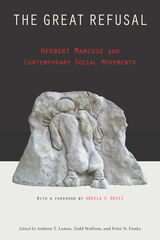 The Great Refusal: Herbert Marcuse and Contemporary Social Movements
Andrew Lamas
Temple University Press, 2016 Herbert Marcuse examined the subjective and material conditions of radical social change and developed the "Great Refusal," a radical concept of "the protest against that which is." The editors and contributors to the exciting new volume The Great Refusal provide an analysis of contemporary social movements around the world with particular reference to Marcuse's revolutionary concept. The book also engages-and puts Marcuse in critical dialogue with-major theorists including Slavoj Žižek and Michel Foucault, among others.
The chapters in this book analyze different elements and locations of the contemporary wave of struggle, drawing on the work and vision of Marcuse in order to reveal, with a historical perspective, the present moment of resistance. Essays seek to understand recent uprisings-such as the Zapatistas in Mexico, the Arab Spring, and the Occupy movement-in the context of Marcuse's powerful conceptual apparatus. The Great Refusal also charts contemporary social movements against global warming, mass incarceration, police brutality, white supremacy, militarization, technological development, and more, to provide insights that advance our understanding of resistance today. Contributors include: Kevin B. Anderson, Stanley Aronowitz, Joan Braune, Jenny Chan, Angela Y. Davis, Arnold L. Farr, Andrew Feenberg, Michael Forman, Christian Fuchs, Stefan Gandler, Christian Garland, Toorjo Ghose, Imaculada Kangussu, George Katsiaficas, Douglas Kellner, Sarah Lynn Kleeb, Filip Kovacevic, Lauren Langman, Heather Love, Peter Marcuse, Martin J. Beck Matuštík, Russell Rockwell, AK Thompson, Marcelo Vieta, and the editors.
 The Great Reporters
David Randall
Pluto Press, 2005 Who are the greatest reporters in history?
This unique book is the first to try and answer this question. Author David Randall searched nearly two centuries of newspapers and magazines, consulted editors and journalism experts worldwide, and the result is The Great Reporters---13 in-depth profiles of the best journalists who ever lived. They include nine Americans and four Britons, ten men and three women, whose lives were full of adventure, wit, and the considerable ingenuity required to bring the story home. Among chapters are those on the reporter who:
Booked himself onto a ship likely to be sunk by the Germans so he could report its torpedoing Was called out to a multiple shooting, who interviewed 50 witnesses, went back to the office, and wrote a Pulitzer Prize-winning story of 4,000 words in two and a half hours Was deemed useless by her teacher but who went on to become the greatest crime reporter in history Wrote a story that changed the map of Europe Out-bluffed a top Soviet official to get into Russia so he could cover the appalling famine there Feigned madness to get herself locked up in an asylum so she could expose its terrible conditions Was the best ever to apply words to newsprint Became a national hero in America because he stood up for the little guy and his war reporting told it like it really was At the age of 63, and after three major operations, went under-cover in Iran so she could report on the regime's repression Was nearly fired for fouling up his first major assignment, but went on to shock his nation with his courageous war reporting Wrote faster than anyone who could write better and better than anyone who could write faster Single-handedly took on the tobacco industry Said no to William Randolph Hearst
Each profile tells of the reporter's life and his or her major stories, how they were obtained, and their impact. Packed with anecdotes, and inspiring accounts of difficulties overcome, the book quotes extensively from each reporter's work. It also includes an essay on the history of reporting, charting the technologies, economics, and attitudes that made it the way it is---from the invention of the telegraph to the Internet. The Great Reporters is not just the story of 13 remarkable people, it is the story of how society's information hunter-gatherers succeed in bringing us all what we need to know.
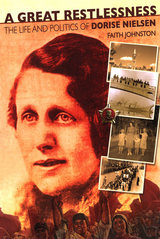 A Great Restlessness: The Life and Politics of Dorise Nielsen
Faith Johnston
University of Manitoba Press, 2006 Dorise Nielsen was a pioneering feminist, a radical politician, the first Communist elected to Canadaís House of Commons, and the only woman elected in 1940. But despite her remarkable career, until now little has been known about her.From her youth in London during World War I to her burial in 1980 in a heroís cemetery in China, Nielsen lived through tumultuous times. Struggling through the Great Depression as a homesteaderís wife in rural Saskatchewan, Nielsen rebelled against the poverty and injustice that surrounded her, and found like-minded activists in the CCF and the Communist Party of Canada. In 1940 when leaders of the Communist Party were either interned or underground, Nielsen became their voice in Parliament. But her activism came at a high price. As a single mother in Ottawa, she sacrificed a close relationship with her family for her career. As a woman in an emerging political organisation, her authority was increasingly usurped by younger male party members. As a committed communist, she moved to Mao's China in 1957 and dedicated her lifeís work to a cause that went seriously awry.Faith Johnston illuminates the life of a woman who paved the way for a generation of women in politics, who tried to be both a good mother and a good revolutionary, and who refused to give up on either.
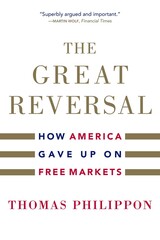 The Great Reversal: How America Gave Up on Free Markets
Thomas Philippon
Harvard University Press, 2019 A Financial Times Book of the Year
A ProMarket Book of the Year
“Superbly argued and important…Donald Trump is in so many ways a product of the defective capitalism described in The Great Reversal. What the U.S. needs, instead, is another Teddy Roosevelt and his energetic trust-busting. Is that still imaginable? All believers in the virtues of competitive capitalism must hope so.”
—Martin Wolf, Financial Times
“In one industry after another…a few companies have grown so large that they have the power to keep prices high and wages low. It’s great for those corporations—and bad for almost everyone else.”
—David Leonhardt, New York Times
“Argues that the United States has much to gain by reforming how domestic markets work but also much to regain—a vitality that has been lost since the Reagan years…His analysis points to one way of making America great again: restoring our free-market competitiveness.”
—Arthur Herman, Wall Street Journal
Why are cell-phone plans so much more expensive in the United States than in Europe? It seems a simple question, but the search for an answer took one of the world’s leading economists on an unexpected journey through some of the most hotly debated issues in his field. He reached a surprising conclusion: American markets, once a model for the world, are giving up on healthy competition.
In the age of Silicon Valley start-ups and millennial millionaires, he hardly expected this. But the data from his cutting-edge research proved undeniable. In this compelling tale of economic detective work, we follow Thomas Philippon as he works out the facts and consequences of industry concentration, shows how lobbying and campaign contributions have defanged antitrust regulators, and considers what all this means. Philippon argues that many key problems of the American economy are due not to the flaws of capitalism or globalization but to the concentration of corporate power. By lobbying against competition, the biggest firms drive profits higher while depressing wages and limiting opportunities for investment, innovation, and growth. For the sake of ordinary Americans, he concludes, government needs to get back to what it once did best: keeping the playing field level for competition. It’s time to make American markets great—and free—again.
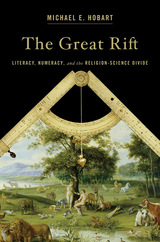 The Great Rift: Literacy, Numeracy, and the Religion-Science Divide
Michael E. Hobart
Harvard University Press, 2018 In their search for truth, contemporary religious believers and modern scientific investigators hold many values in common. But in their approaches, they express two fundamentally different conceptions of how to understand and represent the world. Michael E. Hobart looks for the origin of this difference in the work of Renaissance thinkers who invented a revolutionary mathematical system—relational numeracy. By creating meaning through numbers and abstract symbols rather than words, relational numeracy allowed inquisitive minds to vault beyond the constraints of language and explore the natural world with a fresh interpretive vision.
The Great Rift is the first book to examine the religion-science divide through the history of information technology. Hobart follows numeracy as it emerged from the practical counting systems of merchants, the abstract notations of musicians, the linear perspective of artists, and the calendars and clocks of astronomers. As the technology of the alphabet and of mere counting gave way to abstract symbols, the earlier “thing-mathematics” metamorphosed into the relational mathematics of modern scientific investigation. Using these new information symbols, Galileo and his contemporaries mathematized motion and matter, separating the demonstrations of science from the linguistic logic of religious narration.
Hobart locates the great rift between science and religion not in ideological disagreement but in advances in mathematics and symbolic representation that opened new windows onto nature. In so doing, he connects the cognitive breakthroughs of the past with intellectual debates ongoing in the twenty-first century.
The Great Salt Lake
Dale L. Morgan
University of Utah Press, 2002 After the passage of nearly a half-century, this book remains both one of the most informative and readable general histories of Utah yet written and a tribute to the brilliance of its author, the late Dale Morgan (1914-71).
Approached as history, geography, geology, or high adventure, The Great Salt Lake is fascinating reading. From the first Americans, through mountain men, religious empires, railroads, and resorts, the remnant of ancient Lake Bonneville has been a nexus for human history, uniting a haunting beauty with raw desolation, 'strangely removed from common experience.'
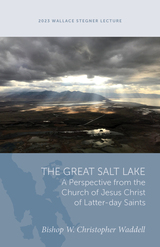 Great Salt Lake: A Perspective from the Church of Jesus Christ of Latter-day Saints
Bishop W. Christopher Waddell
University of Utah Press, 2024 The Great Salt Lake is deeply tied to the identity and history of the Church of Jesus Christ of Latter-day Saints. As Latter-day Saints settled in the Great Basin, they relied on the Great Salt Lake for industry and recreation. Bishop W. Christopher Waddell explains that today, given the crisis faced by the lake, leaders of the LDS Church consider preserving the Great Salt Lake to be a sacred duty to care for God’s creations and a “critical issue for our state and citizens of Utah.” The LDS Church strives to positively impact the lake and continually improve its water-wise practices by working with local and community leaders, reducing water use at meetinghouses and facilities by utilizing sustainable landscaping principles and effective water management, and donating permanent water shares that will preserve water currently flowing into the lake in perpetuity.
The Great Salt Lake Food Chains: Fragility and Resiliency
Bonnie K. Baxter
University of Utah Press, 2024 Bonnie K. Baxter explains the trophic structure of Great Salt Lake food chains and resulting impacts from recent years of a shrinking lake and corresponding increases in salinity. Moving from the foundational organisms to brine shrimp, flies, and ten million birds reliant on the lake, Baxter illuminates how salinity and desiccation can affect each level of a complex ecosystem. Presented in the context of current science, she explores the pressures of persistent water diversions and climate change and provides a cautionary tale of a lake on the brink of collapse. Baxter’s hopeful tone, sounding the lake ecosystem’s inherent resiliency, is a welcome voice in the climate conversation and a plea to help save a lake that can survive with a little help from its human neighbors.
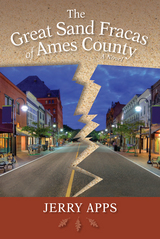 The Great Sand Fracas of Ames County: A Novel
Jerry Apps
University of Wisconsin Press, 2014 When the Alstage Mining Company proposes a frac sand mine in the small Ames County village of Link Lake, events quickly escalate to a crisis. Business leader Marilyn Jones of the Link Lake Economic Development Council heads the pro-mine forces, citing needed jobs and income for the county. Octogenarian Emily Higgins and other Link Lake Historical Society members are aghast at the proposed mine location in the community park, where a huge and ancient bur oak—the historic Trail Marker Oak—has stood since it pointed the way along an old Menominee trail. Reluctantly caught in the middle of the fray is Ambrose Adler, a reclusive, retired farmer with a secret.
Soon the fracas over frac sand attracts some national attention, including that of Stony Field, the pen name of a nationally syndicated columnist. Will the village board vote to solve their budget problems with a cut of the mining profits? Will the mine create real jobs for local folks? Will Stony Field come to the village to lead protests against the mine? And will defenders of the Trail Marker Oak literally draw a battle line in the sand?
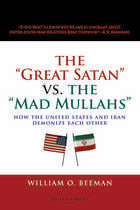 The Great Satan vs. the Mad Mullahs: How the United States and Iran Demonize Each Other
William O. Beeman
University of Chicago Press, 2008 For more than twenty-five years, the United States and Iran have been diplomatically estranged, each characterizing the other not only as a political adversary, but also as devious, threatening, and essentially evil. According to William O. Beeman’s provocative book, The “Great Satan” vs. the “Mad Mullahs,” such demonization is a self-fulfilling prophecy, as both countries have embraced exactly the policies and rhetoric that would particularly threaten or insult the other. Drawing on his experience as a linguistic anthropologist, Beeman parses how political leaders have used historical references, religious associations, and the mythology of evil to inflame their own citizens against the foreign country, and proposes a way out of this dangerous debacle.
“William Beeman’s analysis of dissonant perceptions of Iran and the USA is compelling and important. . . . I am particularly grateful for this work.”—James Peacock, University of North Carolina at Chapel Hill
“[Beeman] is more interested in informing the reader than in impressing his peers. The other strength of the book lies in the author’s knowledge of Iranian history and culture. . . . It challenges the reader and forces him to question stereotypes about Iran and Washington’s perspective on the country.”—Abbas William Samii, Middle East Journal
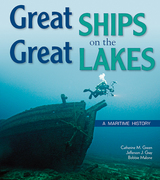 Great Ships on the Great Lakes: A Maritime History
Bobbie Malone
Wisconsin Historical Society Press, 2013 In this highly accessible history of ships and shipping on the Great Lakes, upper elementary readers are taken on a rip-roaring journey through the waterways of the upper Midwest. Great Ships on the Great Lakes explores the history of the region’s rivers, lakes, and inland seas—and the people and ships who navigated them. Read along as the first peoples paddle tributaries in birch bark canoes. Follow as European voyageurs pilot rivers and lakes to get beaver pelts back to the eastern market. Watch as settlers build towns and eventually cities on the shores of the Great Lakes. Listen to the stories of sailors, lighthouse keepers, and shipping agents whose livelihoods depended on the dangerous waters of Lake Michigan, Superior, Huron, Erie, and Ontario. Give an ear to their stories of unexpected tragedy and miraculous rescue, and heed their tales of risk and reward on the low seas. Great Ships also tells the story of sea battles and gunships, of the first vessels to travel beyond the Niagara, and of the treacherous storms and cold weather that caused thousands of ships to sink in the Great Lakes. Watch as underwater archaeologists solve the mysteries of Great Lakes shipwrecks today. And learn how the shift from sail to steam forever changed the history of shipping, as schooners made way for steamships and bulk freighters, and sailing became a recreation, not a hazardous way of life. Designed for the upper elementary classroom with emphasis on Michigan and Wisconsin, Great Ships on the Great Lakes includes a timeline of events, on-page vocabulary, and a list of resources and places to visit. Over 20 maps highlight the region’s maritime history. The accompanying Teacher’s Guide includes 18 classroom activities, arranged by chapter, including lessons on exploring shipwrecks and learning how glaciers moved across the landscape.
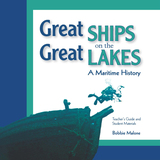 Great Ships on the Great Lakes Teacher's Guide: A Maritime History
Cathy Green
Wisconsin Historical Society Press, 2013 n this highly accessible history of ships and shipping on the Great Lakes, upper elementary readers are taken on a rip-roaring journey through the waterways of the upper Midwest.
Great Ships on the Great Lakes explores the history of the region’s rivers, lakes, and inland seas—and the people and ships who navigated them. Read along as the first peoples paddle tributaries in birch bark canoes. Follow as European voyageurs pilot rivers and lakes to get beaver pelts back to the eastern market. Watch as settlers build towns and eventually cities on the shores of the Great Lakes. Listen to the stories of sailors, lighthouse keepers, and shipping agents whose livelihoods depended on the dangerous waters of Lake Michigan, Superior, Huron, Erie, and Ontario. Give an ear to their stories of unexpected tragedy and miraculous rescue, and heed their tales of risk and reward on the low seas.
Great Ships also tells the story of sea battles and gunships, of the first vessels to travel beyond the Niagara, and of the treacherous storms and cold weather that caused thousands of ships to sink in the Great Lakes. Watch as underwater archaeologists solve the mysteries of Great Lakes shipwrecks today. And learn how the shift from sail to steam forever changed the history of shipping, as schooners made way for steamships and bulk freighters, and sailing became a recreation, not a hazardous way of life.
Designed for the upper elementary classroom with emphasis on Michigan and Wisconsin, Great Ships on the Great Lakes includes a timeline of events, on-page vocabulary, and a list of resources and places to visit. Over 20 maps highlight the region’s maritime history. The accompanying Teacher’s Guide includes 18 classroom activities, arranged by chapter, including lessons on exploring shipwrecks and learning how glaciers moved across the landscape.
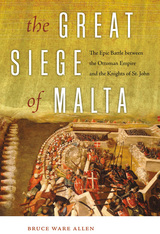 The Great Siege of Malta: The Epic Battle between the Ottoman Empire and the Knights of St. John
Bruce Ware Allen
University Press of New England, 2017 In the spring of 1565, a massive fleet of Ottoman ships descended on Malta, a small island centrally located between North Africa and Sicily, home and headquarters of the crusading Knights of St. John and their charismatic Grand Master, Jean de Valette. The Knights had been expelled from Rhodes by the Ottoman sultan, Suleiman the Magnificent, and now stood as the last bastion against a Muslim invasion of Sicily, southern Italy, and beyond. The siege force of Turks, Arabs, and Barbary corsairs from across the Muslim world outnumbered the defenders of Malta many times over, and its arrival began a long hot summer of bloody combat, often hand to hand, embroiling knights and mercenaries, civilians and slaves, in a desperate struggle for this pivotal point in the Mediterranean. Bruce Ware Allen's The Great Siege of Malta describes the siege’s geopolitical context, explains its strategies and tactics, and reveals how the all-too-human personalities of both Muslim and Christian leaders shaped the course of events. The siege of Malta was the Ottoman empire’s high-water mark in the war between the Christian West and the Muslim East for control of the Mediterranean. Drawing on copious research and new source material, Allen stirringly recreates the two factions’ heroism and chivalry, while simultaneously tracing the barbarism, severity, and indifference to suffering of sixteenth-century warfare. The Great Siege of Malta is a fresh, vivid retelling of one of the most famous battles of the early modern world—a battle whose echoes are still felt today.
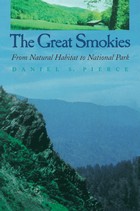 Great Smokies: From Natural Habitat To National Park
Daniel S. Pierce
University of Tennessee Press, 2000 Seeking a taste of unspoiled wilderness, more than eight million people visit the Great Smoky Mountains National Park each year. Yet few probably realize what makes the park unusual: it was the result of efforts to reclaim wilderness rather than to protect undeveloped land.
The Smokies have, in fact, been a human habitat for 8,000 years, and that contact has molded the landscape as surely as natural forces have. In this book, Daniel S. Pierce examines land use in the Smokies over the centuries, describing the pageant of peoples who have inhabited these mountains and then focusing on the twentieth-century movement to create a national park.
Drawing on previously unexplored archival materials, Pierce presents the most balanced account available of the development of the park. He tells how park supporters set about raising money to buy the land—often from resistant timber companies—and describes the fierce infighting between wilderness advocates and tourism boosters over the shape the park would take. He also discloses the unfortunate human cost of the park’s creation: the displacement of the area’s inhabitants.
Pierce is especially insightful regarding the often-neglected history of the park since 1945. He looks at the problems caused by roadbuilding, tree blight, and air pollution that becomes trapped in the mountains’ natural haze. He also provides astute assessments of the Cades Cove restoration, the Fontana Lake road construction, and other recent developments involving the park.
Full of outstanding photographs and boasting a breadth of coverage unmatched in other books of its kind, The Great Smokies will help visitors better appreciate the wilderness experience they have sought. Pierce’s account makes us more aware of humanity's long interaction with the land while capturing the spirit of those idealistic environmentalists who realized their vision to protect it.
The Author: Daniel S. Pierce teaches in the department of history and the humanities program at the University of North Carolina, Asheville, and is a contributor to The Tennessee Encyclopedia of History and Culture.
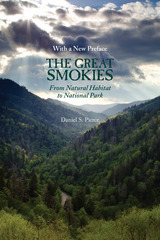 The Great Smokies: From Natural Habitat To National Park
Daniel S. Pierce
University of Tennessee Press, 2000 Seeking a taste of unspoiled wilderness, more than eight million people visit the Great Smoky Mountains National Park each year. Yet few probably realize what makes the park unusual: it was the result of efforts to reclaim wilderness rather than to protect undeveloped land.
The Smokies have, in fact, been a human habitat for 8,000 years, and that contact has molded the landscape as surely as natural forces have. In this book, Daniel S. Pierce examines land use in the Smokies over the centuries, describing the pageant of peoples who have inhabited these mountains and then focusing on the twentieth-century movement to create a national park.
Drawing on previously unexplored archival materials, Pierce presents the most balanced account available of the development of the park. He tells how park supporters set about raising money to buy the land—often from resistant timber companies—and describes the fierce infighting between wilderness advocates and tourism boosters over the shape the park would take. He also discloses the unfortunate human cost of the park’s creation: the displacement of the area’s inhabitants.
Pierce is especially insightful regarding the often-neglected history of the park since 1945. He looks at the problems caused by roadbuilding, tree blight, and air pollution that becomes trapped in the mountains’ natural haze. He also provides astute assessments of the Cades Cove restoration, the Fontana Lake road construction, and other recent developments involving the park.
Full of outstanding photographs and boasting a breadth of coverage unmatched in other books of its kind, The Great Smokies will help visitors better appreciate the wilderness experience they have sought. Pierce’s account makes us more aware of humanity's long interaction with the land while capturing the spirit of those idealistic environmentalists who realized their vision to protect it.
The Author: Daniel S. Pierce teaches in the department of history and the humanities program at the University of North Carolina, Asheville, and is a contributor to The Tennessee Encyclopedia of History and Culture.
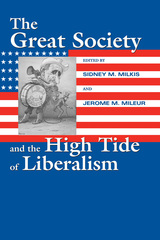 The Great Society and the High Tide of Liberalism
Sidney M. Milkis
University of Massachusetts Press, 2005 The long era of liberal reform that began with the Progressive movement of the early twentieth century and continued with the New Deal, culminated in the 1960s with Lyndon Johnson's Great Society. Inspired by the example of his mentor, Franklin Roosevelt, Johnson sought to extend the agenda of the New Deal beyond the realm of economic security to civil rights, housing, education, and health care. In the end, however, his bold ambitions for a Great Society, initiated against the backdrop of an increasingly costly and divisive war, fueled a conservative backlash and undermined faith in liberalism itself.
In this volume of original essays, a distinguished group of scholars and activists reassess the mixed legacy of this third major reform period of the last century. They examine not only the policies and programs that were part of LBJ's Great Society, but also the underlying ideological and political shifts that changed the nature of liberalism. Some of the essays focus on Lyndon Johnson himself and the institution of the modern presidency, others on specific reform measures, and still others on the impact of these initiatives in the decades that followed. Perspectives, methodologies, and conclusions differ, yet all of the contributors agree that the Great Society represented an important chapter in the story of the American republic and its ongoing struggle to reconcile the power of the state with the rights of individuals—a struggle that has continued into the twenty-first century.
In addition to the editors, contributors include Henry J. Abraham, Brian Balogh, Rosalyn Baxandall, Edward Berkowitz, Eileen Boris, Richard A. Cloward, Hugh Davis Graham, Hugh Heclo, Frederick Hess, William E. Leuchtenburg, Nelson Lichtenstein, Patrick McGuinn, Wilson Carey McWilliams, R. Shep Melnick, Frances Fox Piven, and David M. Shribman.
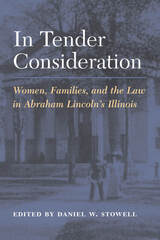 The Great Strikes of 1877
Edited by David O. Stowell
University of Illinois Press, 2007 A spectacular example of collective protest, the Great Strike of 1877--actually a sequence of related actions--was America's first national strike and the first major strike against the railroad industry. In some places, non-railroad workers also abandoned city businesses, creating one of the nation's first general strikes. Mobilizing hundreds of thousands of workers, the Great Strikes of 1877 transformed the nation's political landscape, shifting the primary political focus from Reconstruction to labor, capital, and the changing role of the state. Probing essays by distinguished historians explore the social, political, regional, and ethnic landscape of the Great Strikes of 1877: long-term effects on state militias and national guard units; ethnic and class characterization of strikers; pictorial representations of poor laborers in the press; organizational strategies employed by railroad workers; participation by blacks; violence against Chinese immigrants; and the developing tension between capitalism and racial equality in the United States. Contributors: Joshua Brown, Steven J. Hoffman, Michael Kazin, David Miller, Richard Schneirov, David O. Stowell, and Shelton Stromquist.
The Great Succession: Henry James and the Legacy of Hawthorne
Robert Emmet Long
University of Pittsburgh Press, 1979
The first book devoted to the literary relationship between Henry James and his American predecessor, Nathaniel Hwthorne. Robert Emmet Long demonstrates James’ transformation of Hawthorne’s romantic forms into realism, as one of the significant features of James’ early career. Long shows that Hawthorne provided James ith a native tradition having its own conceptions of American psychological experience.
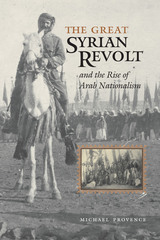 The Great Syrian Revolt and the Rise of Arab Nationalism
By Michael Provence
University of Texas Press, 2005 The Great Syrian Revolt of 1925 was the largest and longest-lasting anti-colonial insurgency in the inter-war Arab East. Mobilizing peasants, workers, and army veterans, rather than urban elites and nationalist intellectuals, it was the first mass movement against colonial rule in the Middle East. The revolt failed to liberate Syria from French occupation, but it provided a model of popular nationalism and resistance that remains potent in the Middle East today. Each subsequent Arab uprising against foreign rule has repeated the language and tactics of the Great Syrian Revolt. In this work, Michael Provence uses newly released secret colonial intelligence sources, neglected memoirs, and popular memory to tell the story of the revolt from the perspective of its participants. He shows how Ottoman-subsidized military education created a generation of leaders of modest background who came to rebel against both the French Mandate rulers of Syria and the Syrian intellectuals and landowners who helped the colonial regime to function. This new popular nationalism was unprecedented in the Arab world. Provence shows compellingly that the Great Syrian Revolt was a formative event in shaping the modern Middle East.
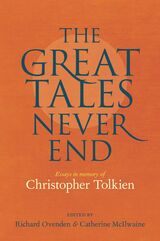 The Great Tales Never End: Essays in Memory of Christopher Tolkien
Edited by Richard Ovenden and Catherine McIlwaine
Bodleian Library Publishing, 2022 This collection of essays, family stories, and archival documents sheds new light on Christopher Tolkien’s contributions to the Tolkien legendarium.
Over more than four decades, J. R. R. Tolkien’s son and literary executor Christopher Tolkien completed some twenty-four volumes of his father’s work, much more than his father had succeeded in publishing during his own lifetime. Thanks to Christopher’s extraordinary publishing efforts and scholarship, readers today can survey and understand the vast landscape of Tolkien’s legendarium.
The Great Tales Never End sheds new light on J. R. R. Tolkien’s work and the debt owed to Christopher by the many Tolkien scholars who were privileged to work with him. Essays by world-renowned scholars and Tolkien family reminiscences offer unique insights into the publication process. What was Tolkien’s intended ending for The Lord of the Rings, and did it leave echoes in the stripped-down version that was actually published? What was the audience’s response to the first-ever adaptation of The Lord of the Rings—a radio dramatization that has now been deleted forever from the BBC’s archives?
The book is illustrated with color reproductions of J. R. R. Tolkien’s manuscripts, maps, drawings, and letters, as well as photographs of Christopher Tolkien and extracts from his works. Many of these documents have never been seen before, making this volume essential reading for Tolkien scholars, readers, and fans.
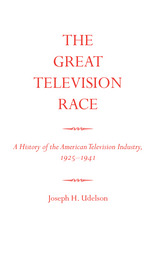 The Great Television Race: A History of the American Television Industry, 1925-1941
Joseph H. Udelson
University of Alabama Press, 1989 Television was first successfully demonstrated in 1925; and in 1941 the Federal Communications Commission authorized commercial telecasting in the United States. During the intervening sixteen years the technology of television had been revolutionized, and there had been created an integrated television system. These developments were accomplished amid intense engineering and corporate rivalries of international scope. The result of this competition was the formation of the American television industry composed of three distinct systems: the engineering, the programming, and the promotional. The industry had already reached maturity by the eve of the Second World War, and only the world-wide wartime disruptions prevented its immediate marketing. The author has utilized a broad range of original sources in order to trace the American television industry from its inception until its commercialization. He demonstrates that the present monochromatic television standards, programming potentials, networking requirements, commercial promotion, and audience research have been the results of incremental achievements accomplished prior to America’s entry into World War II. He analyzes the engineering processes and describes the corporate jockeying for position in the infant industry; and he demonstrates the prominent role played by the federal government in the history of the entire enterprise.
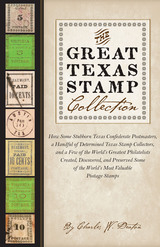 The Great Texas Stamp Collection: How Some Stubborn Texas Confederate Postmasters, a Handful of Determined Texas Stamp Collectors, and a Few of the World's Greatest Philatelists Created, Discovered, and Preserved Some of the World's Most Valuable Postage Stamps
By Charles W. Deaton
University of Texas Press, 2012 Among the many difficulties the newly formed Confederate States of America endured in the summer of 1861 was the failure of its post office department to provide sufficient numbers of that item most crucial to its service: the postage stamp. Faced with the resulting din of customer complaints, a handful of industrious Texas postmasters solved the problem by simply making their own homemade stamps. In this thoroughly researched history of these rare and highly coveted stamps, The Great Texas Stamp Collection traces their journey from creation through their rediscovery years later by local, and then international, stamp collectors—a journey that culminated in the sale of a few pieces at a recent auction in New York that fetched more than $250,000. Weaving the larger contexts of Texas and U.S. postal history together with individual tales of greed, intrigue, forgery, and discovery, Deaton’s book is rich with characters from European royalty to early stamp dealers to common criminals, while also providing detailed examinations of the stamps themselves, including a complete census of the stamps now known as the Texas Confederate Postmasters’ Provisionals. Appealing at once to devoted philatelists, Texas and U.S. history buffs, and amateur collectors of all kinds, The Great Texas Stamp Collection offers a unique vantage point from which to view our history as well as the very nature of collecting.
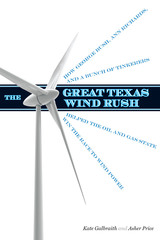 The Great Texas Wind Rush: How George Bush, Ann Richards, and a Bunch of Tinkerers Helped the Oil and Gas State Win the Race to Wind Power
By Kate Galbraith and Asher Price
University of Texas Press, 2013 In the late 1990s, West Texas was full of rundown towns and pumpjacks, aging reminders of the oil rush of an earlier era. Today, the towns are thriving as 300-foot-tall wind turbines tower above those pumpjacks. Wind energy has become Texas’s latest boom, with the Lone Star State now leading the nation. How did this dramatic transformation happen in a place that fights federal environmental policies at every turn? In The Great Texas Wind Rush, environmental reporters Kate Galbraith and Asher Price tell the compelling story of a group of unlikely dreamers and innovators, politicos and profiteers. The tale spans a generation and more, and it begins with the early wind pioneers, precocious idealists who saw opportunity after the 1970s oil crisis. Operating in an economy accustomed to exploiting natural resources and always looking for the next big thing, their ideas eventually led to surprising partnerships between entrepreneurs and environmentalists, as everyone from Enron executives to T. Boone Pickens, as well as Ann Richards, George W. Bush and Rick Perry, ended up backing the new technology. In this down-to-earth account, the authors explain the policies and science that propelled the “windcatters” to reap the great harvest of Texas wind. They also explore what the future holds for this relentless resource that is changing the face of Texas energy.
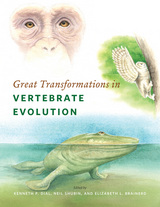 Great Transformations in Vertebrate Evolution
Edited by Kenneth P. Dial, Neil Shubin, and Elizabeth L. Brainerd
University of Chicago Press, 2015 How did flying birds evolve from running dinosaurs, terrestrial trotting tetrapods evolve from swimming fish, and whales return to swim in the sea? These are some of the great transformations in the 500-million-year history of vertebrate life. And with the aid of new techniques and approaches across a range of fields—work spanning multiple levels of biological organization from DNA sequences to organs and the physiology and ecology of whole organisms—we are now beginning to unravel the confounding evolutionary mysteries contained in the structure, genes, and fossil record of every living species.
This book gathers a diverse team of renowned scientists to capture the excitement of these new discoveries in a collection that is both accessible to students and an important contribution to the future of its field. Marshaling a range of disciplines—from paleobiology to phylogenetics, developmental biology, ecology, and evolutionary biology—the contributors attack particular transformations in the head and neck, trunk, appendages such as fins and limbs, and the whole body, as well as offer synthetic perspectives. Illustrated throughout, Great Transformations in Vertebrate Evolution not only reveals the true origins of whales with legs, fish with elbows, wrists, and necks, and feathered dinosaurs, but also the relevance to our lives today of these extraordinary narratives of change.
 The Great University Gamble: Money, Markets and the Future of Higher Education
Andrew McGettigan
Pluto Press, 2013 In 2010 the UK government imposed huge cuts and market-driven reforms on higher education. Proposals to raise undergraduate tuition fees provoked the angriest protests for decades. This academic year has seen the first cohort of students begin study under the new arrangements. A proposed Higher Education Bill has been shelved, but changes are being cemented and extended through other means.
Displaying a stunning grasp of the financial and policy details, Andrew McGettigan surveys the emerging brave new world of higher education. He looks at the big questions: What will be the role of universities within society? How will they be funded? What kind of experiences will they offer students? Where does the public interest lie?
Written in a clear and accessible style, The Great University Gamble outlines the architecture of the new policy regime and tracks the developments on the ground. It is an urgent warning that our universities and colleges are now open to commercial pressures, which threaten to transform education from a public good into a private, individual financial investment.
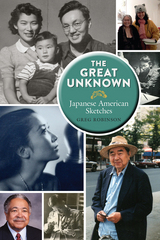 The Great Unknown: Japanese American Sketches
Greg Robinson
University Press of Colorado, 2016 In TheGreat Unknown, award-winning historian and journalist Greg Robinson offers a fascinating and compulsively readable collection of biographical portraits of extraordinary but unheralded figures in Japanese American history: men and women who made remarkable contributions in the arts, literature, law, sports, and other fields. Recovering and celebrating the stories of noteworthy Issei and Nisei and of their supporters, TheGreat Unknown provides powerful evidence of the diverse experiences and substantial cultural, political, and intellectual contributions of Nikkei throughout the country and over multiple decades.
What is more, The Great Unknown reshapes our understanding of the Asian American experience. By focusing attention on exceptional figures who deviated from social norms, Robinson subverts stereotypes of ethnic Japanese and other Asians as conformist or colorless. The collection also highlights a set of recurring themes absent from conventional histories—including the lives of Japanese Americans outside the West Coast, the role of women in shaping community life, encounters between Japanese American and African American communities during the struggle for civil rights, and the evolving status of queer community members.
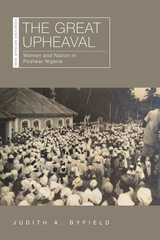 The Great Upheaval: Women and Nation in Postwar Nigeria
Judith A. Byfield
Ohio University Press, 2021 This social and intellectual history of women’s political activism in postwar Nigeria reveals the importance of gender to the study of nationalism and poses new questions about Nigeria’s colonial past and independent future. In the years following World War II, the women of Abeokuta, Nigeria, staged a successful tax revolt that led to the formation first of the Abeokuta Women’s Union and then of Nigeria’s first national women’s organization, the Nigerian Women’s Union, in 1949. These organizations became central to a new political vision, a way for women across Nigeria to define their interests, desires, and needs while fulfilling the obligations and responsibilities of citizenship. In The Great Upheaval, Judith A. Byfield has crafted a finely textured social and intellectual history of gender and nation making that not only tells a story of women’s postwar activism but also grounds it in a nuanced account of the complex tax system that generated the “upheaval.” Byfield captures the dynamism of women’s political engagement in Nigeria’s postwar period and illuminates the centrality of gender to the study of nationalism. She thus offers new lines of inquiry into the late colonial era and its consequences for the future Nigerian state. Ultimately, she challenges readers to problematize the collapse of her female subjects' greatest aspiration, universal franchise, when the country achieved independence in 1960.
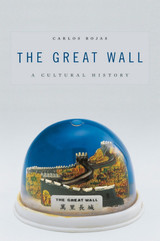 The Great Wall: A Cultural History
Carlos Rojas
Harvard University Press, 2010 Carlos Rojas presents a sweeping survey of the historical and political significance of one of the world’s most recognizable monuments. Although the splendor of the Great Wall has become virtually synonymous with its vast size, the structure’s conceptual coherence is actually grounded on the tenuous and ephemeral stories we tell about it. These stories give life to the Wall and help secure its hold on our collective imagination, while at the same time permitting it to constantly reinvent itself in accordance with the needs of each new era.
Through an examination of allusions to the Wall in an eclectic array of texts—ranging from official dynastic histories, elite poetry, and popular folktales, to contemporary tourist testimonials, children’s songs, and avant-garde performance art—this study maps out a provocative new framework for understanding the structure’s function and significance.
This volume approaches the Wall through the stories we tell and contends that it is precisely in this cultural history that we may find the Wall’s true meaning, together with the secret of its greatness.
“A Great Wall”: A Learning Guide
Jing-heng Ma
University of Michigan Press, 1993 Filmed in China, the Peter Wang motion picture A Great Wall chronicles the experiences of a Chinese-American family during an extended visit with relatives in Beijing. Entertaining and rich in cross-cultural insights, the film is well suited both for teaching Chinese language and culture and for stimulating class discussion. This learning guide is prepared especially for students at an intermediate level. Prerequisite to its use is proficiency in the basics of Chinese grammar and vocabulary. The text has been divided into ten sections for convenient study, with each section containing a portion of the script, a list of new vocabulary words for each scene in that section, sample sentences for the vocabulary, and exercises. [v]
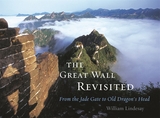 The Great Wall Revisited: From the Jade Gate to Old Dragon's Head
William Lindesay
Harvard University Press, 2008 A journey along the Great Wall in the past and present, this landmark volume offers an extraordinary portrait of perhaps the world’s most famous structure. Carrying his camera and a file of vintage photographs—the earliest dating from 1871—author-photographer William Lindesay traveled across Northern China for three years, searching for settings where the Great Wall could be examined in the past and present, side by side. The result, The Great Wall Revisited, presents seventy-two of the most elucidating then- and-now comparisons. This glossy dossier opens out as an extraordinary journey from the Jade Gate in northwest China’s Gobi Desert to Old Dragon’s Head on the Yellow Sea.
Far more than a romantic look at the Great Wall of yesteryear, this stunning, artfully crafted volume also contains concise histories of the sites that Lindesay’s images revisit. Colorful literary impressions composed by earlier visitors, juxtaposed with contemporary eyewitness accounts of change traced along the Wall, afford a sense of history unfolding and time inexorably creeping along the contours of this enduring monument to human ingenuity.
 Great Walls of Discourse and Other Adventures in Cultural China
Haun Saussy
Harvard University Press, 2001 "China" and "the West," "us" and "them," the "subject" and the "non-subject"--these and other dualisms furnish China watchers, both inside and outside China, with a pervasive, ready-made set of definitions immune to empirical disproof. But what does this language of essential difference accomplish? The essays in this book are an attempt to cut short the recitation of differences and to answer this question.
In six interpretive studies of China, the author examines the ways in which the networks of assumption and consensus that make communication possible within a discipline affect collective thinking about the object of study. Among other subjects, these essays offer a historical and historiographical introduction to the problem of comparison and deal with translation, religious proselytization, semiotics, linguistics, cultural bilingualism, writing systems, the career of postmodernism in China, and the role of China as an imaginary model for postmodernity in the West. Against the reigning simplifications, these essays seek to restore the interpretation of China to the complexity and impurity of the historical situations in which it is always caught.
The chief goal of the essays in this book is not to expose errors in interpreting China but to use these misunderstandings as a basis for devising better methodologies for comparative studies.
The Great War Comes to Wisconsin: Sacrifice, Patriotism, and Free Speech in a Time of Crisis
Richard L. Pifer
Wisconsin Historical Society Press, 2017 The Great War Comes to Wisconsin examines Wisconsin’s response to World War I, the first "total war" of the twentieth century, a war so large that it engaged virtually everyone.
Instead of a comprehensive history of the battlefield, this book captures the homefront experience: the political debates over war policy, the worry over loved ones fighting overseas, the countless everyday sacrifices, and the impact of a wartime hysteria that drove dissent underground. It also includes the voices of soldiers from Wisconsin’s famed 32nd Division, through extensively quoted letters and newspaper accounts. Immerse yourself in the Wisconsin experience during World War I—a conflict that demonstrated America’s great capacity for sacrifice and generosity, but also for prejudice, intolerance, and injustice.
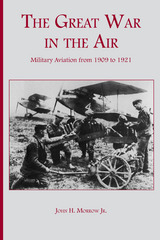 The Great War in the Air: Military Aviation from 1909 to 1921
John H. Morrow
University of Alabama Press, 2009 "For the general reader as well as the specialist, Morrow's history of the development and significance of airpower during WWI will be considered definitive. He compares the military, technological, and industrial aspects of the air services of the major powers--France, Germany, England, Italy, Austria-Hungary, and the United States--and reveals how, by means of superior production (particularly French engine manufacture), the Allies prevailed in the air war."--Publishers Weekly
"Morrow's encyclopedic examination of aviation's part in World War I concentrates on aircraft engine and airframe production, but the emotional content of contemporary accounts rises to the surface to put a human face on the brutal use of an infant technology. . . . a serious yet readable history of this vital part of the conflict, meant for any reader."--Library Journal
"A comprehensive study of the totality of the air war in its military, political, industrial, and cultural aspects distinguish this book from other treatments of military aviation during this period. . . . Morrow's efforts have yielded new insights into the evolution of military aviation and corrected previous oversights. The author's attention to developments in production and logistics, as well as events at the front, provide the most complete understanding of the development of air power and its role in the Great War."--American Historical Review
The Great War in the Heart of Dixie: Alabama During World War I
Martin T. Olliff
University of Alabama Press, 2008 There has been much scholarship on how the U.S. as a nation reacted to World War I, but few have explored how Alabama responded. Did the state follow the federal government’s lead in organizing its resources or did Alabamians devise their own solutions to unique problems they faced? How did the state’s cultural institutions and government react? What changes occurred in its economy and way of life? What, if any, were the long-term consequences in Alabama? The contributors to this volume address these questions and establish a base for further investigation of the state during this era. Contributors: David Alsobrook, Wilson Fallin Jr., Robert J. Jakeman, Dowe Littleton, Martin T. Olliff, Victoria E. Ott, Wesley P. Newton, Michael V. R. Thomason, Ruth Smith Truss, and Robert Saunders Jr.
The Great Water: A Documentary History of Michigan
Matthew R Thick
Michigan State University Press, 2018 Michigan’s location among the Great Lakes has positioned it at the crossroads of many worlds. Its first hunters arrived ten thousand years ago, its first farmers arrived about six thousand years after that, and three hundred years ago the French expanded into the territory. This book is a small sample of the words of Michigan’s people—a collection of stories, letters, diary entries, news reports, and other documents—that give personal insights into important aspects of Michigan’s history. Designed to provoke thought and discussion about Michigan’s past, the documents in this reader are expressions of past ideas, markers of change, and windows into the lives of the people who lived during well-known events in Michigan history.
The Great West Ukrainian Prison Massacre of 1941: A Sourcebook
Edited by Ksenya Kiebuzinski and Alexander Motyl
Amsterdam University Press, 2017 After Germany invaded the Soviet Union in 1941, the Soviet secret police, the NKVD, executed a staggering number of political prisoners in Western Ukraine-somewhere between 10,000 and 40,000-in the space of eight days, in one of the greatest atrocities perpetrated by the Soviet state. Yet the Great West Ukrainian Prison Massacre of 1941 is largely unknown. This sourcebook aims to change that, offering detailed scholarly analysis, eyewitness testimonies and profiles of known victims, and a selection of fiction, memoirs, and poetry that testifies to the lasting impact of the massacre in the collective memory of Ukrainians.
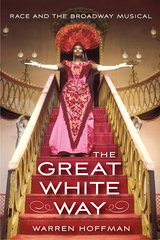 The Great White Way: Race and the Broadway Musical
Hoffman, Warren
Rutgers University Press, 2014
Broadway musicals are one of America’s most beloved art forms and play to millions of people each year. But what do these shows, which are often thought to be just frothy entertainment, really have to say about our country and who we are as a nation?
The Great White Way is the first book to reveal the racial politics, content, and subtexts that have haunted musicals for almost one hundred years from Show Boat (1927) to The Scottsboro Boys (2011). Musicals mirror their time periods and reflect the political and social issues of their day. Warren Hoffman investigates the thematic content of the Broadway musical and considers how musicals work on a structural level, allowing them to simultaneously present and hide their racial agendas in plain view of their audiences. While the musical is informed by the cultural contributions of African Americans and Jewish immigrants, Hoffman argues that ultimately the history of the American musical is the history of white identity in the United States.
Presented chronologically, The Great White Way shows how perceptions of race altered over time and how musicals dealt with those changes. Hoffman focuses first on shows leading up to and comprising the Golden Age of Broadway (1927–1960s), then turns his attention to the revivals and nostalgic vehicles that defined the final quarter of the twentieth century. He offers entirely new and surprising takes on shows from the American musical canon—Show Boat (1927), Oklahoma! (1943), Annie Get YourGun (1946), The Music Man (1957), West Side Story (1957), A Chorus Line (1975), and 42nd Street (1980), among others.
New archival research on the creators who produced and wrote these shows, including Leonard Bernstein, Jerome Robbins, Stephen Sondheim, and Edward Kleban, will have theater fans and scholars rethinking forever how they view this popular American entertainment.
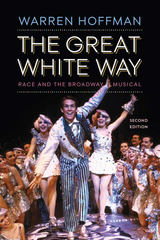 The Great White Way: Race and the Broadway Musical
Warren Hoffman
Rutgers University Press, 2020 Broadway musicals are one of America’s most beloved art forms and play to millions of people each year. But what do these shows, which are often thought to be just frothy entertainment, really have to say about our country and who we are as a nation?
Now in a new second edition, The Great White Way is the first book to reveal the racial politics, content, and subtexts that have haunted musicals for almost one hundred years from Show Boat (1927) to Hamilton (2015). This revised edition includes a new introduction and conclusion, updated chapters, as well as a brand-new chapter that looks at the blockbuster musicals The Book of Mormon and Hamilton.
Musicals mirror their time periods and reflect the political and social issues of their day. Warren Hoffman investigates the thematic content of the Broadway musical and considers how musicals work on a structural level, allowing them to simultaneously present and hide their racial agendas in plain view of their audiences. While the musical is informed by the cultural contributions of African Americans and Jewish immigrants, Hoffman argues that ultimately the history of the American musical is the history of white identity in the United States.
Presented chronologically, The Great White Way shows how perceptions of race altered over time and how musicals dealt with those changes. Hoffman focuses first on shows leading up to and comprising the Golden Age of Broadway (1927–1960s), then turns his attention to the revivals and nostalgic vehicles that defined the final quarter of the twentieth century. He offers entirely new and surprising takes on shows from the American musical canon—Show Boat (1927), Oklahoma! (1943), Annie Get Your Gun (1946), The Music Man (1957), West Side Story (1957), A Chorus Line (1975), and 42nd Street (1980), among others. In addition to a new chapter on Hamilton and The Book of Mormon, this revised edition brings The Great White Way fully into the twenty-first century with an examination of jukebox musicals and the role of off-Broadway and regional theaters in the development of the American musical.
New archival research on the creators who produced and wrote these shows, including Leonard Bernstein, Jerome Robbins, Stephen Sondheim, and Edward Kleban, will have theater fans and scholars rethinking forever how they view this popular American entertainment.
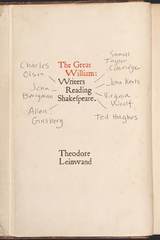 The Great William: Writers Reading Shakespeare
Theodore Leinwand
University of Chicago Press, 2016 The Great William is the first book to explore how seven renowned writers—Samuel Taylor Coleridge, John Keats, Virginia Woolf, Charles Olson, John Berryman, Allen Ginsberg, and Ted Hughes—wrestled with Shakespeare in the very moments when they were reading his work. What emerges is a constellation of remarkable intellectual and emotional encounters.
Theodore Leinwand builds impressively detailed accounts of these writers’ experiences through their marginalia, lectures, letters, journals, and reading notes. We learn why Woolf associated reading Shakespeare with her brother Thoby, and what Ginsberg meant when referring to the mouth feel of Shakespeare’s verse. From Hughes’s attempts to find a “skeleton key” to all of Shakespeare’s plays to Berryman’s tormented efforts to edit King Lear, Leinwand reveals the palpable energy and conviction with which these seven writers engaged with Shakespeare, their moments of utter self-confidence and profound vexation. In uncovering these intense public and private reactions, The Great William connects major writers’ hitherto unremarked scenes of reading Shakespeare with our own.
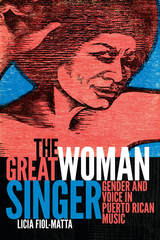 The Great Woman Singer: Gender and Voice in Puerto Rican Music
Licia Fiol-Matta
Duke University Press, 2017 Licia Fiol-Matta traces the careers of four iconic Puerto Rican singers—Myrta Silva, Ruth Fernández, Ernestina Reyes, and Lucecita Benítez—to explore how their voices and performance style transform the possibilities for comprehending the figure of the woman singer. Fiol-Matta shows how these musicians, despite seemingly intractable demands to represent gender norms, exercised their artistic and political agency by challenging expectations of how they should look, sound, and act. Fiol-Matta also breaks with conceptualizations of the female pop voice as spontaneous and intuitive, interrogating the notion of "the great woman singer" to deploy her concept of the "thinking voice"—an event of music, voice, and listening that rewrites dominant narratives. Anchored in the work of Lacan, Foucault, and others, Fiol-Matta's theorization of voice and gender in The Great Woman Singer makes accessible the singing voice's conceptual dimensions while revealing a dynamic archive of Puerto Rican and Latin American popular music.
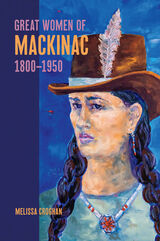 Great Women of Mackinac, 1800-1950
Melissa Croghan
Michigan State University Press, 2023 Great Women of Mackinac, 1800–1950 tells the dramatic history of thirteen women leaders on Mackinac Island in the nineteenth and early twentieth centuries. Their linked visions of family and community define this beautiful island in the western Great Lakes. In this collective biography, author and Mackinac Island resident Melissa Croghan reveals how central they were to the history and literature of Mackinac. Elizabeth Bertrand Mitchell, Madeline Marcot LaFramboise, Therese Marcot Schindler, Elizabeth Therese Baird, Agatha Biddle, and Jane Johnston Schoolcraft were Anishinaabe fur traders, farmers, memoirists, and poets who established the nineteenth-century island community. Among the women of Mackinac, there were also those who sang the island’s praises and recorded the lively relationships of the English, French, and American inhabitants. These writers included Juliette Magill Kinzie, Anna Brownell Jameson, Margaret Fuller, and Constance Fenimore Woolson. There were also community builders who founded key institutions and midwifed generations of island children: Rosa Truscott Webb, Daisy Peck Blodgett, and Stella King. Readers interested in American literature, women’s lives, and Mackinac Island’s storied history will find this book a fascinating read.
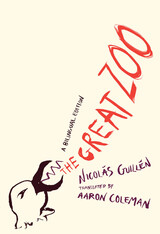 The Great Zoo: A Bilingual Edition
Nicolás Guillén
University of Chicago Press, 2024 A fantastical collection of poems by revolutionary Afro-Cuban poet Nicolás Guillén presented in a Spanish-English bilingual edition.
Born in Cuba to parents of African and European ancestry, Nicolás Guillén worked in printing presses and studied law before moving into Havana’s literary scene. A virtuosic maker and breaker of forms, Guillén rose to fame by transforming a popular form of Cuban music into poetry that called attention to the experience of Afro-Cuban people, and he continued to interweave his artistic and political commitments as he traveled the world.
Originally published in Spanish in 1967, The Great Zoo is a humorous and biting collection of poems that presents a fantastical bestiary of ideas, social concerns, landscapes, phenomena, and more. The “animals” on view in this menagerie include the Mississippi and Amazon Rivers, clouds from different countries, a singing guitar, a temperamental atomic bomb, blue-pelted police, a hurricane, the KKK, and the North Star, among many others. Translated by Aaron Coleman with a keen understanding of the contexts of colonial racialization, oppression, and exoticism, this bilingual edition stands as a testament to Guillén’s carnivalesque vision.
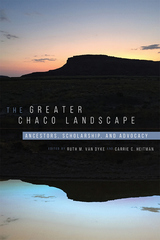 The Greater Chaco Landscape: Ancestors, Scholarship, and Advocacy
Ruth M. Van Dyke
University Press of Colorado, 2020 Since the mid-1970s, government agencies, scholars, tribes, and private industries have attempted to navigate potential conflicts involving energy development, Chacoan archaeological study, and preservation across the San Juan Basin. The Greater Chaco Landscape examines both the imminent threat posed by energy extraction and new ways of understanding Chaco Canyon and Chaco-era great houses and associated communities from southeast Utah to west-central New Mexico in the context of landscape archaeology.
Contributors analyze many different dimensions of the Chacoan landscape and present the most effective, innovative, and respectful means of studying them, focusing on the significance of thousand-year-old farming practices; connections between early great houses outside the canyon and the rise of power inside it; changes to Chaco’s roads over time as observed in aerial imagery; rock art throughout the greater Chaco area; respectful methods of examining shrines, crescents, herraduras, stone circles, cairns, and other landscape features in collaboration with Indigenous colleagues; sensory experiences of ancient Chacoans via study of the sightlines and soundscapes of several outlier communities; and current legal, technical, and administrative challenges and options concerning preservation of the landscape.
An unusually innovative and timely volume that will be available both in print and online, with the online edition incorporating video chapters presented by Acoma, Diné, Zuni, and Hopi cultural experts filmed on location in Chaco Canyon, The Greater Chaco Landscape is a creative collaboration with Native voices that will be a case study for archaeologists and others working on heritage management issues across the globe. It will be of interest to archaeologists specializing in Chaco and the Southwest, interested in remote sensing and geophysical landscape-level investigations, and working on landscape preservation and phenomenological investigations such as viewscapes and soundscapes.
Contributors: R. Kyle Bocinsky, G. B. Cornucopia, Timothy de Smet, Sean Field, Richard A. Friedman, Dennis Gilpin, Presley Haskie, Tristan Joe, Stephen H. Lekson, Thomas Lincoln, Michael P. Marshall, Terrance Outah, Georgiana Pongyesva, Curtis Quam, Paul F. Reed, Octavius Seowtewa, Anna Sofaer, Julian Thomas, William B. Tsosie Jr., Phillip Tuwaletstiwa, Ernest M. Vallo Jr., Carla R. Van West, Ronald Wadsworth, Robert S. Weiner, Thomas C. Windes, Denise Yazzie, Eurick Yazzie
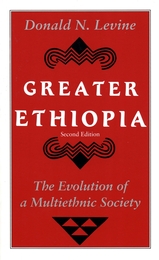 Greater Ethiopia: The Evolution of a Multiethnic Society
Donald N. Levine
University of Chicago Press, 2000 Greater Ethiopia combines history, anthropology, and sociology to answer two major questions. Why did Ethiopia remain independent under the onslaught of European expansionism while other African political entities were colonized? And why must Ethiopia be considered a single cultural region despite its political, religious, and linguistic diversity?
Donald Levine's interdisciplinary study makes a substantial contribution both to Ethiopian interpretive history and to sociological analysis. In his new preface, Levine examines Ethiopia since the overthrow of the monarchy in the 1970s.
"Ethiopian scholarship is in Professor Levine's debt. . . . He has performed an important task with panache, urbanity, and learning."—Edward Ullendorff, Times Literary Supplement
"Upon rereading this book, it strikes the reader how broad in scope, how innovative in approach, and how stimulating in arguments this book was when it came out. . . . In the past twenty years it has inspired anthropological and historical research, stimulated theoretical debate about Ethiopia's cultural and historical development, and given the impetus to modern political thinking about the complexities and challenges of Ethiopia as a country. The text thus easily remains an absolute must for any Ethiopianist scholar to read and digest."-J. Abbink, Journal of Modern African Studies
Greater Ghost
Christian J. Collier
Four Way Books, 2024 In Christian Collier’s debut poetry collection, Greater Ghost, this extraordinary Black Southern poet precisely stitches the sutures of grief and gratitude together over our wounds. These pages move between elegies for private hauntings and public ones, the visceral bereavement of a miscarriage alongside the murder of a family member, and the specter of police brutality. With a profound awareness of literary tradition, Collier enters into the American canon and dialogues with Black Southern noir—a poem like “Beloved,” whose title expresses not only a genuine tenderness in its term of endearment but invokes Morrison, contextualizes this book within the legacy of racial injustice in the U.S., presenting again the prolific losses and disproportionate Black mortality across time, and yet remembers the resilience of love and transformative possibility of self-actualization from inside tragedy.
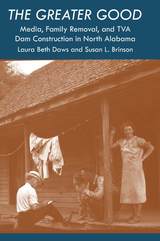 The Greater Good: Media, Family Removal, and TVA Dam Construction in North Alabama
Laura Beth Daws and Susan L. Brinson
University of Alabama Press, 2019 Examines the role of press coverage in promoting the mission of the TVA, facilitating family relocation, and formulating the historical legacy of the New Deal
For poverty-stricken families in the Tennessee River Valley during the Great Depression, news of President Franklin D. Roosevelt’s New Deal plans to create the Tennessee Valley Authority—bringing the promise of jobs, soil conservation, and electricity—offered hope for a better life. The TVA dams would flood a considerable amount of land on the riverbanks, however, forcing many families to relocate. In exchange for this sacrifice for the “greater good,” these families were promised “fair market value” for their land. As the first geographic location to benefit from the electricity provided by TVA, the people of North Alabama had much to gain, but also much to lose.
In The Greater Good: Media, Family Removal, and TVA Dam Construction in North Alabama Laura Beth Daws and Susan L. Brinson describe the region’s preexisting conditions, analyze the effects of relocation, and argue that local newspapers had a significant impact in promoting the TVA’s agenda. The authors contend that it was principally through newspapers that local residents learned about the TVA and the process and reasons for relocation. Newspapers of the day encouraged regional cooperation by creating an overwhelmingly positive image of the TVA, emphasizing its economic benefits and disregarding many of the details of removal.
Using mostly primary research, the volume addresses two key questions: What happened to relocated families after they sacrificed their homes, lifestyles, and communities in the name of progress? And what role did mediated communication play in both the TVA’s family relocation process and the greater movement for the public to accept the TVA’s presence in their lives? The Greater Good offers a unique window into the larger impact of the New Deal in the South. Until now, most research on the TVA was focused on organizational development rather than on families, with little attention paid to the role of the media in garnering acceptance of a government-enforced relocation.
 Greater Good: The Case for Proportionalism
Garth L. Hallett, SJ
Georgetown University Press, 1995 Garth L. Hallett provides the first thorough, systematic exposition and defense of proportionalism in Christian ethics. Prominent in both philosophical and theological ethics, proportionalism judges the morality of acts by their proportion of good and evil. Hallett proposes judging acts using a norm he calls Value Maximization. He defines this norm and offers a full response to such critics of all forms of proportionalism as Finnis and Grisez. The author assesses the norm's moral and theological validity in and of itself; in dialogue with the encyclical Veritatis Splendor; and in comparison with various rival viewpoints, stressing natural law, divine commands, respect for persons, inviolable goods, proportionate ends, irreducible rights, and agent-centered ethics. He appraises the norm's overall significance, showing its rootedness in Christian tradition, its inclusiveness and amplitude, and its relevance to those seeking a foundation for Christian ethical thought and moral activity.
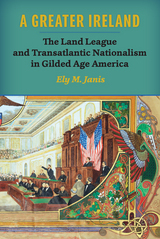 A Greater Ireland: The Land League and Transatlantic Nationalism in Gilded Age America
Ely M. Janis
University of Wisconsin Press, 2014 During the early 1880s a continual interaction of events, ideas, and people in Ireland and the United States created a "Greater Ireland" spanning the Atlantic that profoundly impacted both Irish and American society. In A Greater Ireland: The Land League and Transatlantic Nationalism in Gilded Age America, Ely M. Janis closely examines the Irish National Land League, a transatlantic organization with strong support in Ireland and the United States. Founded in Ireland in 1879 against the backdrop of crop failure and agrarian unrest, the Land League pressured the British government to reform the Irish landholding system and allow Irish political self-rule. The League quickly spread to the United States, with hundreds of thousands of Irish Americans participating in branches in their local communities.
As this "Greater Ireland" flourished, new opportunities arose for women and working-class men to contribute within Irish-American society. Exploring the complex interplay of ethnicity, class, and gender, Janis demonstrates the broad range of ideological, social, and political opinion held by Irish Americans in the 1880s. Participation in the Land League deeply influenced a generation that replaced their old county and class allegiances with a common cause, shaping the future of Irish-American nationalism.
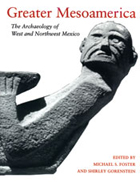 Greater Mesoamerica: The Archaeology of West and Northwest Mexico
Michael S Foster
University of Utah Press, 2000 Edited by Michael S. Foster and Shirley Gorenstein Archaeology Mesoamerican studies, as they are still practiced today, are framed by the Spanish colonial intrusion into Mexico from the east, and subsequent involvement with the Aztec Empire. Greater Mesoamerica expands the definition of "Mesoamerica" beyond the more traditionally accepted central Mexican areas to both western and northwestern Mexico where sophisticated cultures were flourishing outside the realm of Spanish influence. It is the first comprehensive overview of both regions since the Handbook of Middle American Indians was published in the early 1970s.
Based on recent archaeological surveys and excavations, the chapters in this volume provide current, comprehensive, area-by-area summaries of the region's Precolumbian past, noting the discovery of new cultural configurations, new connections, and new complexities.
A Greater Monster
Adam Patric Miller
Autumn House Press, 2014 Miller's debut essay collection follows his insightful perspectives on various facets of life as he paints a portrait of the man he has grown to become.
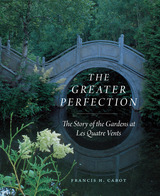 The Greater Perfection: The Story of the Gardens at Les Quatre Vents
Francis H. Cabot
University of Chicago Press, 2023 The Greater Perfection, now with a new foreword by Francis H. Cabot’s daughter, tells the story behind the creation of Les Quatre Vents, one of the world’s most breathtaking gardens.
Featured in the 2018 film The Gardener, Les Quatre Vents in Charlevoix County, Quebec, has been acclaimed as the most aesthetically satisfying and horticulturally exciting landscape experience in North America. This twenty-acre garden seamlessly combines traditional and novel elements into a splendid composition, adorned with unexpected touches and perfectly compatible with its natural surroundings.
The Greater Perfection, first published in 2001, illustrates the delights, diversions, and surprises that await the garden’s visitors. Francis H. Cabot’s account of the challenges he faced in developing Les Quatre Vents reveals the fascinating process behind the creation of a world-class garden that has become a mecca for horticultural enthusiasts around the globe. Winner of the 2003 Annual Literature Award of the Council on Botanical and Horticultural Libraries and featuring stunning full-color images by five leading garden photographers, The Greater Perfection is one of the most beautiful books on gardens to appear in years. This new printing includes a foreword by Marianne Cabot Welch, Cabot’s daughter, that further contextualizes the gardens and explores how a place rooted in the past can confront the future.
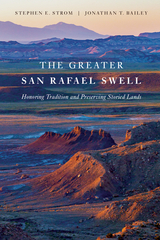 The Greater San Rafael Swell: Honoring Tradition and Preserving Storied Lands
Stephen E. Strom and Jonathan T. Bailey
University of Arizona Press, 2022 A landscape of great natural beauty, Utah’s red rock country is a place where the passage from deep time to the present is revealed in stunningly sculpted and colorful geological strata that span 350 million years of Earth’s history. At the heart of this dramatic landscape is the Greater San Rafael Swell—a land of both geologic and human tumult.
Natural and human history come together in The Greater San Rafael Swell, which spans much of Emery County in Utah. Authors Stephen Strom and Jonathan Bailey paint a multi-faceted picture of a singular place through photographs, along with descriptions of geology, paleontology, archaeology, history, and dozens of interviews with individuals who devoted more than two decades to developing a shared vision of the future of both the Swell and the County. At its core, the book relates the important story of how a coalition of ranchers, miners, off-road enthusiasts, conservationists, recreationists, and Native American tribal nations worked together for nearly 25 years to forge and pass the Emery County Public Lands Management Act in 2019.
This book chronicles hopeful stories for our times: how citizens of Emery and three other counties in the rural West worked to resolve perhaps the most volatile issue in the region – the future of public lands. Both their successes and the processes by which they found common ground serve as beacons in today’s uncertain landscape – beacons that can illuminate paths toward rebuilding our shared democracy from the ground up.
Greater Than a Mother's Love: The Spirituality of Francis and Clare of Assisi
Friar Gilberto Cavazos-González, OFM
University of Scranton Press, 2010 Although there are several studies dedicated to the lives of Francis and Clare of Assisi, Gilberto Cavazos-González’s Greater Than a Mother’s Love is the first to investigate their spirituality in the context of family relationships. He delves into the writings of Francis and Clare and illustrates how both used observations of their various human relationships to understand their experiences with God. Accompanying this study is an exhaustive bibliography and several appendices that enhance this unique treatment of these two beloved and admired religious figures.
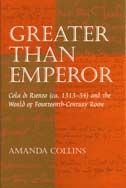 Greater than Emperor: Cola di Rienzo (ca. 1313-54) and the World of Fourteenth-Century Rome
Amanda Collins
University of Michigan Press, 2002 Greater than Emperor charts the remarkable process by which Rome tried to forge a new civic identity, similar in constitution to contemporary city-republics but conceptually much greater. At the forefront of the process stood the idiosyncratic and astonishing young notary Cola di Rienzo. On May 21, 1347, Cola staged a bloodless coup. Rome entered a new age that would witness both the resurrection of the ancient power of the Empire and Rome's apotheosis as God's chosen city. Yet within seven months, the theatricality and violence of Cola's regime led to exile. Cola's triumphal return some years later ended in his assassination. Cola was eventually resurrected as a hero of nineteenth-century nationalism, leaving the realities of Trecento Rome far behind. Yet it is only in terms of the very real models and methods that Cola welded together that his revolution can be understood. Greater than Emperor describes Cola's reliance on the past of rhetoric, pageantry, and Roman law. It then discusses the future, tracing the dynamic contemporary influences of apocalyptic fervor, prophetic literature, and radical Franciscan imagery of Cola's world. Amanda Collins assesses Cola's legal and political career within both the complex mechanics of municipal administration and the multiple hierarchies of Roman society. Amanda Collins offers a new assessment of the dramatic events of 1347 and an analysis of Cola within his late medieval Roman context. Bringing depth and substance to Cola's backdrop, Trecento Rome and the economic and spiritual ambitions of its citizen body, Collins provides information crucial to understanding the longer-term economic and political drive to civic autonomy in Rome before 1400. Historians and generalists alike will relish the story of a remarkable individual, set within the cultural climate of a famous and fascinating city, during an often-overlooked period. This book sheds new light on a crucial political figure that brought a dazzling civil independence to Rome. Amanda Collins held the Junior Research Fellowship in Intellectual History at Wolfson College, Oxford from 1997-2000, and has more recently been employed at the University of Sussex.
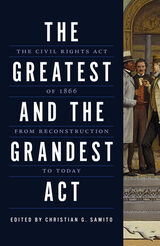 The Greatest and the Grandest Act: The Civil Rights Act of 1866 from Reconstruction to Today
Edited by Christian G. Samito
Southern Illinois University Press, 2018 In this volume ten expert historians and legal scholars examine the Civil Rights Act of 1866, the first federal civil rights statute in American history. The act declared that all persons born in the United States were citizens without regard to race, color, or previous condition of slavery. Designed to give the Thirteenth Amendment practical effect as former slave states enacted laws limiting the rights of African Americans, this measure for the first time defined U.S. citizenship and the rights associated with it.
Essays examine the history and legal ramifications of the act and highlight competing impulses within it, including the often-neglected Section 9, which allows the president to use the nation’s military in its enforcement; an investigation of how the Thirteenth Amendment operated to overturn the Dred Scott case; and New England’s role in the passage of the act. The act is analyzed as it operated in several states such as Kentucky, Missouri, and South Carolina during Reconstruction. There is also a consideration of the act and its interpretation by the Supreme Court in its first decades. Other essays include a discussion of the act in terms of contract rights and in the context of the post–World War II civil rights era as well as an analysis of the act’s backward-looking and forward-looking nature.
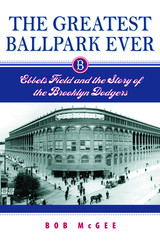 The Greatest Ballpark Ever: Ebbets Field and the Story of the Brooklyn Dodgers
McGee, Bob
Rutgers University Press, 2005 Generations after its demise, Ebbets Field remains the single most colorful and enduring image of a baseball park, with a treasured niche in the game's legacy and the American imagination.
In this lively story of sports, politics, and the talented, hilarious, and charming characters associated with the Brooklyn Dodgers, Bob McGee chronicles the ballpark's vibrant history from the drawing board to the wrecking ball, beginning with Charley Ebbets and the heralded opening in 1913, on through the eras that followed. McGee weaves a story about how Ebbets Field's architectural details, notable flaws, and striking facade brought Brooklyn and its team together in ways that allowed each to define the other.
Drawing on original interviews and letters, as well as published and archival sources, The Greatest Ballpark Ever explores the struggle of Charley Ebbets to build Ebbets Field, the days of Wilbert Robinson's early pennant winners, the eras of the Daffiness Boys, Larry MacPhail, and Branch Rickey, the tumultuous field leadership of Leo the Lip, the fiery triumph of Jackie Robinson, the golden days of the Boys of Summer, and Walter O'Malley's ignominious departure.
With humor and passion, The Greatest Ballpark Ever lets readers relive a day in the raucous ballpark with its quirky angles and its bent right-field wall, with the characters and events that have become part of the nation's folklore.
The Greatest Films Never Seen: The Film Archive and the Copyright Smokescreen
Claudy Op den Kamp
Amsterdam University Press, 2018 Orphan works, or artworks for which no copyright holder is traceable, pose a growing problem for museums, archives, and other heritage institutions. As they come under more and more pressure to digitize and share their archives, they are often hampered by the uncertain rights status of items in their collections. The Greatest Films Never Seen: The Film Archive and the Copyright Smokescreen uses the prism of copyright to reconsider human agency and the politics of the archive, and asks what the practical implications are for educational institutions, the creative industries, and the general public.
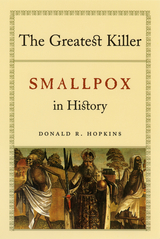 The Greatest Killer: Smallpox in History
Donald R. Hopkins
University of Chicago Press, 2002 Once known as the "great fire" or "spotted death," smallpox has been rivaled only by plague as a source of supreme terror. Although naturally occurring smallpox was eradicated in 1977, recent terrorist attacks in the United States have raised the possibility that someone might craft a deadly biological weapon from stocks of the virus that remain in known or perhaps unknown laboratories.
In The Greatest Killer, Donald R. Hopkins provides a fascinating account of smallpox and its role in human history. Starting with its origins 10,000 years ago in Africa or Asia, Hopkins follows the disease through the ancient and modern worlds, showing how smallpox removed or temporarily incapacitated heads of state, halted or exacerbated wars, and devastated populations that had never been exposed to the disease. In Hopkins's history, smallpox was one of the most dangerous-and influential-factors that shaped the course of world events.
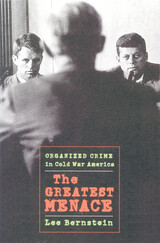 The Greatest Menace: Organized Crime in Cold War America
Lee Bernstein
University of Massachusetts Press, 2002 The term Cold War has long been associated with the "red menace" of communism at home and abroad. Yet as Lee Bernstein shows in this illuminating study, during the 1950s the threat posed by organized crime preoccupied Americans at least as much as the fear of communist subversion. At the beginning of the decade, the televised hearings of Senator Estes Kefauver's crime committee, focusing on colorful mob figures such as Lucky Luciano and Frank Costello, attracted far more attention than the spy trial of Julius and Ethel Rosenberg. In the years that followed, public concern about gangsters and racketeering continued unabated, even after the anticommunist fever of McCarthyism had begun to subside.
Drawing on a broad range of evidence, from government records to films, television shows, and pulp novels, Bernstein explains how the campaign against organized crime, like the crusade against communism, reflected deep social and political anxieties. Just as the inquisitions of Senator McCarthy fed on popular fears of international conspiracy and alien infiltration, the anticrime investigations of the 1950s raised the specter of a foreign-based criminal cartel—the Sicilian Mafia— preying on a vulnerable American public. In both cases, the association of the foreign-born with criminal or un-American activity led to the creation of state and local citizens committees and to calls for new restrictions on immigration. Labor unions also came under attack, particularly after the McClellan Committee and its chief counsel, Robert F. Kennedy, claimed to have found a link between the International Brotherhood of Teamsters, led by Jimmy Hoffa, and the Mafia.
As Bernstein points out, despite significant changes in the way organized crime actually operated, and despite repeated protests from Italian Americans, the popular image of the sinister gangster persisted, because it served a more profound need. In an era marked by widespread uncertainty and rapid social change, the fight against a common enemy, real or imagined, helped forge a Cold War consensus across shifting lines of race, class, and ethnicity by redefining what it meant to be an American.
 The Greatest Nation of the Earth: Republican Economic Policies during the Civil War
Heather Cox Richardson
Harvard University Press, 1997 While fighting a war for the Union, the Republican party attempted to construct the world’s most powerful and most socially advanced nation. Rejecting the common assumption that wartime domestic legislation was a series of piecemeal reactions to wartime necessities, Heather Cox Richardson argues that party members systematically engineered pathbreaking laws to promote their distinctive theory of political economy.
Republicans were a dynamic, progressive party, the author shows, that championed a specific type of economic growth. They floated billions of dollars in bonds, developed a national currency and banking system, imposed income taxes and high tariffs, passed homestead legislation, launched the Union Pacific railroad, and eventually called for the end of slavery. Their aim was to encourage the economic success of individual Americans and to create a millennium for American farmers, laborers, and small capitalists.
However, Richardson demonstrates, while Republicans were trying to construct a nation of prosperous individuals, they were laying the foundation for rapid industrial expansion, corporate corruption, and popular protest. They created a newly active national government that they determined to use only to promote unregulated economic development. Unwittingly, they ushered in the Gilded Age.
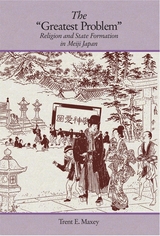 The "Greatest Problem": Religion and State Formation in Meiji Japan
Trent E. Maxey
Harvard University Press, 2014 At its inception in 1868, the modern Japanese state pursued policies and created institutions that lacked a coherent conception of religion. Yet the architects of the modern state pursued an explicit "religious settlement" as they set about designing a constitutional order through the 1880s. As a result, many of the cardinal institutions of the state, particularly the imperial institution, eventually were defined in opposition to religion.
Drawing on an assortment of primary sources, including internal government debates, diplomatic negotiations, and the popular press, Trent E. Maxey documents how the novel category of religion came to be seen as the "greatest problem" by the architects of the modern Japanese state. In Meiji Japan, religion designated a cognitive and social pluralism that resisted direct state control. It also provided the modern state with a means to contain, regulate, and neutralize that plurality.
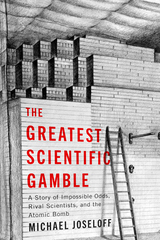 The Greatest Scientific Gamble: A Story of Rival Scientists, Impossible Odds, and the Atomic Bomb
Michael Joseloff
Michigan State University Press In 1938 Enrico Fermi was awarded the Nobel Prize for his pioneering work bombarding elements with slow neutrons. He failed to realize it at the time, but his bombardment of uranium likely split the uranium nucleus leading to the discovery of nuclear fission and ultimately the race to build an atom bomb. Nine months after the award ceremony, Werner Heisenberg, future architect of Hitler’s atom bomb program, traveled to the United States for a physics conference where he met with future Manhattan Project scientists Enrico Fermi, J. Robert Oppenheimer, and Sam Goudsmit, who would later lead an army intelligence unit that tracked and eventually captured Heisenberg. The Greatest Scientific Gamble weaves their stories with that of Manhattan Project director Leslie Groves to create a high-stakes, big-picture narrative about the successes and setbacks of Manhattan Project scientists, Allied efforts to sabotage the German bomb program, and the bombing of Hiroshima and Nagasaki.
The Greatest Sport of All: An Inside Look at Another Year in Boxing
Thomas Hauser
University of Arkansas Press, 2007 Over the years, Thomas Hauser has earned recognition as one of the most respected boxing writers in America and the definitive chronicler of the contemporary boxing scene. The Greatest Sport of All is Hauser’s portrait of 2006, another remarkable year in boxing. The book includes an inside look at great fighters, great fights, and the powers behind the throne. There are revealing portraits of Oscar De La Hoya, Jermain Taylor, Bernard Hopkins, and Don King; a look back at giants like Joe Louis and Muhammad Ali; and more.
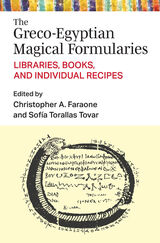 The Greco-Egyptian Magical Formularies: Libraries, Books, and Individual Recipes
Edited by Christopher A. Faraone and Sofía Torallas Tovar
University of Michigan Press, 2022 In Greco-Roman Egypt, recipes for magical undertaking, called magical formularies, commonly existed for love potions, curses, attempts to best business rivals—many of the same challenges that modern people might face. In The Greco-Egyptian Magical Formularies: Libraries, Books, and Individual Recipes, volume editors Christopher Faraone and Sofia Torallas Tovar present a series of essays by scholars involved in a multiyear project to reedit and translate the various magical handbooks that were inscribed in the Roman period in the Greek or Egyptian languages. For the first time, the material remains of these papyrus rolls and codices are closely examined, revealing important information about the production of books in Egypt, the scribal culture in which they were produced, and the traffic in single recipes copied from them. Especially important for historians of the book and the Christian Bible are new insights in the historical shift from roll to codex, complicated methods of inscribing the bilingual papyri (in which the Greek script is written left to right and the demotic script right to left), and the new realization that several of the longest extant handbooks are clearly compilations of two or more shorter handbooks, which may have come from different places. The essays also reexamine and rethink the idea that these handbooks came from the personal libraries of practicing magicians or temple scriptoria, in one case going so far as to suggest that two of the handbooks had literary pretensions of a sort and were designed to be read for pleasure rather than for quotidian use in making magical recipes.
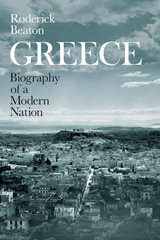 Greece: Biography of a Modern Nation
Roderick Beaton
University of Chicago Press, 2019 For many, “Greece” is synonymous with “ancient Greece,” the civilization that gave us much that defines Western culture today. But, how did Greece come to be so powerfully attached to the legacy of the ancients in the first place and then define an identity for itself that is at once Greek and modern? This book reveals the remarkable achievement, during the last three hundred years, of building a modern nation on the ruins of a vanished civilization—sometimes literally so. This is the story of the Greek nation-state but also, and more fundamentally, of the collective identity that goes with it. It is not only a history of events and high politics; it is also a history of culture, of the arts, of people, and of ideas.
Opening with the birth of the Greek nation-state, which emerged from encounters between Christian Europe and the Ottoman Empire, Roderick Beaton carries his story into the present moment and Greece’s contentious post-recession relationship with the rest of the European Union. Through close examination of how Greeks have understood their shared identity, Beaton reveals a centuries-old tension over the Greek sense of self. How does Greece illuminate the difference between a geographically bounded state and the shared history and culture that make up a nation?
A magisterial look at the development of a national identity through history, Greece: Biography of a Modern Nation is singular in its approach. By treating modern Greece as a biographical subject, a living entity in its own right, Beaton encourages us to take a fresh look at a people and culture long celebrated for their past, even as they strive to build a future as part of the modern West.
Greece in the Bronze Age
Emily Townsend Vermeule
University of Chicago Press, 1964 From the arrival of the first men in Greece to the fall of the Mycenaean palace-town in the thirteenth century B.C., this work captures the essential qualities of each period of pre-classical civilization: the slow development of the Neolithic culture, the rich and original Early Bronze Age, the fruitful yet tragic encounter between Minoans and Mycenaean Empire. The legacy of Mycenaean religion and art is reviewed, including material found in excavated palaces and their stored wealth of frescoes, carved ivories, silver and gold jewelry, vases, and bronze weapons. The author deals with the invasions of Greece, the growth of a Greek language and some of the problems of Linear B, and the impact of Crete and the East upon the mainstream of Greek development.
Greed: From Gordon Gekko to David Hume
Stewart Sutherland
Haus Publishing, 2014 In a riveting scene from the film Wall Street, Gordon Gekko proclaims that “greed is good.” The great philosopher David Hume, on the other hand, describes greed as the most destructive of the vices. The recent banking debacle and continuing uproar about executive bonus pay has placed the controversial issue of greed at the very heart of how we view modern society. Is Gekko’s maxim simply in need of some moderation? Or is Hume’s view too extreme?
In Greed, Stewart Sutherland examines these conflicting notions and discusses how we might approach the problem of greed today. He looks at the concept of incentives, which are essential for achieving results, and whether the desire for money is really as dangerous as it might seem. Powerful and timely, Greed is a much-needed look at an attitude that, for better or worse, is an unavoidable driving force in modern society.
Greed, Rage, and Love Gone Wrong: Murder in Minnesota
Bruce Rubenstein
University of Minnesota Press, 2006 Writing about murder mysteries for over twenty-five years, Bruce Rubenstein gives us a collection of Minnesota crimes in Greed, Rage, and Love Gone Wrong. Whether the killer is greedy and devoid of human compassion, desperate about money or love, or simply filled with bottled-up rage, this book puts the reader at the scene of the most notorious murders in the state.Bruce Rubenstein is a writer who specializes in true crime and legal stories. His work has appeared in many publications, including City Pages, Mpls/St. Paul Magazine, and Chicago Magazine. He is the recipient of the Chicago Bar Association’s Herman Kogan Media Award.
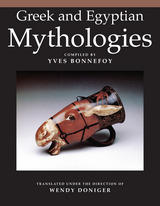 Greek and Egyptian Mythologies
Edited by Yves Bonnefoy
University of Chicago Press, 1992 The seventy-two entries in this volume explore, among other topics, the history, geography, and religion of Greece, Plato's mythology and philosophy, the powers of marriage in Greece, heroes and gods of war in the Greek epic, and origins of mankind in Greek myths. Ancient Egyptian cosmology, anthropology, rituals, and religion—closely linked to Greek mythology—are also discussed.
"In a world that remains governed by powerful myths, we must deepen our understanding of ourselves and others by considering more carefully the ways in which the mythological systems to which we cling and social institutions and movements to which we are committed nourish each other. Yves Bonnefoy's Mythologies not only summarizes the progress that has already been made toward this end, but also lays the foundation for the difficult work that lies ahead."—Mark C. Taylor, New York Times Book Review
"The almost 100 contributors combine, with characteristic precision and élan, the arts of science and poetry, of analysis and translation. The result is a treasury of information, brilliant guesswork, witty asides, and revealing digressions. This is a work of genuine and enduring excitement."—Thomas D'Evelyn, Christian cience Monitor
Greek and Latin Poetry
Angelo Poliziano
Harvard University Press Angelo Poliziano (1454–1494) was one of the great scholar-poets of the Renaissance and a leading figure in Florence during the Age of the Medici. His poetry, composed in a variety of meters, includes epigrams, elegies, and verse epistles, as well as translations of Hellenistic Greek poets. Among the first Latin poets of the Renaissance to be inspired by Homer and the poems of Greek Anthology, Poliziano’s verse also reflects his deep study of Catullus, Martial, and Statius. It ranges from love songs to funeral odes, from prayers to hymns, from invectives directed against his rivals to panegyrics of his teachers, artists, fellow humanists, and his great patron, Lorenzo de’ Medici, “il Magnifico.” The present volume includes all of Poliziano’s Greek and Latin poetry (with the exception of the Silvae, published in 2004 as ITRL 14), all translated into English for the first time.
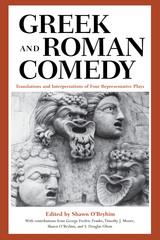 Greek and Roman Comedy: Translations and Interpretations of Four Representative Plays
Edited by Shawn O'Bryhim
University of Texas Press, 2001 Much of what we know of Greco-Roman comedy comes from the surviving works of just four playwrights—the Greeks Aristophanes and Menander and the Romans Plautus and Terence. To introduce these authors and their work to students and general readers, this book offers a new, accessible translation of a representative play by each playwright, accompanied by a general introduction to the author's life and times, a scholarly article on a prominent theme in the play, and a bibliography of selected readings about the play and playwright. This range of material, rare in a single volume, provides several reading and teaching options, from the study of a single author to an overview of the entire Classical comedic tradition. The plays have been translated for readability and fidelity to the original text by established Classics scholars. Douglas Olson provides the translation and commentary for Aristophanes' Acharnians, Shawn O'Bryhim for Menander's Dyskolos, George Fredric Franco for Plautus' Casina, and Timothy J. Moore for Terence's Phormio.
 Greek and Roman Life
Ian Jenkins
Harvard University Press, 1986 Archaeologists have recovered from the Greek and Roman world a wealth of objects that were once in daily use—toilet articles, writing implements, toys, and kitchen utensils—some of which are strikingly similar to those still used today. Other objects were decorated with scenes of everyday life. In vase paintings, for example, we meet the Greeks at home: we see men enjoying a drinking party, women spinning and weaving, a mother nursing an infant, even a baby sitting on a potty. By concentrating on domestic life, Jenkins shows us a different side of classical antiquity from that presented through the more traditional forms of political and military history. Although this book places particular emphasis upon home and family, Ian Jenkins also describes some of the more public aspects of Greek and Roman times, such as the theater, chariot racing, and gladiators. This colorful volume is fully illustrated, chiefly from the collections of the British Museum.
Greek and Roman Sculpture in American Collections
George H. Chase
Harvard University Press Because of the growth of museums in this country, we have now in America original works of Greek and Roman sculpture in sufficient numbers to show the development of this branch of the Fine Arts as a whole and to illustrate the most important features of the accomplishment of different ages. In each of the earlier chapters in this book the author first considers the progress of the sculptors during the period under discussion, using well-known monuments for illustration, and then he takes up monuments in America which show similar qualities. The last chapter points out the essential characteristics of Greek and Roman sculpture and shows why it has been, and is, so much admired. The volume accordingly has high value for every American student of ancient art.
 The Greek Anthology, Volume I: Book 1: Christian Epigrams. Book 2: Christodorus of Thebes in Egypt. Book 3: The Cyzicene Epigrams. Book 4: The Proems of the Different Anthologies. Book 5: The Amatory Epigrams. Book 6: The Dedicatory Epigrams
W. R. Paton
Harvard University Press The Greek Anthology (“Gathering of Flowers”) is the name given to a collection of about 4500 short Greek poems (called epigrams but usually not epigrammatic) by about 300 composers. To the collection (called “Stephanus”, wreath or garland) made and contributed to by Meleager of Gadara (1st century BCE) was added another by Philippus of Thessalonica (late 1st century CE), a third by Diogenianus (2nd century), and much later a fourth, called the “Circle”, by Agathias of Myrina. These (lost) and others (also lost) were partly incorporated, arranged according to contents, by Constantinus Cephalas (early 10th century?) into fifteen books now preserved in a single manuscript of the Palatine Library at Heidelberg. The grand collection was rearranged and revised by the monk Maximus Planudes (14th century) who also added epigrams lost from Cephalas’s compilation.
The fifteen books of the Palatine Anthology are: I, Christian Epigrams; II, Descriptions of Statues; III, Inscriptions in a temple at Cyzicus; IV, Prefaces of Meleager, Philippus, and Agathias; V, Amatory Epigrams; VI, Dedicatory; VII, Sepulchral; VIII, Epigrams of St. Gregory; IX, Declamatory; X, Hortatory and Admonitory; XI, Convivial and Satirical; XII, Strato’s “Musa Puerilis”; XIII, Metrical curiosities; XIV, Problems, Riddles, and Oracles; XV, Miscellanies. Book XVI is the Planudean Appendix: Epigrams on works of art.
Outstanding among the poets are Meleager, Antipater of Sidon, Crinagoras, Palladas, Agathias, Paulus Silentiarius.
The Loeb Classical Library edition is in five volumes.
 The Greek Anthology, Volume I: Books 1–5
W. R. Paton
Harvard University Press A gathering of poetic blossoms.
The Greek Anthology contains some 4,500 short Greek poems in the sparkling and diverse genre of epigram, written by more than a hundred poets and collected over many centuries. To the original collection, called the Garland (Stephanus) by its contributing editor, Meleager of Gadara (first century BC), was added another Garland, by Philip of Thessalonica (mid-first century AD) and then a Cycle by Agathias of Myrina (AD 567/8). In about AD 900 these collections (now lost) and perhaps others (also lost, by Rufinus, Diogenianus, Strato, and Palladas) were partly incorporated and arranged into fifteen books according to subject by Constantine Cephalas; most of his collection is preserved in a manuscript called the Palatine Anthology. A second manuscript, the Planudean Anthology made by Maximus Planudes in 1301, contains additional epigrams omitted by Cephalas.
Outstanding among the poets are Meleager, Antipater of Sidon, Crinagoras, Palladas, Agathias, and Paulus Silentiarius.
This Loeb edition of The Greek Anthology replaces the earlier edition by W. R. Paton, with a Greek text and ample notes reflecting current scholarship. Volume I contains the following: Book 1. Christian Epigrams; Book 2. Description of the Statues in the Gymnasium of Zeuxippus; Book 3. Epigrams in the Temple of Apollonis at Cyzicus; Book 4. Prefaces to Various Anthologies; Book 5. Erotic Epigrams.
 The Greek Anthology, Volume II: Books 7–8
W. R. Paton
Harvard University Press A gathering of poetic blossoms.
The Greek Anthology (literally, “Gathering of Flowers”) is the name given to a collection of about 4500 short Greek poems (called epigrams but usually not epigrammatic) by about 300 composers. To the collection (called Stephanus, literally, “wreath” or “garland”) made and contributed to by Meleager of Gadara (1st century BC) was added another by Philippus of Thessalonica (late 1st century AD), a third by Diogenianus (2nd century), and much later a fourth, called the Circle, by Agathias of Myrina. These (lost) and others (also lost) were partly incorporated, arranged according to contents, by Constantinus Cephalas (early 10th century?) into fifteen books now preserved in a single manuscript of the Palatine Library at Heidelberg. The grand collection was rearranged and revised by the monk Maximus Planudes (14th century) who also added epigrams lost from Cephalas’ compilation.
The fifteen books of the Palatine Anthology are: I, Christian Epigrams; II, Descriptions of Statues; III, Inscriptions in a temple at Cyzicus; IV, Prefaces of Meleager, Philippus, and Agathias; V, Amatory Epigrams; VI, Dedicatory; VII, Sepulchral; VIII, Epigrams of St. Gregory; IX, Declamatory; X, Hortatory and Admonitory; XI, Convivial and Satirical; XII, Strato’s “Musa Puerilis”; XIII, Metrical curiosities; XIV, Problems, Riddles, and Oracles; XV, Miscellanies. Book XVI is the Planudean Appendix: Epigrams on works of art.
Outstanding among the poets are Meleager, Antipater of Sidon, Crinagoras, Palladas, Agathias, Paulus Silentiarius.
 The Greek Anthology, Volume III: Book 9
W. R. Paton
Harvard University Press A gathering of poetic blossoms.
The Greek Anthology (literally, “Gathering of Flowers”) is the name given to a collection of about 4500 short Greek poems (called epigrams but usually not epigrammatic) by about 300 composers. To the collection (called Stephanus, literally, “wreath” or “garland”) made and contributed to by Meleager of Gadara (1st century BC) was added another by Philippus of Thessalonica (late 1st century AD), a third by Diogenianus (2nd century), and much later a fourth, called the Circle, by Agathias of Myrina. These (lost) and others (also lost) were partly incorporated, arranged according to contents, by Constantinus Cephalas (early 10th century?) into fifteen books now preserved in a single manuscript of the Palatine Library at Heidelberg. The grand collection was rearranged and revised by the monk Maximus Planudes (14th century) who also added epigrams lost from Cephalas’ compilation.
The fifteen books of the Palatine Anthology are: I, Christian Epigrams; II, Descriptions of Statues; III, Inscriptions in a temple at Cyzicus; IV, Prefaces of Meleager, Philippus, and Agathias; V, Amatory Epigrams; VI, Dedicatory; VII, Sepulchral; VIII, Epigrams of St. Gregory; IX, Declamatory; X, Hortatory and Admonitory; XI, Convivial and Satirical; XII, Strato’s “Musa Puerilis”; XIII, Metrical curiosities; XIV, Problems, Riddles, and Oracles; XV, Miscellanies. Book XVI is the Planudean Appendix: Epigrams on works of art.
Outstanding among the poets are Meleager, Antipater of Sidon, Crinagoras, Palladas, Agathias, Paulus Silentiarius.
 The Greek Anthology, Volume IV: Books 10–12
W. R. Paton
Harvard University Press A gathering of poetic blossoms.
The Greek Anthology (literally, “Gathering of Flowers”) is the name given to a collection of about 4500 short Greek poems (called epigrams but usually not epigrammatic) by about 300 composers. To the collection (called Stephanus, literally, “wreath” or “garland”) made and contributed to by Meleager of Gadara (1st century BC) was added another by Philippus of Thessalonica (late 1st century AD), a third by Diogenianus (2nd century), and much later a fourth, called the Circle, by Agathias of Myrina. These (lost) and others (also lost) were partly incorporated, arranged according to contents, by Constantinus Cephalas (early 10th century?) into fifteen books now preserved in a single manuscript of the Palatine Library at Heidelberg. The grand collection was rearranged and revised by the monk Maximus Planudes (14th century) who also added epigrams lost from Cephalas’ compilation.
The fifteen books of the Palatine Anthology are: I, Christian Epigrams; II, Descriptions of Statues; III, Inscriptions in a temple at Cyzicus; IV, Prefaces of Meleager, Philippus, and Agathias; V, Amatory Epigrams; VI, Dedicatory; VII, Sepulchral; VIII, Epigrams of St. Gregory; IX, Declamatory; X, Hortatory and Admonitory; XI, Convivial and Satirical; XII, Strato’s “Musa Puerilis”; XIII, Metrical curiosities; XIV, Problems, Riddles, and Oracles; XV, Miscellanies. Book XVI is the Planudean Appendix: Epigrams on works of art.
Outstanding among the poets are Meleager, Antipater of Sidon, Crinagoras, Palladas, Agathias, Paulus Silentiarius.
 The Greek Anthology, Volume V: Books 13–16
W. R. Paton
Harvard University Press A gathering of poetic blossoms.
The Greek Anthology (literally, “Gathering of Flowers”) is the name given to a collection of about 4500 short Greek poems (called epigrams but usually not epigrammatic) by about 300 composers. To the collection (called Stephanus, literally, “wreath” or “garland”) made and contributed to by Meleager of Gadara (1st century BC) was added another by Philippus of Thessalonica (late 1st century AD), a third by Diogenianus (2nd century), and much later a fourth, called the Circle, by Agathias of Myrina. These (lost) and others (also lost) were partly incorporated, arranged according to contents, by Constantinus Cephalas (early 10th century?) into fifteen books now preserved in a single manuscript of the Palatine Library at Heidelberg. The grand collection was rearranged and revised by the monk Maximus Planudes (14th century) who also added epigrams lost from Cephalas’ compilation.
The fifteen books of the Palatine Anthology are: I, Christian Epigrams; II, Descriptions of Statues; III, Inscriptions in a temple at Cyzicus; IV, Prefaces of Meleager, Philippus, and Agathias; V, Amatory Epigrams; VI, Dedicatory; VII, Sepulchral; VIII, Epigrams of St. Gregory; IX, Declamatory; X, Hortatory and Admonitory; XI, Convivial and Satirical; XII, Strato’s “Musa Puerilis”; XIII, Metrical curiosities; XIV, Problems, Riddles, and Oracles; XV, Miscellanies. Book XVI is the Planudean Appendix: Epigrams on works of art.
Outstanding among the poets are Meleager, Antipater of Sidon, Crinagoras, Palladas, Agathias, Paulus Silentiarius.
 Greek Architecture and Its Sculpture
Ian Jenkins
Harvard University Press, 2006 From Athens and Arcadia on one side of the Aegean Sea and from Ionia, Lycia, and Karia on the other, this book brings together some of the great monuments of classical antiquity --among them two of the seven wonders of the ancient world, the later temple of Artemis at Ephesos and the Mausoleum at Halikarnassos.
Drawing on the Greek and Lycian architecture and sculpture in the British Museum--a collection second to none in quality, quantity, and geographical and chronological range--this lavishly illustrated volume tells a remarkable story reaching from the archaic temple of Artemis, the Parthenon, and other temples of the Athenian Acropolis to the temple of Apollo at Bassai, the sculptured tombs of Lycia, the Mausoleum, and the temple of Athena Polias at Priene. Ian Jenkins explains each as a work of art and as a historical phenomenon, revealing how the complex personality of these buildings is bound up with the people who funded, designed, built, used, destroyed, discovered, and studied them. With 250 photographs and specially commissioned line drawings, the book comprises a monumental narrative of the art and architecture that gave form, direction, and meaning to much of Western culture.
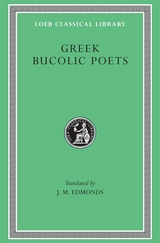 Greek Bucolic Poets: Theocritus. Bion. Moschus
translated by J. M. Edmonds
Harvard University Press Theocritus of the third century BCE, born at Syracuse, travelled widely in the Greek world. Having studied poetry at Cos with poet and critic Philitas, he composed poetry under patronage, chiefly perhaps at Syracuse and Cos; and then went to Alexandria in Egypt, whose King Ptolemy II (died 246 BCE), pupil of Philitas, befriended him. Here (and at Cos?) he spent the rest of his life. Most lovable of Greek versemakers, Theocritus was the founder of bucolic or pastoral poetry. Of his so-called Idylls, 'Little forms' or pieces (not all are genuine), ten are about pastoral life real or idealised; several are small epics (three are hymns); two are beautiful 'occasional' poems (one about a country walk, one to accompany a gift of a distaff for the wife of his friend Nicias); six are love-poems; several are mimes, striking pictures of common life; and three are specially expressive of his own feelings. The 24 'Epigrams' were apparently inscribed on works of art.
Moschus of Syracuse, 2nd century BCE, came next. As a grammarian he wrote a (lost) work on Rhodian dialect. Though he was classed as bucolic, his extant poetry (mainly 'Runaway Love' and the story of 'Europa') is not really pastoral, the 'Lament for Bion' not being Moschus's work.
'Megara' may be by Theocritus; but 'The Dead Adonis' is much later.
Bion of Phlossa near Smyrna lived in Sicily, probably late 2nd and early 1st century BCE. Most of the extant poems are not really bucolic, but 'Lament for Adonis' is floridly brilliant.
The so-called Pattern-Poems, included in the bucolic tradition, are found also in the Greek Anthology.
Greek Cinema: Texts, Histories, Identities
Edited by Lydia Papadimitriou and Yannis Tzioumakis
Intellect Books, 2012 Covering the silent era to the present, this wide-ranging collection of essays examines Greek cinema as an aesthetic, cultural, and political phenomenon with the potential to appeal to a diverse range of audiences. Using a range of methodological tools, the authors investigate the ever-shifting forms and meanings at work within Greece’s national cinema and locate it within the booming interdisciplinary study of European cinema at large. Designed for undergraduate courses in film studies, this well-researched volume fills a substantial gap in the market for critical works on Greek cinema in English.
The Greek Classics
Aldus Manutius
Harvard University Press, 2016 Aldus Manutius (c. 1451–1515) was the most important and innovative scholarly publisher of the Renaissance. His Aldine Press was responsible for more first editions of classical literature, philosophy and science than any other publisher before or since. Aldus was particularly concerned to preserve through the printer’s art the most important remains of Greek literature that had survived the age of the manuscript book, and to provide the literati of his own time with the tools they needed to keep the knowledge of Greek alive. This edition contains all of Aldus’s prefaces to his editions of the Greek classics, translated for the first time into English, along with other illustrative writings by his collaborators. They provide unique insight into the world of scholarly publishing in Renaissance Venice.
 The Greek Concept of Justice: From Its Shadow in Homer to Its Substance in Plato
Eric Havelock
Harvard University Press, 1978 In this book, Eric Havelock presents a challenging account of the development of the idea of justice in early Greece, and particularly of the way justice changed as Greek oral tradition gradually gave way to the written word in a literate society.
He begins by examining the educational functions of poets in preliterate Greece, showing how they conserved and transmitted the traditions of society, a thesis adumbrated in his earlier book Preface to Plato. Homer, he demonstrates, has much to say about justice, but since that idea is nowhere in the epics directly stated or expressed, it must be deduced from the speech and actions of the characters. Havelock’s careful reading of the Iliad and the Odyssey is original and revealing; it sheds light both on Homeric notions of justice and on the Archaic Greek society depicted in the poems.
As Havelock continues his inquiry from Hesiod to Aeschylus, his findings become more complex. The oral Greek world shades into a literate one. Words lose some kinds of meanings, gain others, and steadily become more suited to the conceptualization that Plato strove for and achieved. This evolution of language itself, Havelock shows, was one of the principal accomplishments of the Greek world.
Lucidly written and forcefully argued, this book is a major contribution to our knowledge of ancient Greece—its politics, philosophy, and literature, from Homer to Plato.
 The Greek Discovery of Politics
Christian Meier
Harvard University Press, 1990 Why the Greeks? How did it happen that these people—out of all Mediterranean societies—developed democratic systems of government? The outstanding German historian of the ancient world, Christian Meier, reconstructs the process of political thinking in Greek culture that led to democracy. He demonstrates that the civic identity of the Athenians was a direct precondition for the practical reality of this form of government.
Meier shows how the structure of Greek communal life gave individuals a civic role and discusses a crucial reform that institutionalized the idea of equality before the law. In Greek drama—specifically Aeschylus' Oresteia—he finds reflections of the ascendancy of civil law and of a politicizing of life in the city-state. He examines the role of the leader as well as citizen participation in Athenian democracy and describes an ancient equivalent of the idea of social progress. He also contrasts the fifth-century Greek political world with today's world, drawing revealing comparisons.
The Greek Discovery of Politics is important reading for ancient historians, classicists, political scientists, and anyone interested in the history of political thought or in the culture of ancient Greece.
 Greek Elegiac Poetry
Tyrtaeus, Solon, Theognis, Mimnermus; edited and translated by Douglas E. Gerber
Harvard University Press, 1999 Noble verse.
The Greek poetry of the archaic period that we call elegy was composed primarily for banquets and convivial gatherings. Its subject matter consists of almost any topic, excluding only the scurrilous and obscene. In this completely new Loeb Classical Library edition, Douglas Gerber provides a faithful translation of the fragments and significant testimonia that have come down to us, with full explanatory notes.
Most substantial in this volume is the collection of elegiac verses to which Theognis’ name is attached. Drinking and merry-making are frequent themes in these poems; there are also more reflective and philosophic pieces and love poems. Together they offer an interesting picture of an aristocratic man’s views about life, friendship, fate, and daily concerns. Also notable in this volume is the martial verse of the Spartan Tyrtaeus and the poetry of Solon, Athens’ famous lawmaker.
Greek Epic Fragments
Martin L. West
Harvard University Press, 2003 Cyclic verse.
Greek epics of the archaic period include poems that narrate a particular heroic episode or series of episodes and poems that recount the long-term history of families or peoples. They are an important source of mythological record. Here is a new text and translation of the examples of this poetry that have come down to us.
The heroic epic is represented by poems about Heracles and Theseus, and by two great epic cycles: the Theban Cycle, which tells of the failed assault on Thebes by the Seven and the subsequent successful assault by their sons; and the Trojan Cycle, which includes Cypria, Little Iliad, and The Sack of Ilion. Among the genealogical epics are poems in which Eumelus creates a prehistory for Corinth and Asius creates one for Samos. In presenting the extant fragments of these early epic poems, Martin West provides very helpful notes. His Introduction places the epics in historical context.
Greek for Reading
Gerda Seligson
University of Michigan Press, 1994 A highly innovative approach to Classical Greek for beginning students
Greek Gods in the East: Hellenistic Iconographic Schemes in Central Asia
Ladislav Stanco
Karolinum Press, 2012 In Greek Gods in the East, Ladislav Stanco explores the exportation of religious imagery and themes from the Hellenistic Mediterranean to Gandhara, today in Pakistan and Afghanistan, and Bactria, present-day Uzbekistan. As Stanco shows clearly and effectively, while Eastern cultures borrowed heavily from the iconography of Greek mythology, they also adapted and amended images and stories to reflect their own tastes and ideas over the centuries. This volume includes over three hundred images and presents an important comparative study for art historians and scholars of ancient history.
Greek Grammar
Herbert Weir Smyth
Harvard University Press Sponsored by the Department of Classics of Harvard University, a revised edition of the late Professor Smyth’s A Greek Grammar for Colleges is now available. All necessary corrections have been made, and the book retains the form which has long made it the most complete and valuable work of its kind. In this descriptive grammar the author offers a treatment of Greek syntax which is exceptionally rich as well subtle and varied.
 Greek Grammar of the New Testament and Other Early Christian Literature
Edited by Robert W. Funk
University of Chicago Press, 1961 The fully up-to-date classic reference and guide for anyone studying the New Testament in the original Greek
This work was created by Friedrich Blass, professor of classical philology at the University of Halle-Wittenberg, and was continued after his death by Albert Debrunner, professor of Indo-European and classical philology at the University of Bern until his retirement in 1954. The grammar has passed through ten editions from 1896 to 1960.
Robert W. Funk, in translating this long-established classic, has also revised it and, in doing so, has incorporated the notes which Professor Debrunner had prepared for a new German edition on which he was working at the time of his death in 1958. Dr. Funk has also had the co-operation of leading British, Continental, and American scholars. The translation places in the hands of English-speaking students a book that belongs in their libraries and in the libraries of every theologian, philologist and pastor alongside the Gingrich-Danker Greek-English Lexicon.
This grammar sets the Greek of the New Testament in the context of Hellenistic Greek and compares and contrasts it with the classical norms. It relates to the New Testament language to its Semitic background, to Greek dialects, and to Latin and has been kept fully abreast of latest developments and manuscript discoveries. It is at no point exclusively dependent on modern editions of the Greek New Testament text but considers variant readings wherever they are significant. It is designed to compress the greatest amount of information into the smallest amount of space consistent with clarity. There are subsections discussing difficult or disputed points and copious citations of primary texts in addition to generous bibliographies for those who wish to pursue specific items further.
Greek Homosexuality: Updated and with a New Postscript
K. J. Dover
Harvard University Press, 1989 To what extent and in what ways was homosexuality approved by the ancient Greeks? An eminent classicist examines the evidence—vase paintings, archaic and classical poetry, the dialogues of Plato, speeches in the law courts, the comedies of Aristophanes—and reaches provocative conclusions. A discussion of female homosexuality is included.
 Greek Iambic Poetry
Archilochus, Semonides, and Hipponax; edited and translated by Douglas E. Gerber
Harvard University Press, 1999 Scurrilous verse.
The poetry of the archaic period that the Greeks called iambic is characterized by scornful criticism of friend and foe and by sexual license. The purpose of these poems is unclear, but they seem to have some connection with cult songs used in religious festivals—for example, those honoring Dionysus and Demeter. In this completely new Loeb Classical Library edition of early Greek iambic poetry, Douglas E. Gerber provides a faithful and fully annotated translation of the fragments that have come down to us.
Archilochus expressed himself in colorful and vigorous language. Famous throughout antiquity for his winged barbs, he is often considered the archetypal poet of blame. Other major poets in this volume are Semonides, best known for a long misogynistic poem describing ten types of wives; and Hipponax, who was much admired by the poets of Hellenistic Alexandria, in part for his depictions of the licentious and seamy side of society.
Greek Ideals and Modern Life
Sir R.W. Livingstone
Harvard University Press These lectures are a plea for Greek studies—not as a field of scholarship, not as a mental discipline, not even as the key to one of the two greatest literatures of Europe, but as indispensable to the spiritual life of our civilization. They are based on three assumptions: first, that Huxley was right in his belief that “no human being, and no society composed of human beings, ever did, or ever will, come to much unless their conduct was governed and guided by the love of some ethical ideal”; second, that the chief weakness of this age is a vague mind and a feeble grasp, so far as ethical ideals are concerned; and third, that Greece offers us a corrective of our errors and a guide in our uncertainties.
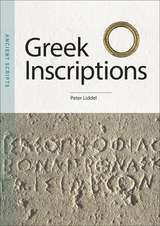 Greek Inscriptions: Ancient Scripts
Peter Liddel
J. Paul Getty Trust, The, 2025 An accessible introduction to Greek inscriptions that reveals their importance to ancient Greek culture. Ancient Greek inscriptions are crucially important in understanding the cultures of Greece and the Mediterranean in antiquity. They provide glimpses of the behavior of the people of the time, including clues about their mindsets and aspirations. These public records combine word and image in a multitude of ways and are rich in the insights they offer. The inscriptions examined in this volume come from a range of objects on metal or stone that include laws, decrees, accounts and inventories, honorific texts, dedications to deities, and funerary epitaphs. They give a broad view of interstate relations, historical narratives, and the political administration of various city-states while also providing new perspectives on concepts such as democracy, citizenship, gender, ethnicity, religion, and the supernatural. Peter Liddel emphasizes the physical form of the texts alongside their importance in understanding ancient Greek culture. Accessible and insightful, Greek Inscriptions both highlights the significance and history of these artifacts and examines their reception in the modern world.
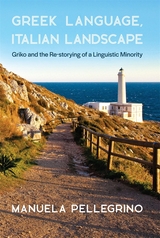 Greek Language, Italian Landscape: Griko and the Re-storying of a Linguistic Minority
Manuela Pellegrino
Harvard University Press, 2021 Greek Language, Italian Landscape traces the transformation of language ideologies and practices of Griko, a variety of Modern Greek used in the southern Italian province of Lecce, in Apulia. Building on ethnographic and linguistic data collected in Grecìa Salentina and Greece, Manuela Pellegrino recounts the story of Griko, highlighting the effects of the interplay of language ideologies and policies promoted by the European Union, Italy, and Greece. She shows how the longstanding concern about language demise has, over time, generated social relationships and fueled moral feelings and political interests that have ultimately shaped the predicament of Griko.
Pellegrino proposes the concept of “the cultural temporality of language” to describe how locals are continually re-storying Griko by recounting its multiple pasts, converting what was once considered a “backward language” into a symbolic resource that has reentered their daily lives in multiple ways. Yet the question as to which chapter of Griko’s past best represents the language—and is best represented by it—becomes a discursive struggle for community self-understanding and representation. Griko and its cultural heritage are used to redeem the past, to contest the present, and to envision the future of this land and its people.
 Greek Lyric, Volume I: Sappho. Alcaeus
Sappho and Alcaeus; edited and translated by David A. Campbell
Harvard University Press, 1982 Precious snippets of ancient song.
This volume contains the poetic fragments of the two illustrious singers of early sixth-century Lesbos: Sappho, the most famous woman poet of antiquity, whose main theme was love; and Alcaeus, poet of wine, war, and politics, and composer of short hymns to the gods. Also included are the principal testimonia, the ancients’ reports on the lives and work of the two poets.
The five volumes in the Loeb Classical Library edition of Greek Lyric contain the surviving fragments of solo and choral song. This poetry was not preserved in medieval manuscripts, and few complete poems remain. Later writers quoted from the poets, but only so much as suited their needs; these quotations are supplemented by papyrus texts found in Egypt, most of them badly damaged. The high quality of what remains makes us realize the enormity of our loss.
Volume I presents Sappho and Alcaeus. Volume II contains the work of Anacreon, composer of solo song; the Anacreontea; and the earliest writers of choral poetry, notably the seventh-century Spartans Alcman and Terpander. Stesichorus, Ibycus, Simonides, and other sixth-century poets are in Volume III. Bacchylides and other fifth-century poets are in Volume IV along with Corinna (although some argue that she belongs to the third century). Volume V contains the new school of poets active from the mid-fifth to the mid-fourth century and also collects folk songs, drinking songs, hymns, and other anonymous pieces.
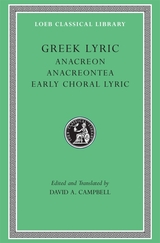 Greek Lyric, Volume II: Anacreon. Anacreontea. Early Choral Lyric
David A. Campbell
Harvard University Press Precious snippets of ancient song.
The five volumes in the Loeb Classical Library edition of Greek Lyric contain the surviving fragments of solo and choral song. This poetry was not preserved in medieval manuscripts, and few complete poems remain. Later writers quoted from the poets, but only so much as suited their needs; these quotations are supplemented by papyrus texts found in Egypt, most of them badly damaged. The high quality of what remains makes us realize the enormity of our loss.
Volume I presents Sappho and Alcaeus. Volume II contains the work of Anacreon, composer of solo song; the Anacreontea; and the earliest writers of choral poetry, notably the seventh-century Spartans Alcman and Terpander. Stesichorus, Ibycus, Simonides, and other sixth-century poets are in Volume III. Bacchylides and other fifth-century poets are in Volume IV along with Corinna (although some argue that she belongs to the third century). Volume V contains the new school of poets active from the mid-fifth to the mid-fourth century and also collects folk songs, drinking songs, hymns, and other anonymous pieces.
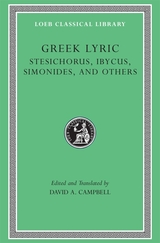 Greek Lyric, Volume III: Stesichorus, Ibycus, Simonides, and Others
Stesichorus, Ibycus, Simonides, et al.; edited and translated by David A. Campbell
Harvard University Press Precious snippets of ancient song.
The most important poets writing in Greek in the sixth century BC came from Sicily and southern Italy. Stesichorus was called by ancient writers “most Homeric”—a recognition of his epic themes and noble style. He composed verses about the Trojan War and its aftermath, the Argonauts, the adventures of Heracles. He may have been a solo singer, performing these poems to his own cithara accompaniment. Ibycus probably belonged to the colony of Rhegium in southwestern Italy. Like Stesichorus he wrote lyrical narratives on mythological themes, but he also composed erotic poems. Simonides is said to have spent his later years in Sicily. He was in Athens at the time of the Persian Wars, though, and was acclaimed for his epitaph on the Athenians who died at Marathon. He was a successful poet in various genres, including victory odes, dirges, and dithyrambic poetry. The power of his pathos emerges in the fragments we have.
All the extant verse of these poets is given in this third volume of David Campbell’s edition of Greek lyric poetry, along with the ancients’ accounts of their lives and works. Ten contemporary poets are also included, among them Arion, Lasus, and Pratinas.
The LCL edition of Greek Lyric is in five volumes. Sappho and Alcaeus—the illustrious singers of sixth-century Lesbos—are in the first volume. Volume II contains the work of Anacreon, composer of solo song; the Anacreontea; and the earliest writers of choral poetry, notably the seventh-century Spartans Alcman and Terpander. Bacchylides and other fifth-century poets are in Volume IV along with Corinna (although some argue that she belongs to the third century). The last volume includes the new school of dithyrambic poets (mid-fifth to mid-fourth century), together with the anonymous poems: drinking songs, children’s songs, cult hymns, and others.
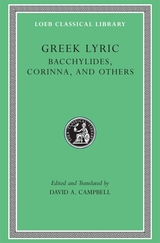 Greek Lyric, Volume IV: Bacchylides, Corinna, and Others
Bacchylides, Corinna, et al.; edited and translated by David A. Campbell
Harvard University Press Precious snippets of ancient song.
Bacchylides, nephew of Simonides and rival of Pindar, wrote choral poetry of many types. We have a number of his victory odes—poems celebrating victories in athletic contests—as well as dithyrambs and other hymns. He was a master of the captivating narrative. Also represented in this volume is the Boeotian Corinna, whose work, versions of local myths, survives in greater quantity than that of any other Greek woman poet except Sappho. Ancient authorities regarded Corinna as an older contemporary and mentor of Pindar; but some modern scholars place her later, in the third century BC. Other women are here too: Myrtis, also from Boeotia; Telesilla of Argos, famous for her military leadership as well as her hymns; the shadowy Charixena; and Praxilla of Sicyon, author of choral poems and drinking songs.
David Campbell gives all the extant verse of these poets, along with the ancients’ accounts of their lives and works. This fourth volume of his much-praised edition of Greek lyric poetry also includes Timocreon of Rhodes, pentathlete and writer of invective; Diagoras of Melos, choral poet and alleged atheist; and Ion of Chios. Sophocles is represented by fragments of his paean Asclepius, Euripides by the few surviving lines of his ode for Alcibiades’ dazzling victory in the chariot race at Olympia.
This is the fourth in a five-volume edition of Greek lyric poets. Sappho and Alcaeus, the illustrious singers of sixth-century Lesbos, are in the first. Volume II contains the work of Anacreon, composer of solo song; the Anacreontea; and the earliest writers of choral poetry, notably the seventh-century Spartans Alcman and Terpander. Stesichorus, Ibycus, Simonides, and other sixth-century poets are in Volume III. The last volume includes the new school of dithyrambic poets (mid-fifth to mid-fourth century), together with the anonymous poems: drinking songs, children’s songs, cult hymns, and others.
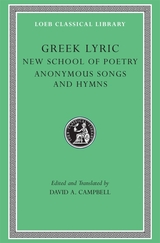 Greek Lyric, Volume V: New School of Poetry. Anonymous Songs and Hymns
David A. Campbell
Harvard University Press Precious snippets of ancient song.
Towards the end of the fifth century BC, Aristophanes and the other writers of comedy used contemporary poets and musicians as targets for their jokes, making fun of their innovations in language and music. The dithyrambs of Melanippides, Cinesias, Phrynis, Timotheus, and Philoxenus are remarkable examples of this new style. The poets of the new school, active from the mid-fifth to the mid-fourth century, are presented in this final volume of David Campbell’s widely praised edition of Greek lyric poetry. The longest piece extant is a nome by Timotheus—the foremost of these poets—called The Persians; it is a florid account of the battle of Salamis, to be sung solo to cithara accompaniment.
This volume also collects folk songs, drinking songs, and other anonymous pieces. The folk songs come from many parts of Greece and include children’s ditties, marching songs, love songs, and snatches of cult poetry. The drinking songs are derived mainly from Athenaeus’ collection of Attic scolia, short pieces performed at drinking parties in Athens. The anonymous pieces come from papyrus, vases, and stone as well as from literary texts, and include hymns, narrative poetry, and satirical writing.
This is the fifth in a five-volume edition of Greek lyric poets. Sappho and Alcaeus—the illustrious singers of sixth-century Lesbos—are in the first. Volume II contains the work of Anacreon, composer of solo song; the Anacreontea; and the earliest writers of choral poetry, notably the seventh-century Spartans Alcman and Terpander. Stesichorus, Ibycus, Simonides, and other sixth-century poets are in Volume III. Bacchylides and other fifth-century poets are in Volume IV along with Corinna (although some argue that she belongs to the third century).
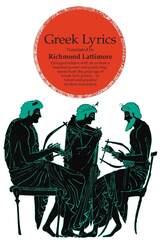 Greek Lyrics, Second Edition: More than a Hundred Poems and Poetic Fragments from the Great Age of Greek Lyric Poetry
Richmond Lattimore
University of Chicago Press, 1960 A collection of more than one hundred poems and poetic fragments from the golden age of Greek Lyric poetry.
In this second edition of Greek Lyrics, translator and editor Richmond Lattimore brings together a vast assortment of seventh-and sixth-century Greek lyric, elegiac, and iambic poetry. For the Greekless student or curious scholar, these translations showcase the diversity of poetic subjects in classical antiquity, which range from love poems to medical inscriptions and drinking songs. Gracefully and robustly translated by a number of top-tier translators, this volume includes poets such as Archílochus, Callínus, Semónides of Amórgos, Hippónax, Tyrtaéus, Mimnérmus, Solon, Phocýlides, Xenóphanes, Theógnis, Terpánder, Alcman, Stesíchorus, íbycus, Sappho, Alcaéus, Anácreon, Hýbrias, Praxílla, Corínna, Simónides of Ceos, Pindar, and Bacchýlides.
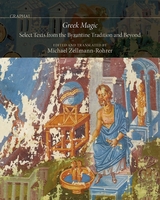 Greek Magic: Select Texts from the Byzantine Tradition and Beyond
Michael Zellmann-Rohrer
Harvard University Press Greek Magic collects, edits, and translates a vast number of Greek magical texts—spells, incantations, and related elements incorporated in prayers—from over one hundred manuscripts that date from the tenth through the eighteenth centuries and often preserve much earlier works. The result gives us a new understanding of the nature of belief and worship among medieval Greek-speaking Christians and offers a spellbinding resource for understanding the social world of medieval Byzantium.
These spells bear fresh and direct witness to practical concerns of daily life: their users hoped to protect crops from pests, cure various ailments, catch thieves, and ease childbirth. The rituals in which they are embedded range from the mundane to the spectacular and bizarre. These rites and spells are not, however, relics of antiquity that have simply seeped into the world of medieval Christianity. Instead, they reveal how medieval Christians adapted and remixed practices and techniques from the past and from their neighbors into new and vibrant social practices—now made accessible to modern readers.
The Greek Magical Papyri in Translation, Including the Demotic Spells, Volume 1: Texts
Edited by Hans Dieter Betz
University of Chicago Press, 1992 The most comprehensive collection ever published of ancient Greek spells, rituals, and hymns
"The Greek magical papyri" is a collection of magical spells and formulas, hymns, and rituals from Greco-Roman Egypt, dating from the second century B.C. to the fifth century A.D. Containing a fresh translation of the Greek papyri, as well as Coptic and Demotic texts, this new translation has been brought up to date and is now the most comprehensive collection of this literature, and the first ever in English.
The Greek Magical Papyri in Transition is an invaluable resource for scholars in a wide variety of fields, from the history of religions to the classical languages and literatures, and it will fascinate those with a general interest in the occult and the history of magic.
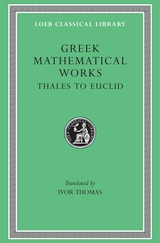 Greek Mathematical Works, Volume I: Thales to Euclid
Ivor Thomas
Harvard University Press Elemental learning.
The splendid achievement of Greek mathematics is here illustrated in two volumes of selected mathematical works. Volume I (LCL 335) contains the divisions of mathematics; mathematics in Greek education; calculation; arithmetical notation and operations, including square root and cube root; Pythagorean arithmetic, including properties of numbers; the square root of 2; proportion and means; algebraic equations; Proclus; Thales; Pythagorean geometry; Democritus; Hippocrates of Chios; duplicating the cube and squaring the circle; trisecting angles; Theaetetus; Plato; Eudoxus of Cnidus (pyramid, cone); Aristotle (the infinite, the lever); Euclid.
Volume II (LCL 362) contains Aristarchus (distances of sun and moon); Archimedes (cylinder, sphere, cubic equations; conoids; spheroids; spiral; expression of large numbers; mechanics; hydrostatics); Eratosthenes (measurement of the earth); Apollonius (conic sections and other works); later development of geometry; trigonometry (including Ptolemy’s table of sines); mensuration: Heron of Alexandria (mensuration); Diophantus (algebra, determinate and indeterminate equations); Pappus (the revival of geometry).
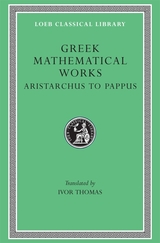 Greek Mathematical Works, Volume II: Aristarchus to Pappus
Ivor Thomas
Harvard University Press Elemental learning.
The splendid achievement of Greek mathematics is here illustrated in two volumes of selected mathematical works. Volume I (LCL 335) contains the divisions of mathematics; mathematics in Greek education; calculation; arithmetical notation and operations, including square root and cube root; Pythagorean arithmetic, including properties of numbers; the square root of 2; proportion and means; algebraic equations; Proclus; Thales; Pythagorean geometry; Democritus; Hippocrates of Chios; duplicating the cube and squaring the circle; trisecting angles; Theaetetus; Plato; Eudoxus of Cnidus (pyramid, cone); Aristotle (the infinite, the lever); Euclid.
Volume II (LCL 362) contains Aristarchus (distances of sun and moon); Archimedes (cylinder, sphere, cubic equations; conoids; spheroids; spiral; expression of large numbers; mechanics; hydrostatics); Eratosthenes (measurement of the earth); Apollonius (conic sections and other works); later development of geometry; trigonometry (including Ptolemy’s table of sines); mensuration: Heron of Alexandria (mensuration); Diophantus (algebra, determinate and indeterminate equations); Pappus (the revival of geometry).
 Greek Media Discourse from Reconstitution of Democracy to Memorandums of Understanding: Transformations and Symbolisms
Nikoletta Tsitsanoudis-Mallidis
Harvard University Press, 2022 In Greek Media Discourse, Nikoletta Tsitsanoudis-Mallidis examines the changes in the form and symbolism of the language utilized by the media in Greece since the fall of the dictatorship in 1974, revealing linguistic reflections of important economic and political changes of the country. She argues that the language took a more grassroots approach because it served the climate of the restoration of democracy. It took on progressive implications by distancing from more formal approaches, facilitating political alliances and raising popular expectations.
Greek language took a more populist turn when private media sought opportunities within the lower and lower-middle classes. Language both influenced, and was influenced by, an embrace of politics through the “authority” it had gained via television and publishing. It also lost and regained the role of representing the campaigns of the common people. In the era of memoranda it became a sharp tool of manipulation, aiming at the coercive acceptance of harsh economic measures.
Finally, Tsitsanoudis-Mallidis demonstrates the way language provokes critical debate, with questions about how ultimately democratic are the forces that shape a discourse with such a “biased” projection as journalism, leaving unanswered the final question: How pedagogical can a public discourse be when it loses its democracy as a social good?
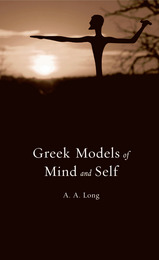 Greek Models of Mind and Self
A. A. Long
Harvard University Press, 2014 This lively book offers a wide-ranging study of Greek notions of mind and human selfhood from Homer through Plotinus. A. A. Long anchors his discussion in questions of recurrent and universal interest. What happens to us when we die? How is the mind or soul related to the body? Are we responsible for our own happiness? Can we achieve autonomy? Long asks when and how these questions emerged in ancient Greece, and shows that Greek thinkers’ modeling of the mind gave us metaphors that we still live by, such as the rule of reason or enslavement to passion. He also interrogates the less familiar Greek notion of the intellect’s divinity, and asks what that might mean for us.
Because Plato’s dialogues articulate these themes more sharply and influentially than works by any other Greek thinker, Plato receives the most sustained treatment in this account. But at the same time, Long asks whether Plato’s explanation of the mind and human behavior is more convincing for modern readers than that contained in the older Homeric poems. Turning to later ancient philosophy, especially Stoicism, Long concludes with an exploration of Epictetus’s injunction to live life by making correct use of one’s mental impressions.
An authoritative treatment of Greek modes of self-understanding, Greek Models of Mind and Self demonstrates how ancient thinkers grappled with what is closest to us and yet still most mysterious—our own essence as singular human selves—and how the study of Greek thought can enlarge and enrich our experience.
Greek Ostraca in the University of Michigan Collection: Part I - Texts
Leiv Amundsen
University of Michigan Press, 1935 This volume documents Greek ostraca from the University’s excavations at Karanis; a few additional pieces were purchased since 1920 by Dr. D.L. Askren Some of the texts contain Arsinoite place names; in all cases a Fayumic origin may be taken for granted.
Greek Prostitutes in the Ancient Mediterranean, 800 BCE–200 CE
Allison Glazebrook
University of Wisconsin Press, 2011 Greek Prostitutes in the Ancient Mediterranean, 800 BCE–200 CE challenges the often-romanticized view of the prostitute as an urbane and liberated courtesan by examining the social and economic realities of the sex industry in Greco-Roman culture. Departing from the conventional focus on elite society, these essays consider the Greek prostitute as displaced foreigner, slave, and member of an urban underclass.
The contributors draw on a wide range of material and textual evidence to discuss portrayals of prostitutes on painted vases and in the literary tradition, their roles at symposia (Greek drinking parties), and their place in the everyday life of the polis. Reassessing many assumptions about the people who provided and purchased sexual services, this volume yields a new look at gender, sexuality, urbanism, and economy in the ancient Mediterranean world.
The Greek Pursuit of Knowledge
Jacques Brunschwig
Harvard University Press, 2003 Ancient Greek thought is the essential wellspring from which the intellectual, ethical, and political civilization of the West draws and to which, even today, we repeatedly return. In this volume drawn from the reference work Greek Thought: A Guide to Classical Knowledge, major scholars take up basic topics in philosophy and science, offering an account of the extraordinary explosion of desire for knowledge in the classical Greek world.
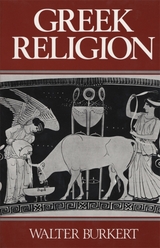 Greek Religion
Walter Burkert
Harvard University Press, 1985 In this book Walter Burkert, the most eminent living historian of ancient Greek religion, has produced the standard work for our time on that subject. First published in German in 1977, it has now been translated into English with the assistance of the author himself. A clearly structured and readable survey for students and scholars, it will be welcomed as the best modern account of any polytheistic religious system.
Burkert draws on archaeological discoveries, insights from other disciplines, and inscriptions in Linear B to reconstruct the practices and beliefs of the Minoan–Mycenaean age. The major part of his book is devoted to the archaic and classical epochs. He describes the various rituals of sacrifice and libation and explains Greek beliefs about purification. He investigates the inspiration behind the great temples at Olympia, Delphi, Delos, and the Acropolis—discussing the priesthood, sanctuary, and oracles. Considerable attention is given to the individual gods, the position of the heroes, and beliefs about the afterlife. The different festivals are used to illuminate the place of religion in the society of the city-state. The mystery cults, at Eleusis and among the followers of Bacchus and Orpheus, are also set in that context. The book concludes with an assessment of the great classical philosophers’ attitudes to religion.
Insofar as possible, Burkert lets the evidence—from literature and legend, vase paintings and archaeology—speak for itself; he elucidates the controversies surrounding its interpretation without glossing over the enigmas that remain. Throughout, the notes (updated for the English-language edition) afford a wealth of further references as the text builds up its coherent picture of what is known of the religion of ancient Greece.
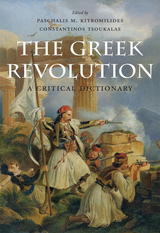 The Greek Revolution: A Critical Dictionary
Paschalis M. Kitromilides
Harvard University Press, 2021 Winner of the 2022 London Hellenic Prize
On the bicentennial of the Greek Revolution, an essential guide to the momentous war for independence of the Greeks from the Ottoman Empire.
The Greek war for independence (1821–1830) often goes missing from discussion of the Age of Revolutions. Yet the rebellion against Ottoman rule was enormously influential in its time, and its resonances are felt across modern history. The Greeks inspired others to throw off the oppression that developed in the backlash to the French Revolution. And Europeans in general were hardly blind to the sight of Christian subjects toppling Muslim rulers. In this collection of essays, Paschalis Kitromilides and Constantinos Tsoukalas bring together scholars writing on the many facets of the Greek Revolution and placing it squarely within the revolutionary age.
An impressive roster of contributors traces the revolution as it unfolded and analyzes its regional and transnational repercussions, including the Romanian and Serbian revolts that spread the spirit of the Greek uprising through the Balkans. The essays also elucidate religious and cultural dimensions of Greek nationalism, including the power of the Orthodox church. One essay looks at the triumph of the idea of a Greek “homeland,” which bound the Greek diaspora—and its financial contributions—to the revolutionary cause. Another essay examines the Ottoman response, involving a series of reforms to the imperial military and allegiance system. Noted scholars cover major figures of the revolution; events as they were interpreted in the press, art, literature, and music; and the impact of intellectual movements such as philhellenism and the Enlightenment.
Authoritative and accessible, The Greek Revolution confirms the profound political significance and long-lasting cultural legacies of a pivotal event in world history.
Greek Ritual Poetics
Dimitrios Yatromanolakis
Harvard University Press Investigating ritual in Greece from cross-disciplinary and transhistorical perspectives, Greek Ritual Poetics offers novel readings of the pivotal role of ritual in Greek traditions by exploring a broad spectrum of texts, art, and social practices. This collection of essays written by an international group of leading scholars in a number of disciplines presents a variety of methodological approaches to secular and religious rituals, and to the narrative and conceptual strategies of their reenactment and manipulation in literary, pictorial, and social discourses. Addressing understudied aspects of Greek ritual and societies, this book will prove significant for classicists, anthropologists, Byzantinists, art historians, neohellenists, and comparatists interested in the interaction between ritual, aesthetics, and cultural communicative systems.
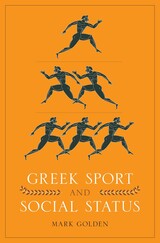 Greek Sport and Social Status
By Mark Golden
University of Texas Press, 2008 From the ancient Olympic games to the World Series and the World Cup, athletic achievement has always conferred social status. In this collection of essays, a noted authority on ancient sport discusses how Greek sport has been used to claim and enhance social status, both in antiquity and in modern times. Mark Golden explores a variety of ways in which sport provided a route to social status. In the first essay, he explains how elite horsemen and athletes tried to ignore the important roles that jockeys, drivers, and trainers played in their victories, as well as how female owners tried to rank their equestrian achievements above those of men and other women. In the next essay, Golden looks at the varied contributions that slaves made to sport, despite its use as a marker of free, Greek status. In the third essay, he evaluates the claims made by gladiators in the Greek east that they be regarded as high-status athletes and asserts that gladiatorial spectacle is much more like Greek sport than scholars today usually admit. In the final essay, Golden critiques the accepted accounts of ancient and modern Olympic history, arguing that attempts to raise the status of the modern games by stressing their links to the ancient ones are misleading. He concludes that the contemporary movement to call a truce in world conflicts during the Olympics is likewise based on misunderstandings of ancient Greek traditions.
 Greek Thought: A Guide to Classical Knowledge
Edited by Jacques Brunschwig and Geoffrey E. R. LloydTranslated under the direction of Catherine Porter
Harvard University Press, 2000 Ancient Greek thought is the essential wellspring from which the intellectual, ethical, and political civilization of the West draws and to which, even today, we repeatedly return. In more than sixty essays by an international team of scholars, this volume explores the full breadth and reach of Greek thought--investigating what the Greeks knew as well as what they thought about what they knew, and what they believed, invented, and understood about the conditions and possibilities of knowing. Calling attention to the characteristic reflexivity of Greek thought, the analysis in this book reminds us of what our own reflections owe to theirs.
In sections devoted to philosophy, politics, the pursuit of knowledge, major thinkers, and schools of thought, this work shows us the Greeks looking at themselves, establishing the terms for understanding life, language, production, and action. The authors evoke not history, but the stories the Greeks told themselves about history; not their poetry, but their poetics; not their speeches, but their rhetoric. Essays that survey political, scientific, and philosophical ideas, such as those on Utopia and the Critique of Politics, Observation and Research, and Ethics; others on specific fields from Astronomy and History to Mathematics and Medicine; new perspectives on major figures, from Anaxagoras to Zeno of Elea; studies of core traditions from the Milesians to the various versions of Platonism: together these offer a sense of the unquenchable thirst for knowledge that marked Greek civilization--and that Aristotle considered a natural and universal trait of humankind. With thirty-two pages of color illustrations, this work conveys the splendor and vitality of the Greek intellectual adventure.
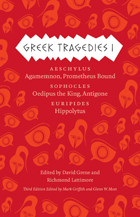 Greek Tragedies 1: Aeschylus: Agamemnon, Prometheus Bound; Sophocles: Oedipus the King, Antigone; Euripides: Hippolytus
Edited by Mark Griffith, Glenn W. Most, David Grene, and Richmond Lattimore
University of Chicago Press, 2013 Greek Tragedies, Volume I contains Aeschylus’s “Agamemnon,” translated by Richmond Lattimore; Aeschylus’s “Prometheus Bound,” translated by David Grene; Sophocles’s “Oedipus the King,” translated by David Grene; Sophocles’s “Antigone,” translated by Elizabeth Wyckoff; and Euripides’s “Hippolytus,” translated by David Grene. Many years ago, the University of Chicago Press undertook a momentous project: a new translation of the Greek tragedies that would be the ultimate resource for teachers, students, and readers. They succeeded. Under the expert management of eminent classicists David Grene and Richmond Lattimore, those translations combined accuracy, poetic immediacy, and clarity of presentation to render the surviving masterpieces of Aeschylus, Sophocles, and Euripides in an English so lively and compelling that they remain the standard translations. The updated third editions of these classic works were designed to ensure that our Greek tragedies remain the leading English-language versions throughout the twenty-first century. In this highly anticipated third edition, Mark Griffith and Glenn W. Most have carefully updated the translations to bring them even closer to the ancient Greek while retaining the vibrancy for which our English versions are famous. This edition also includes brand-new translations of Euripides’ Medea, The Children of Heracles, Andromache, and Iphigenia among the Taurians, fragments of lost plays by Aeschylus, and the surviving portion of Sophocles’s satyr-drama The Trackers. New introductions for each play offer essential information about its first production, plot, and reception in antiquity and beyond. In addition, each volume includes an introduction to the life and work of its tragedian, as well as notes addressing textual uncertainties and a glossary of names and places mentioned in the plays. In addition to the new content, the volumes have been reorganized both within and between volumes to reflect the most up-to-date scholarship on the order in which the plays were originally written. The result is a set of handsome paperbacks destined to introduce new generations of readers to these foundational works of Western drama, art, and life.
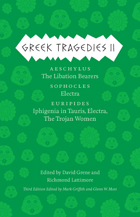 Greek Tragedies 2: Aeschylus: The Libation Bearers; Sophocles: Electra; Euripides: Iphigenia among the Taurians, Electra, The Trojan Women
Edited by Mark Griffith, Glenn W. Most, David Grene, and Richmond Lattimore
University of Chicago Press, 2013 Greek Tragedies, Volume II contains Aeschylus’s “The Libation Bearers,” translated by Richmond Lattimore; Sophocles’s “Electra,” translated by David Grene; Euripides’s “Iphigenia among the Taurians,” translated by Anne Carson; Euripides’s “Electra,” translated by Emily Townsend Vermeule; and Euripides’s “The Trojan Women,” translated by Richmond Lattimore. Many years ago, the University of Chicago Press undertook a momentous project: a new translation of the Greek tragedies that would be the ultimate resource for teachers, students, and readers. They succeeded. Under the expert management of eminent classicists David Grene and Richmond Lattimore, those translations combined accuracy, poetic immediacy, and clarity of presentation to render the surviving masterpieces of Aeschylus, Sophocles, and Euripides in an English so lively and compelling that they remain the standard translations. The updated third editions of these classic works were designed to ensure that our Greek tragedies remain the leading English-language versions throughout the twenty-first century. In this highly anticipated third edition, Mark Griffith and Glenn W. Most have carefully updated the translations to bring them even closer to the ancient Greek while retaining the vibrancy for which our English versions are famous. This edition also includes brand-new translations of Euripides’ Medea, The Children of Heracles, Andromache, and Iphigenia among the Taurians, fragments of lost plays by Aeschylus, and the surviving portion of Sophocles’s satyr-drama The Trackers. New introductions for each play offer essential information about its first production, plot, and reception in antiquity and beyond. In addition, each volume includes an introduction to the life and work of its tragedian, as well as notes addressing textual uncertainties and a glossary of names and places mentioned in the plays. In addition to the new content, the volumes have been reorganized both within and between volumes to reflect the most up-to-date scholarship on the order in which the plays were originally written. The result is a set of handsome paperbacks destined to introduce new generations of readers to these foundational works of Western drama, art, and life.
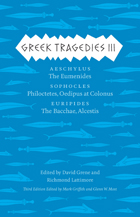 Greek Tragedies 3: Aeschylus: The Eumenides; Sophocles: Philoctetes, Oedipus at Colonus; Euripides: The Bacchae, Alcestis
Edited by Mark Griffith, Glenn W. Most, David Grene, and Richmond Lattimore
University of Chicago Press, 2013 Greek Tragedies, Volume III contains Aeschylus’s “The Eumenides,” translated by Richmond Lattimore; Sophocles’s “Philoctetes,” translated by David Grene; Sophocles’s “Oedipus at Colonus,” translated by Robert Fitzgerald; Euripides’s “The Bacchae,” translated by William Arrowsmith; and Euripides’s “Alecestis,” translated by Richmond Lattimore. Many years ago, the University of Chicago Press undertook a momentous project: a new translation of the Greek tragedies that would be the ultimate resource for teachers, students, and readers. They succeeded. Under the expert management of eminent classicists David Grene and Richmond Lattimore, those translations combined accuracy, poetic immediacy, and clarity of presentation to render the surviving masterpieces of Aeschylus, Sophocles, and Euripides in an English so lively and compelling that they remain the standard translations. The updated third editions of these classic works were designed to ensure that our Greek tragedies remain the leading English-language versions throughout the twenty-first century. In this highly anticipated third edition, Mark Griffith and Glenn W. Most have carefully updated the translations to bring them even closer to the ancient Greek while retaining the vibrancy for which our English versions are famous. This edition also includes brand-new translations of Euripides’ Medea, The Children of Heracles, Andromache, and Iphigenia among the Taurians, fragments of lost plays by Aeschylus, and the surviving portion of Sophocles’s satyr-drama The Trackers. New introductions for each play offer essential information about its first production, plot, and reception in antiquity and beyond. In addition, each volume includes an introduction to the life and work of its tragedian, as well as notes addressing textual uncertainties and a glossary of names and places mentioned in the plays. In addition to the new content, the volumes have been reorganized both within and between volumes to reflect the most up-to-date scholarship on the order in which the plays were originally written. The result is a set of handsome paperbacks destined to introduce new generations of readers to these foundational works of Western drama, art, and life.
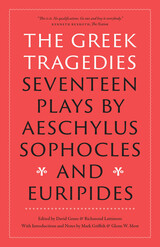 The Greek Tragedies: Seventeen Plays by Aeschylus, Sophocles, and Euripides
Aeschylus, Sophocles, and Euripides
University of Chicago Press, 2025 Chicago’s renowned translations of the greatest surviving plays of ancient Greece, collected into a single volume.
Drawn from the authoritative third editions of David Grene and Richmond Lattimore’s collections of the complete Greek tragedies, expertly updated by Mark Griffith and Glenn W. Most, this collection brings together seventeen of the greatest surviving plays of ancient Greece. Combining accuracy, poetic immediacy, and clarity of presentation, the masterpieces of Aeschylus, Sophocles, and Euripides have been rendered so compellingly in English that they remain the definitive translations. Each text has been carefully updated to bring it even closer to the ancient Greek original while retaining the vibrancy for which Chicago’s versions are famous.
Alongside the plays, this edition includes an introduction to the life and work of each tragedian; an introduction to each play offering essential information about its first production, plot, and reception through the centuries; and notes addressing textual uncertainties. Featuring lively translations by eminent classicists and authors including Anne Carson, Robert Fitzgerald, David Grene, Richmond Lattimore, Oliver Taplin, Emily Townsend Vermeule, and Elizabeth Wyckoff, this is an indispensable anthology for any reader of the foundational works of Western drama, art, and life.
Greek Tragedies, Volume 1
Edited by David Grene and Richmond Lattimore
University of Chicago Press, 1991 In three paperback volumes, the Grene and Lattimore editions offer a selection of the most important and characteristic plays of Aeschylus, Sophocles, and Euripides from the nine-volume anthology of The Complete Greek Tragedies. Over the years these authoritative, critically acclaimed editions have been the preferred choice of more than three million readers for personal libraries and individual study as well as for classroom use.
Greek Tragedies, Volume 2
Edited by David Grene and Richmond Lattimore
University of Chicago Press, 1960 In three paperback volumes, the Grene and Lattimore editions offer a selection of the most important and characteristic plays of Aeschylus, Sophocles, and Euripides from the nine-volume anthology of The Complete Greek Tragedies. Over the years these authoritative, critically acclaimed editions have been the preferred choice of more than three million readers for personal libraries and individual study as well as for classroom use.
Greek Tragedies, Volume 3
Edited by David Grene and Richmond Lattimore
University of Chicago Press, 1991 In three paperback volumes, the Grene and Lattimore editions offer a selection of the most important and characteristic plays of Aeschylus, Sophocles, and Euripides from the nine-volume anthology of The Complete Greek Tragedies. Over the years these authoritative, critically acclaimed editions have been the preferred choice of more than three million readers for personal libraries and individual study as well as for classroom use.
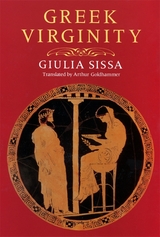 Greek Virginity
Giulia Sissa
Harvard University Press, 1990 For centuries, scholars have mused over the meaning of the bizarre physical posture of the virgin priestess at Delphi. She delivered Apollo’s oracles while seated on a raised tripod as vapors rose from the earth to her body. The image of prophecies taking shape inside a virginal body provides the starting point for this revealing exploration of the concept of the female body in Greece before the impact of Christianity.
In an analysis drawing upon Greek drama, myths, vase paintings, religious practices, the philosophers, and the Hippocratic medical writings, Giulia Sissa draws striking conclusions about the classical conceptions of sexual purity and of the female body as vehicle and vessel. She argues persuasively that virginity, for the Greeks, was unrelated to the breaking of the hymen and was not irrevocably lost after sexual relations. Since Greek doctors believed sexual activity and childbearing to be important for good health in women, virginity and abstinence had to be explained in terms of some purpose, usually sacred; it was not a virtue in itself. Sissa’s discussion of the differences between classical views and those of the Christian church fathers is illuminating. This pathbreaking essay on ancient sexuality focuses throughout on symbolism as well as on beliefs and conventions. The author’s extensive research, fresh insights, and urbane style make this a book for anyone interested in ancient thought and society and in women’s history.
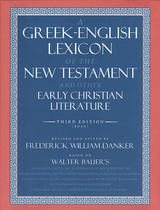 A Greek-English Lexicon of the New Testament and Other Early Christian Literature
Walter Bauer
University of Chicago Press, 2000 Described as an "invaluable reference work" (Classical Philology) and "a tool indispensable for the study of early Christian literature" (Religious Studies Review) in its previous edition, this new updated American edition of Walter Bauer's Wörterbuch zu den Schriften des Neuen Testaments builds on its predecessor's staggering deposit of extraordinary erudition relating to Greek literature from all periods. Including entries for many more words, the new edition also lists more than 25,000 additional references to classical, intertestamental, Early Christian, and modern literature.
In this edition, Frederick W. Danker's broad knowledge of Greco-Roman literature, as well as papyri and epigraphs, provides a more panoramic view of the world of Jesus and the New Testament. Danker has also introduced a more consistent mode of reference citation, and has provided a composite list of abbreviations to facilitate easy access to this wealth of information.
Perhaps the single most important lexical innovation of Danker's edition is its inclusion of extended definitions for Greek terms. For instance, a key meaning of "episkopos" was defined in the second American edition as overseer; Danker defines it as "one who has the responsibility of safeguarding or seeing to it that something is done in the correct way, guardian." Such extended definitions give a fuller sense of the word in question, which will help avoid both anachronisms and confusion among users of the lexicon who may not be native speakers of English.
Danker's edition of Bauer's Wörterbuch will be an indispensable guide for Biblical and classical scholars, ministers, seminarians, and translators.
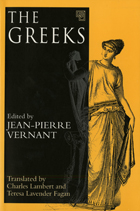 The Greeks
Edited by Jean-Pierre Vernant
University of Chicago Press, 1995 What do we mean when we speak of ancient Greeks? A person from the Archaic period? The war hero celebrated by Homer? Or the fourth century "political animal" described by Aristotle? In this book, leading scholars show what it meant to be Greek during the classical period of Greek civilization.
The Greeks offers the most complete portraits available of typical Greek personages from Athens to Sparta, Arcadia, Thessaly and Epirus to the city-states of Asia Minor, to the colonies of the Black Sea, southern Italy, and Sicily. Looking at the citizen, the religious believer, the soldier, the servant, the peasant, and others, they show what—in the Greek relationships with the divine, with nature, with others, and with the self—made him "different" in his ways of acting, thinking, and feeling.
The contributors to this volume are Jean-Pierre Vernant, Claude Mosse, Yvon Garlan, Giuseppe Cambiano, Luciano Canfora, James Redfield, Charles Segal, Oswyn Murray, Mario Vegetti, and Philippe Borgeaud.
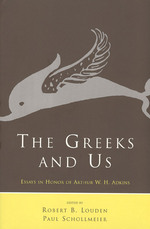 The Greeks and Us: Essays in Honor of Arthur W. H. Adkins
Edited by Robert B. Louden and Paul Schollmeier
University of Chicago Press, 1996 Arthur W. H. Adkins's writings have sparked debates among a wide range of scholars over the nature of ancient Greek ethics and its relevance to modern times. Demonstrating the breadth of his influence, the essays in this volume reveal how leading classicists, philosophers, legal theorists, and scholars of religion have incorporated Adkins's thought into their own diverse research.
The timely subjects addressed by the contributors include the relation between literature and moral understanding, moral and nonmoral values, and the contemporary meaning of ancient Greek ethics. The volume also includes an essay from the late Adkins himself illustrating his methodology in an analysis of the "Speech of Lysias" in Plato's Phaedrus.
The Greeks and Us will interest all those concerned with how ancient moral values do or do not differ from our own.
Contributors include Arthur W. H. Adkins, Stephanie Nelson, Martha C. Nussbaum, Paul Schollmeier, James Boyd White, Bernard Williams, and Lee Yearley.
Commentaries by Wendy Doniger, Charles M. Gray, David Grene, Robert B. Louden, Richard Posner, and Candace Vogler.
Greeks in Michigan
Stavros K. Frangos
Michigan State University Press, 2004 The influence of Greek culture on Michigan began long before the first Greeks arrived. The American settlers of the Old Northwest Territory had definite notions of Greeks and Greek culture. America and its developing society and culture were to be the "New Athens," a locale where the resurgence in the values and ideals of classical Greece were to be reborn. Stavros K. Frangos describes how such preconceptions and the competing desires to retain heritage and to assimilate have shaped the Greek experience in Michigan. From the padrone system to the church communities, Greek institutions have both exploited and served Greek immigrants, and from scattered communities across the state to enclaves in Detroit, Greek immigrants have retained and celebrated Greek culture.
Green Age
Alicia Suskin Ostriker
University of Pittsburgh Press, 2024 The variety of subjects in Green Age is characteristic of Alicia Suskin Ostriker’s writing: from the opening poem, “Fifty,” funny, courageous, and defiant, to a set of birthday poems for a grown daughter; from emulations of the Persian mystic Rumi, to the provactive “Meditation in Seven Days,” whose central assumption is that we may find in the Bible traces of a Canaanite goddess whose worship was forbidden with the advent of patriarchal monotheism.
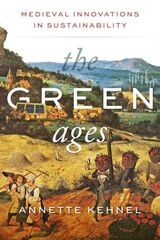 The Green Ages: Medieval Innovations in Sustainability
Annette Kehnel
Brandeis University Press, 2024 A fascinating blend of history and ecological economics that uncovers the medieval precedents for modern concepts of sustainable living.
In The Green Ages, historian Annette Kehnel explores sustainability initiatives from the Middle Ages, highlighting communities that operated a barter trade system on the Monte Subiaco in Italy, sustainable fishing at Lake Constance, common lands in the United Kingdom, transient grazing among Alpine shepherds in the south of France, and bridges built by crowdfunding in Avignon. Kehnel takes these medieval examples and applies their practical lessons to the modern world to prove that we can live sustainably—we’ve done it before!
From the garden economy in the mythical-sounding City of Ladies to early microcredit banks, Kehnel uncovers a world at odds with our understanding of the typical medieval existence. Premodern history is full of inspiring examples and concepts ripe for rediscovery, and we urgently need them as today’s challenges—finite resources, the twilight of consumerism, and growing inequality—threaten what we have come to think of as a modern way of living sustainably. This is a stimulating and revelatory look at a past that has the power to change our future.
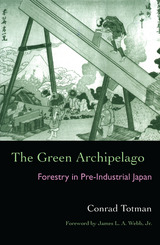 The Green Archipelago: Forestry in Preindustrial Japan
Conrad Totman
Ohio University Press, 1998 This inaugural volume in the Ohio University Press Series in Ecology and History is the paperback edition of Conrad Totman’s widely acclaimed study of Japan’s environmental policies over the centuries.
Professor Totman raises the critical question of how Japan’s steeply mountainous woodland has remained biologically healthy despite centuries of intensive exploitation by a dense human population that has always been dependent on wood and other forest products. Mindful that in global terms this has been a rare outcome, and one that bears directly on Japan’s recent experience as an affluent, industrial society, Totman examines the causes, forms, and effects of forest use and management in Japan during the millennium to 1870. He focuses mainly on the centuries after 1600 when the Japanese found themselves driven by their own excesses into programs of woodland protection and regenerative forestry.
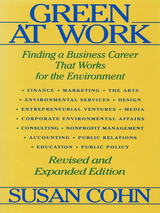 Green at Work: Finding a Business Career that Works for the Environment
Susan Cohn
Island Press, 1995 Green at Work, published by Island Press in 1992, was the first source of information to help nontechnical but environmentally concerned job seekers learn about career opportunities with environmental companies or within the newly emerging "green" corporate culture. Now entirely revised and expanded, this indispensable volume again offers invaluable tools and strategies for launching a green career. Susan Cohn has expanded her scope beyond the business world to examine environmentally focused, nontechnical careers in a wide variety of fields, including communications, banking and finance, consulting, public policy, the non-profit sector, and more. This completely updated edition includes: - profiles of more than 70 individuals that illustrate how people have woven their skills, values, and passions into their work
- listings of more than 400 companies with contact names, addresses, phone numbers, information on what the company does, and its environmental programs and policies
- listings of more than 50 resources, including organizations, publications, and other sources of information
- a bibliography of recommended readings
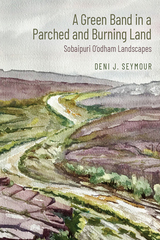 A Green Band in a Parched and Burning Land: Sobaipuri O’odham Landscapes
by Deni J. Seymour
University Press of Colorado, 2022 The result of decades of research, A Green Band in a Parched and Burning Land presents a thorough and detailed understanding of the Sobaipuri O’odham—arguably the most influential and powerful Indigenous group in southern Arizona in the terminal prehistoric and early historic periods, yet one of the least understood and under-studied to have occupied the region. Deni J. Seymour combines historical sources with fresh archaeological data and oral history to reveal an astonishingly different view of, and revise conventional wisdom around, the native history of the region.
First and foremost irrigation farmers, the Sobaipuri O’odham permanently occupied verdant strips along all the major rivers in the region—including the headwaters of the San Pedro and various other areas thought to be beyond their domain. Seymour draws on career-spanning fieldwork, conversations with direct descendants (the O’odham residents of Wa:k), and recent breakthroughs in archaeological, ethnographic, and ethnohistorical research to shed light on their unique forms of landscape use, settlement patterns, and way of life. She details the building materials, linear site layout, and other elements of their singular archaeological signature; newly established dating for individual sites, complex building episodes, and occupational sequences; and evidence of cumulative village occupation as well as the habitation of river valleys and other locales long after supposed abandonment. The book also explains the key relationships between site distributions and landscape characteristics.
Addressing some of the longest-standing archaeological and historical questions about the Sobaipuri O’odham, A Green Band in a Parched and Burning Land reorients the discussion of their crucial place in the history of the region in constructive new directions.
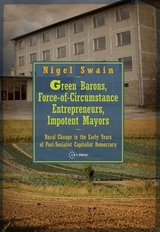 Green Barons, Force-of-Circumstance Entrepreneurs, Impotent Mayors: Rural Change in the Early Years of Post-Socialist Capitalist Democracy
Nigel Swain
Central European University Press, 2013 An exemplary study in comparative contemporary history, this monograph looks at rural change in six countries: Bulgaria, Czech Republic, Hungary, Poland, Romania and Slovakia. In the 1990s most of these nations experienced a fourth radical restructuring of agricultural relations in the twentieth century, and all went through the dramatic transition from communism to capitalism. The author analyzes attempts to activate democracy on a local level and recreate farming structures and non-agricultural businesses based on private ownership and private enterprise. He describes the emergence of a new business class that seeks to dominate local government structures; the recuperation of former communist farming entities by former managers; and the transformation of peasants into rural citizens, who nevertheless remain the underdogs. Swain exposes common features as well as specific divergences between the six countries; he portrays the winners, losers and engineers of transformations. He situates his themes in a wider context that will appeal to a broad range of social scientists and historians.
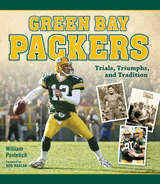 Green Bay Packers: Trials, Triumphs, and Tradition
William Povletich
Wisconsin Historical Society Press, 2012 On the field, legends like Don Hutson, Ray Nitschke, and Brett Favre made the Green Bay Packers into a professional football powerhouse. But the history of the NFL’s only small-town franchise is as much a story of business creativity as gridiron supremacy. Behind every Packer who became a legend on the field, there was an Andrew Turnbull, Dominic Olejniczak, or Bob Harlan, leaders whose dedication and creativity in preserving the franchise were unwavering. Green Bay Packers: Trials, Triumphs, and Traditions tells the improbable story of professional football’s most iconic team, and along the way gives a unique window into the rise of modern professional sports. As the NFL has evolved into a financial juggernaut, the Green Bay Packers, with more than 112,158 stockholders, stand alone as the only professional sports franchise owned by fans, thus providing the only public record of how a sports team is run. Featuring more than 300 photographs, some never before seen, Green Bay Packers illustrates how the most creative team in sports is also one of the most successful, with names like Lambeau, Canadeo, Lombardi, Hornung, Holmgren, and White leading the way to a league-best thirteen NFL titles and twenty-one Hall of Fame inductees. This comprehensive, up-to-date history of the Packers includes the 2011 season.
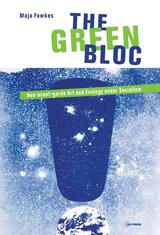 The Green Bloc: Neo-avant-garde Art and Ecology under Socialism
Maja Fowkes
Central European University Press, 2015 Expanding the horizon of established accounts of Central European art under socialism, this book uncovers the neglected history of artistic engagement with the natural environment in the Eastern Bloc. The turbulent legacy of 1968, which saw the confluence of political upheaval, spread of counterculture, rise of ecological consciousness, and emergence of global conceptual art, provides the setting for Maja Fowkes’s innovative reassessment of the environmental practice of the Central European neo-avant-garde. Focussing on artists and artist groups whose ecological dimension has rarely been considered, including the Pécs Workshop from Hungary, OHO in Slovenia, TOK in Croatia, Rudolf Sikora in Slovakia, and the Czech artist Petr Štembera, 'The Green Bloc: Neo-avant-garde Art and Ecology under Socialism' brings to light an array of distinctive approaches to nature, from attempts to raise environmental awareness among socialist citizens to the exploration of non-anthropocentric positions and the quest for cosmological existence in the midst of red ideology. Embedding artistic production in social, political, and environmental histories of the region, this book reveals the Central European artists’ sophisticated relationship to nature, at the precise moment when ecological crisis was first apprehended on a planetary scale.
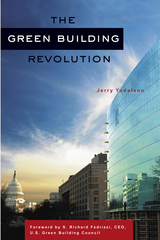 The Green Building Revolution
Jerry Yudelson, foreword by S. Richard Fedrizzi
Island Press, 2007 The “green building revolution’’ is happening right now. This book is its chronicle and its manifesto. Written by industry insider Jerry Yudelson, The Green Building Revolution introduces readers to the basics of green building and to the projects and people that are advancing this movement. With interviews and case studies, it does more than simply report on the revolution; it shows readers why and how to start thinking about designing, building, and operating high performance, environmentally aware (LEED-certified) buildings on conventional budgets.
Evolving quietly for more than a decade, the green building movement has found its voice. Its principles of human-centered, environmentally sensitive development have reached a critical mass of architects, engineers, builders, developers, professionals in government, and consumers. Green buildings are showing us how we can have healthier indoor environments that use far less energy and water than conventional buildings do. The federal government, eighteen states, and nearly fifty U.S. cities already require new public buildings to meet “green” standards. According to Yudelson, this is just the beginning.
The Green Building Revolution describes the many “revolutions” that are taking place today: in commercial buildings, schools, universities, public buildings, health care institutions, housing, property management, and neighborhood design. In a clear, highly readable style, Yudelson outlines the broader “journey to sustainability” influenced by the green building revolution and provides a solid business case for accelerating this trend.
Illustrated with more than 50 photos, tables, and charts, and filled with timely information, The Green Building Revolution is the definitive description of a major movement that’s poised to transform our world.
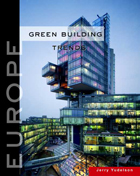 Green Building Trends: Europe
By Jerry Yudelson
Island Press, 2009 The “green building revolution” is a worldwide movement for energy-efficient, environmentally aware architecture and design. Europe has been in the forefront of green building technology, and Green Building Trends: Europe provides an indispensable overview of these cutting edge ideas and applications.
In order to write this book, well-known U.S. green building expert Jerry Yudelson interviewed a number of Europe’s leading architects and engineers and visited many exemplary projects. With the help of copious photographs and illustrations, Yudelson describes some of the leading contemporary green buildings in Europe, including the new Lufthansa headquarters in Frankfurt, the Norddeutsche Landesbank in Hannover, a new school at University College London, the Beaufort Court Zero-Emissions building, the Merck Serono headquarters in Geneva, and a zero-net-energy, all-glass house in Stuttgart.
In clear, jargon-free prose, Yudelson provides profiles of progress in the journey towards sustainability, describes the current regulatory and business climates, and predicts what the near future may bring. He also provides a primer on new technologies, systems, and regulatory approaches in Western Europe that can be adopted in North America, including building-integrated solar technologies, radiant heating and cooling systems, dynamic façades that provide natural ventilation, innovative methods for combining climate control and water features in larger buildings, zero-netenergy homes built like Thermos bottles, and strict government timetables for achieving zero-carbon buildings.
Green Building Trends: Europe is an essential resource for anyone interested in the latest developments in this rapidly growing field.
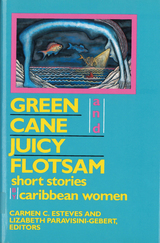 Green Cane and Juicy Flotsam: Short Stories by Caribbean Women
Esteves, Carmen C
Rutgers University Press, 1991 This collection of short stories features moving tales from the rich Caribbean oral tradition, stories that question women's traditional roles, present women's perspectives on the history of Caribbean slavery and colonialism, and convey the beautiful cadences of the language of Caribbean women. It offers the general reader a broad selection of the themes, styles, and techniques characteristic of contemporary women's fiction in the Caribbean. There are twenty-seven enjoyable and vibrant tales in this anthology, some of them originally written in English, others in French, Dutch, and Spanish. There are writers from Guadeloupe, Dominica, Jamaica, Trinidad, Puerto Rico, Martinique, Antigua, Haiti, Cuba, the Dominican Republic, and Surinam. Along with stories by well-known writers such as Jean Rhys, Jamaica Kincaid, Michelle Cliff, Maryse Conde, and Rosario Ferre, the anthology also includes first-rate stories by lesser-known but equally talented writers. The collection also contains a critical introduction, biographical notes, and a bibliography.
Green Chili and Other Impostors
Furstenau, Nina Mukerjee
University of Iowa Press, 2021 Follow a food trail and you’ll find yourself crisscrossing oceans. Join M. F. K. Fisher Grand Prize for Excellence in Culinary Writing award-winning author Nina Mukerjee Furstenau as she picks through lost tastes with recipes as codes to everything from political resistance to comfort food and much more. Pinpoint the entry of the Portuguese in India by following green chili trails; find the origins of limes; trace tomatoes and potatoes in India to the Malabar Coast; consider what makes a food, or even a person, foreign and marvel how and when they cease to be.
Food history is a world heritage story that has all the drama of a tense thriller or maybe a mystery. Whose food is it? Who gets to tell its tale? Respect for food history might tame the accusations of appropriation, but what is at stake as food traditions and biodiversity ebb away is the great, and not always good, story of us.
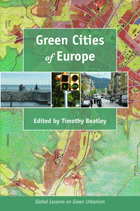 Green Cities of Europe: Global Lessons on Green Urbanism
Edited by Timothy Beatley
Island Press, 2011 In the absence of federal leadership, states and localities are stepping forward to address critical problems like climate change, urban sprawl, and polluted water and air. Making a city fundamentally sustainable is a daunting task, but fortunately, there are dynamic, innovative models outside U.S. borders. Green Cities of Europe draws on the world's best examples of sustainability to show how other cities can become greener and more livable.
Timothy Beatley has brought together leading experts from Paris, Freiburg, Copenhagen, Helsinki, Heidelberg, Venice, Vitoria-Gasteiz, and London to illustrate groundbreaking practices in sustainable urban planning and design. These cities are developing strong urban cores, building pedestrian and bicycle infrastructure, and improving public transit. They are incorporating ecological design and planning concepts, from solar energy to natural drainage and community gardens. And they are changing the way government works, instituting municipal "green audits" and reforming economic incentives to encourage sustainability.
Whatever their specific tactics, these communities prove that a holistic approach is needed to solve environmental problems and make cities sustainable. Beatley and these esteemed contributors offer vital lessons to the domestic planning community about not only what European cities are doing to achieve that vision, but precisely how they are doing it. The result is an indispensible guide to greening American cities.
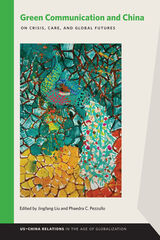 Green Communication and China: On Crisis, Care, and Global Futures
Jingfang Liu
Michigan State University Press, 2020 How does China speak for nature? How are the pollution and climate change crises being addressed? What are the possibilities and limitations of mobilizing publics to care about the environment through new media, tourism, and government policy? Green Communication and China is the first volume to identify the importance of studying environmental communication in, about, and with China, a rising global environmental leader whose ecological and political controversies often make international headlines. Organized into three sections on communicating crisis, communicating care, and environmental futurity, these essays span multimodal communication practices and methods in green public culture and address topics ranging from The North Face advertisements to NGO advocacy to global governmental policy. The volume showcases the work of leading scholars, all of them deeply intimate with China, in disciplines ranging from cultural studies and rhetoric to public opinion polling, discourse analysis, ethnic studies, and sociology. These complex projects engage transnational and national politics, ecological and economic challenges, media saturation, and government control. Holding these tensions together without glossing over differences, Green Communication and China will inform new agendas for environmental communication in China, the United States, and beyond.
 Green Communications for Energy-Efficient Wireless Systems and Networks
Himal A. Suraweera
The Institution of Engineering and Technology, 2021 The ICT industry is a major consumer of global energy. The energy crisis, global warming problems, dramatic growth in data traffic and the increased complexity of emerging networks are pushing academic and industry research towards the development of energy-saving and energy-efficient architectures, technologies and networks in order to reduce the carbon footprint while ensuring efficient and reliable communication networks, and environmental sustainability. Attractive solutions for the design and implementation of energy efficient wireless networks and 5G technologies include massive MIMO, non-orthogonal multiple access, and energy harvesting communications. Tools from areas such as machine and deep learning are being investigated to establish optimal approaches and understand fundamental limits. Moreover, new promising heterogeneous and decentralized network architectures and the Internet-of-Things (IoT) will have an impact on the successful implementation of future and next generation green wireless communications.
Green Corn Ceremonialism in the Eastern Woodlands
John Witthoft
University of Michigan Press, 1949 Many tribes of the United States, including the Algonquin, Delaware, Iroquois, and Cherokee, held a festival to celebrate the time of year when corn was first ready to eat. John Witthoft here describes the green corn ceremonies as they were practiced by these and other tribes, based on the notes and records of early European observers.
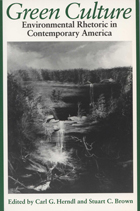 Green Culture: Environmental Rhetoric In Contemporary America
Carl Herndl
University of Wisconsin Press, 1996 Green Culture is about an idea—the environment—and how we talk about it. Is the environment something simply “out there” in the world to be found? Or is it, as this book suggests, a concept and a set of cultural values constructed by our use of language? That language, in its many forms, comes under scrutiny here, as distinguished authors writing from a variety of perspectives consider how our idea and our discussion of the environment evolve together, and how this process results in action—or inaction.
Listen to politicians, social scientists, naturalists, and economists talk about the environment, and a problem becomes clear: dramatic differences on environmental issues are embedded in dramatically different discourses. This book explores these differences and shows how an understanding of rhetoric might lead to their resolution. The authors examine specific environmental debates—over the Great Lakes and Yellowstone, a toxic waste dump in North Carolina and an episode in Red Lodge, Montana. They look at how genres such as nature writing and specific works such as Rachel Carson’s Silent Spring have influenced environmental discourse. And they investigate the impact of cultural traditions, from the landscape painting of the Hudson River School to the rhetoric of the John Birch Society, on our discussions and positions on the environment.
Most of the scholars gathered here are also hikers, canoeists, climbers, or bird watchers, and their work reflects a deep, personal interest in the natural world in connection with the human community. Concerned throughout to make the methods of rhetorical analysis perfectly clear, they offer readers a rare chance to see what, precisely, we are talking about when we talk about the environment.
 Green Delusions: An Environmentalist Critique of Radical Environmentalism
Martin W. Lewis
Duke University Press, 1994 Scholars, politicians, and activists worldwide are finally recognizing the severity of the global environmental crisis, yet serious threats to the environmental movement remain. Anti-environmentalists dismiss the very idea of a "crisis" as a mirage. Much less obvious, however, is the more subtle threat masquerading under the mantle of environmentalism itself. It is this threat that Green Delusions addresses. Writing from the standpoint of a committed environmentalist, Martin W. Lewis contends that many of the most devoted and strident "greens," those who propose a radical environmentalism, unwittingly espouse an ill-conceived doctrine that has devastating implications for the global ecosystem. In this book he distinguishes the main variants of eco-extremism, exposes the fallacies upon which such views ultimately flounder, and demonstrates that the policies advocated by their proponents would, if enacted, result in unequivocal ecological disaster. At once polemic and prescriptive, Green Delusions is an impassioned attempt to defend the environmental movement against extremist ideas that would lead to self-defeating political strategies.
Green Documentary: Environmental Documentary in the 21st Century
Helen Hughes
Intellect Books, 2014 During the first decade of the twenty-first century, a stunning array of documentary films focusing on environmental issues, representing the world on the brink of ecological catastrophe, has been met with critical and popular acclaim. This cohesive and accessible volume is the first book-length study of environmental documentary filmmaking, offering a coherent analysis of controversial and high-profile documentary films such as Gasland, An Inconvenient Truth, Manufactured Landscapes, and The Cove. With analysis that includes the wider context of environmental documentary filmmaking, such as Modern Life and Sleep Furiously, about local rural communities in Britain and Europe, Green Documentary also contributes to the ongoing debate on representing the crisis.
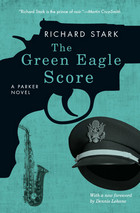 The Green Eagle Score: A Parker Novel
Richard Stark
University of Chicago Press, 2010 An action-packed crime novel starring Parker, the heister starring in the forthcoming Shane Black film Play Dirty!
Richard Stark's Parker novels are the hardest of hard-boiled, classic crime novels where the heists are huge, the body counts are high, and the bad guys usually win.
The Parker novels have been a huge influence on countless writers and filmmakers, including Quentin Tarantino, Stephen King, George Pelecanos, Colson Whitehead, Lucy Sante, John Banville, and many more. Their stripped-down language and hard-as-nails amorality create an unforgettable world where the next score could be the big one, but your next mistake could also be your last. There's nothing else like them.
In The Green Eagle Score, Parker cuts his vacation with Claire short with a new job: stealing the entire payroll of an Air Force base in upstate New York. With help from Marty Fusco, fresh out of the pen, and a smart aleck finance clerk named Devers, Parker tries to shorten the odds on the risky job. But the ice is thinner than Parker likes to think—and a wrench always gets thrown in the works.
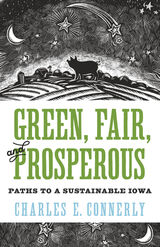 Green, Fair, and Prosperous: Paths to Sustainable Iowa
Charles Connerly
University of Iowa Press, 2020 At the center of what was once the tallgrass prairie, Iowa has stood out for clearing the land and becoming one of the most productive agricultural states in the nation. But its success is challenged by multiple issues including but not limited to a decline in union representation of meatpacking workers; lack of demographic diversity; the advent of job-replacing mechanization; growing income inequality; negative contributions to and effects of climate change and environmental hazards. To become green, fair, and prosperous, Connerly argues that Iowa must reckon with its past and the fact that its farm economy continues to pollute waterways, while remaining utterly unprepared for climate change. Iowa must recognize ways in which it can bolster its residents’ standard of living and move away from its demographic tradition of whiteness. For development to be sustainable, society must balance it with environmental protection and social justice. Connerly provides a crucial roadmap for how Iowans can move forward and achieve this balance.
Green Fields Forever: The Conservation Tillage Revolution In America
Charles E. Little
Island Press, 1987 Green Fields Forever changes the way Americans think about agriculture. It is the story of 'conservation tillage'--a new way to grow food for the first time that works with, rather than against, the soil. Farmers who are revolutionizing the course of American agriculture explain how conservation tillage works.
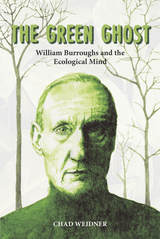 The Green Ghost: William Burroughs and the Ecological Mind
Chad Weidner
Southern Illinois University Press, 2016 Until now, much scholarly work on Burroughs has focused on the sensational aspects of his life and on his innovative writing. The Green Ghost, by Chad Weidner, uncovers the ecological context of literary texts by William Burroughs. By rereading canonical and ignored texts while pushing the boundaries of ecocritical theory and practice, Weidner provides a fresh perspective on Burroughs and suggests new theoretical and methodological approaches to understanding the work of other Beat writers.
Using an ecocritical lens, Weidner explores the toxicity in Naked Lunch while at the same time teasing out latent ecological questions embedded in Burroughs’ later works. The author’s analysis of unknown and miniature “cut-ups,” texts that have been disassembled and rearranged to create new passages, provides a novel understanding of these cryptic forms. Weidner also examines in detail books by Burroughs that have been virtually ignored by critics, exposing the deep ecology of the Beat writer’s vision.
In calling attention to Burroughs’s narrative strategies that link him to an environmental political position, The Green Ghost demonstrates that the work of the Beat writer is a ripe source for ecocritical dialogue.
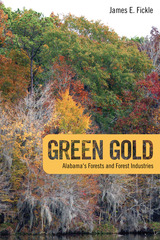 Green Gold: Alabama's Forests and Forest Industries
James E. Fickle
University of Alabama Press, 2014 Green Gold is a thorough and valuable compilation of information on Alabama’s timber and forest products industry, the largest manufacturing industry in the state.
Alabama has the third-largest commercial forest in the nation, after only Georgia and Oregon. Fully two-thirds of the state’s land supports the growth of over fifteen billion trees on twenty-two million acres, which explains why Alabama looks entirely green from space. Green Gold presents the story of human use of and impact on Alabama’s forests from pioneer days to the present, as James E. Fickle chronicles the history of the industry from unbridled greed and exploitation through virtual abandonment to revival, restoration, and enlightened stewardship.
As the state’s largest manufacturing industry, forest products have traditionally included naval stores such as tar, pitch, and turpentine, especially in the southern longleaf stands; sawmill lumber, both hardwood and pine; and pulp and paper milling. Green Gold documents all aspects of the industry, including the advent of “scientific forestry” and the development of reforestation practices with sustained yields. Also addressed are the historical impacts of Native Americans and of early settlers who used axes, saws, and water- and steam-powered sawmills to clear and utilize forests. Along with an account of railroad logging and the big mills of the lumber bonanza days of the late nineteenth and early twentieth centuries, the book also chronicles the arrival of professional foresters to the state, who began to deal with the devastating legacy of “cut out and get out” logging and to fight the perennial curse of woods arson. Finally, Green Gold examines the rise of the tree farm movement, the rebirth of large-scale lumbering, the advent of modern environmental concerns, and the movement toward the “Fourth Forest” in Alabama.
A Copublication with the Alabama Forestry Foundation
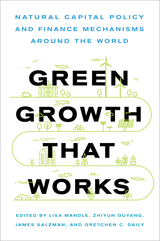 Green Growth That Works: Natural Capital Policy and Finance Mechanisms Around the World
Edited by Lisa Mandle, Zhiyun Ouyang, James Salzman, and Gretchen C. Daily
Island Press, 2019 Rapid economic development has been a boon to human well-being. It has lifted millions out of poverty, raised standards of living, and increased life expectancies. But economic development comes at a significant cost to natural capital—the fertile soils, forests, coastal marshes, farmland—that support all life on earth, including our own. The dilemma of our times is to figure out how to improve the human condition without destroying nature’s. If ecosystems collapse, so eventually will human civilization. One answer is inclusive green growth—the efficient use of natural resources. Inclusive green growth minimizes pollution and strengthens communities against natural disasters while reducing poverty through improved access to health, education, and services. Its genius lies in working with nature rather than against it. Green Growth That Works is the first practical guide to bring together pragmatic finance and policy tools that can make investment in natural capital both attractive and commonplace. The authors present six mechanisms that demonstrate a range of approaches used around the globe to conserve and restore earth’s myriad ecosystems, including: - Government subsidies
- Regulatory-driven mitigation
- Voluntary conservation
- Water funds
- Market-based transactions
- Bilateral and multilateral payments
Through a series of real-world case studies, the book addresses questions such as: How can we channel economic incentives to make conservation and restoration desirable? What approaches have worked best? How can governments, businesses, NGOs, and individuals work together successfully? Pioneered by leading scholars from the Natural Capital Project, this valuable compendium of proven techniques can guide agencies and organizations eager to make green growth work anywhere in the world.
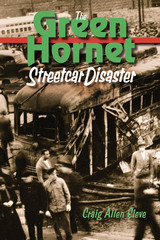 The Green Hornet Street Car Disaster
Craig Allen Cleve
Northern Illinois University Press, 2012
As rush hour came to a close on the evening of May 25, 1950, one of Chicago’s new fast, colorful, streamlined streetcars—known as a Green Hornet—slammed into a gas truck at State Street and 62nd Place. The Hornet’s motorman allegedly failed to heed the warnings of a flagger attempting to route it around a flooded underpass, and the trolley, packed with commuters on their way home, barreled into eight thousand gallons of gasoline. The gas erupted into flames, poured onto State Street, and quickly engulfed the Hornet, shooting flames two hundred and fifty feet into the air. More than half of the passengers escaped the inferno through the rear window, but thirty-three others perished, trapped in front of the streetcar’s back door, which failed to stay open in the ensuing panic. It was Chicago’s worst traffic accident ever—and the worst two-vehicle traffic accident in U.S. history.
Unearthing a forgotten chapter in Chicago lore, The Green Hornet Streetcar Disaster tells the riveting tale of this calamity. Combing through newspaper accounts as well as the Chicago Transit Authority’s official archives, Craig Cleve vividly brings to life this horrific catastrophe. Going beyond the historical record, he tracks down individuals who were present on that fateful day on State and 62nd: eyewitnesses, journalists, even survivors whose lives were forever changed by the accident. Weaving these sources together, Cleve reveals the remarkable combination of natural events, human error, and mechanical failure that led to the disaster, and this moving history recounts them—as well as the conflagration’s human drama—in gripping detail.
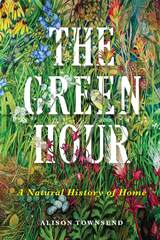 The Green Hour: A Natural History of Home
Alison Townsend
University of Wisconsin Press, 2021 When Alison Townsend purchased her first house, in south-central Wisconsin, she put down roots where she never imagined settling. To understand how she came to live in the Midwest, she takes a journey through personal landscapes, considering the impact of geography at pivotal moments in her life, vividly illuminating the role of mourning, homesickness, and relocations.
With sparkling, lyrical prose, The Green Hour undulates effortlessly through time like a red-winged blackbird. Inspired by five beloved settings—eastern Pennsylvania, Vermont, California, western Oregon, and the spot atop the Wisconsin hill where she now resides—Townsend considers the role that place plays in shaping the self. She reveals the ways that a fresh perspective or new experience in any environment can incite wonder, build unexpected connections, and provide solace or salvation.
Mesmerizingly attentive to nature—its beauty, its fragility, and its redeeming powers—she asks what it means to live in community with wilderness and to allow our identities to be shaped by our interactions with it: our story as its story.
Green HV Switching Technologies for Modern Power Networks
Kaveh Niayesh
The Institution of Engineering and Technology, 2023 In modern power networks with high shares of renewable energy sources, and a mixture of alternating (AC) and direct current (DC) technology in different sections of the network, power switching devices are exposed to more and different stresses compared with those in conventional AC networks.
 Green Infrastructure: Linking Landscapes and Communities
Mark A. Benedict and Edward T. McMahon; The Conservation Fund
Island Press, 2006 Green Infrastructure is a practical and inspiring guide to rethinking how we plan, protect, and manage the landscapes around us. With detailed examples from across the country, this book introduces a forward-looking approach to land conservation—one that connects natural systems across scales, from individual parcels to entire regions, and integrates ecological health with human needs.
Written by leading experts in planning, design, and conservation, this wide-ranging resource helps readers understand how to evaluate the full range of potential uses for a landscape—recreation, biodiversity, flood mitigation, habitat connectivity, or community development—and identify which uses offer the greatest long-term value. The book equips professionals and advocates alike with a toolkit for implementing conservation strategies that serve both people and nature.
From greenway design to regional watershed planning, Green Infrastructure presents real-world strategies and decision-making frameworks that can be tailored to a variety of urban, suburban, and rural settings. It also shows how to build partnerships, navigate policy, and align conservation goals with economic and social priorities.
Clear, accessible, and rich with illustrations, this book empowers planners, landscape architects, and engaged citizens to design landscapes that are resilient, functional, and meaningful—advancing a smarter, more connected vision for land stewardship in the 21st century.
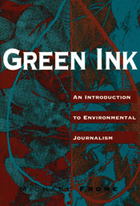 Green Ink
Michael Frome
University of Utah Press, 1998
Michael Frome, who began his distinguished career in environmental journalism in the 1960s, has been called the dean of American conservation. As former Senator Gaylord Nelson once told the members of Congress, "No writer in America has more persistently and effectively argued for the need of a national ethics of environmental stewardship."
In Green Ink: An Introduction to Environmental Journalism, Frome has forged decades of experience in the field he helped pioneer into a valuable primer for environmental advocates and writers. This appealing blend of anecdote, advice, personal testimony, and a nuts and bolts instruction offers a thorough survey of rewards and challenges that environmental studies students might expect to encounter on along their chosen career paths. In addition to the extraordinary contributions made by "marquis" names such as Rachel Carson and Bernard DeVoto, Frome recounts the remarkable stories of a host of other writer-advocates and their largely unsung roles in investigating and publicizing environmental problems and abuses.
Green Island
Liz Countryman
Tupelo Press, 2024 Poems that enlarge our sense of what beauty and awe can be.
The poems in Green Island delve into the relationship between place and imagination, examining the ways in which the physical places the speaker occupies, remembers, and imagines determine and enlarge her understanding of self.
While operating with startling self-awareness, Green Island does not simply offer poems that interrogate the circumstances of their own making. The work found in this slim volume questions the poetic tropes of beauty and romantic love and their relationships to the lyric. Ultimately working within the confines of a received tradition to expand what is possible within it, Liz Countryman shows us moments of quiet revelation in the quotidian, the comic, and in the vestiges of popular culture.
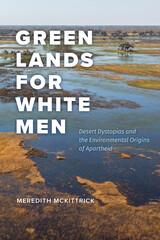 Green Lands for White Men: Desert Dystopias and the Environmental Origins of Apartheid
Meredith McKittrick
University of Chicago Press, 2024 How an audacious environmental engineering plan fanned white settlers’ visions for South Africa, stoked mistrust in scientific experts, and gave rise to the Apartheid state.
In 1918, South Africa’s climate seemed to be drying up. White farmers claimed that rainfall was dwindling, while nineteenth-century missionaries and explorers had found riverbeds, seashells, and other evidence of a verdant past deep in the Kalahari Desert. Government experts insisted, however, that the rains weren’t disappearing; the land, long susceptible to periodic drought, had been further degraded by settler farmers’ agricultural practices—an explanation that white South Africans rejected. So when the geologist Ernest Schwarz blamed the land itself, the farmers listened. Schwarz held that erosion and topography had created arid conditions, that rainfall was declining, and that agriculture was not to blame. As a solution, he proposed diverting two rivers to the Kalahari’s basins, creating a lush country where white South Africans could thrive. This plan, which became known as the Kalahari Thirstland Redemption Scheme, was rejected by most scientists. But it found support among white South Africans who worried that struggling farmers undermined an image of racial superiority.
Green Lands for White Men explores how white agriculturalists in southern Africa grappled with a parched and changing terrain as they sought to consolidate control over a Black population. Meredith McKittrick’s timely history of the Redemption Scheme reveals the environment to have been central to South African understandings of race. While Schwarz’s plan was never implemented, it enjoyed sufficient support to prompt government research into its feasibility, and years of debate. McKittrick shows how white farmers rallied around a plan that represented their interests over those of the South African state and delves into the reasons behind this schism between expert opinion and public perception. This backlash against the predominant scientific view, McKittrick argues, displayed the depth of popular mistrust in an expanding scientific elite.
A detailed look at the intersection of a settler society, climate change, white nationalism, and expert credibility, Green Lands for White Men examines the reverberations of a scheme that ultimately failed but influenced ideas about race and the environment in South Africa for decades to come.
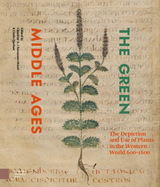 The Green Middle Ages: The Depiction and Use of Plants in the Western World 600-1600
Claudine Chavannes-Mazel
Amsterdam University Press, 2023 How ‘green’ were people in late antiquity and the Middle Ages? Unlike today, the nature around them was approached with faith, trust and care. The population size was many times smaller than today and human impact on nature not as extreme as it is now. People did not have to worry about issues like deforestation and sustainability.
This book is about the knowledge of plants and where that knowledge came from. How did people use earth and plants in ancient times, and what did they know about their nutritional or medicinal properties? From which plants one could make dyes, such as indigo, woad and dyer’s madder? Is it possible to determine that through technical research today? Which plants could be found in a ninth-century monastery garden, and what is the symbolic significance of plants in secular and religious literature?
The Green Middle Ages addresses these and other issues, including the earliest herbarium collections, with a leading role for the palaeography and beautiful illuminations from numerous medieval manuscripts kept in Dutch and other Western libraries and museums.
 Green Nature/Human Nature: THE MEANING OF PLANTS IN OUR LIVES
Charles A. Lewis
University of Illinois Press, 1996 "Our ties to the green world are often subtle and unexpected. It is not merely that hemoglobin and chlorophyll bear a striking similarity in structure, or that plants provide the pleasure of food and flowers."--from the Preface
Why do gardeners delight in the germination and growth of a seed? Why are our spirits lifted by flowers, our feelings of tension allayed by a walk in a forest or park? What other positive influences can green nature
bring to humanity?
In Green Nature/Human Nature Charles A. Lewis describes the psychological, sociological, and physiological responses of people to vegetation in cities and forests, as well as in horticultural therapy programs in hospitals, geriatric institutions, physical rehabilitation centers, drug rehabilitation programs, and correctional institutions. He presents an evolutionary basis for the human attraction to plants. People-plant interactions are presented from two perspectives: participatory, in which the individual is involved in planting and maintaining the vegetation, and observational, in which the individual bears no responsibility for establishing or maintaining the vegetation.
In what amounts to a straightforward catalog of well-documented and tangible benefits, Lewis brings the latest and best research into plant/human interaction to bear on questions of how green nature is intertwined with the human psyche and how that interaction can lead to enhanced well-being and an appreciation of the human dimension in environmental concerns.
Lewis's work will be essential reading for anyone interested in plants
and how they affect people.
A volume in the series The Environment and the Human Condition
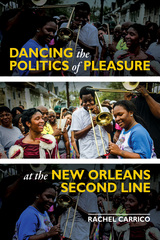 The Green New Deal from Below: How Ordinary People Are Building a Just and Climate-Safe Economy
Jeremy Brecher
University of Illinois Press, 2024 A visionary program for national renewal, the Green New Deal aims to protect the earth’s climate while creating good jobs, reducing injustice, and eliminating poverty. Its core principle is to use the necessity for climate protection as a basis for realizing full employment and social justice. Jeremy Brecher goes beyond the national headlines and introduces readers to the community, municipal, county, state, tribal, and industry efforts advancing the Green New Deal across the United States. Brecher illustrates how such programs from below do the valuable work of building constituencies and providing proofs of concept for new ideas and initiatives. Block by block, these activities have come together to form a Green New Deal built on a strong foundation of small-scale movements and grassroots energy. A call for hope and a better tomorrow, The Green New Deal from Below offers a blueprint for reconstructing society on new principles to avoid catastrophic climate change.
The Green Pastures
Edited, with an introduction by Thomas Cripps; Tino T. Balio, Series Editor
University of Wisconsin Press, 1979 The Green Pastures, a 1936 black folk-classic film, has long captured the attentions of audiences both black and white. It is a picture to be appreciated not merely for its entertainment value or cinematic techniques but also for its place in the history of American social change. We are now offered the best guide to our understanding of both, with Thomas Cripps's substantial introduction and learned annotations of the script, along with the accompanying shooting script itself, never before published.
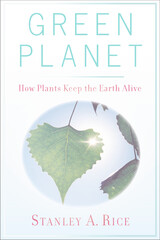 Green Planet: How Plants Keep the Earth Alive
Rice, Stanley A
Rutgers University Press, 2012 Plants are not just a pretty part of the landscape; they keep the entire planet, with all of its human and nonhuman inhabitants, alive. Stanley Rice documents the many ways in which plants do this by making oxygen, regulating the greenhouse effect, controlling floods, and producing all the food in the world. Plants also create natural habitats for all organisms in the world. With illustrations and clear writing for non-specialists, Green Planet helps general readers realize that if we are to rescue the Earth from environmental disaster, we must protect wild plants. Beginning with an overview of how human civilization has altered the face of the Earth, particularly by the destruction of forests, the book details the startling consequences of these actions. Rice provides compelling reasons for government officials, economic leaders, and the public to support efforts to save threatened and endangered plants. Global campaigns to solve environmental problems with plants, such as the development of green roofs and the Green Belt Movement—a women's organization in Kenya that empowers communities worldwide to protect the environment—show readers that efforts to save wild plants can be successful and beneficial to the economic well-being of nations. Through current scientific evidence, readers see that plants are vital to the ecological health of our planet and understand what can be done to lead to a better—and greener—future Benefits of plants: - Help modulate greenhouse gases
- Produce almost all oxygen in the air
- Create cool shade that reduces energy costs
- Prevent floods, droughts, and soil erosion
- Produce all of the food in the world
- Create and preserve soil
- Create natural habitats
- Heal the landscape after natural and human disasters
 Green Politics and Global Trade: NAFTA and the Future of Environmental Politics
John J. Audley
Georgetown University Press, 1997 Environmental groups for the first time formalized their role in shaping U.S. and international trade policy during their involvement in NAFTA negotiations. John J. Audley identifies the political forces responsible for forging this new intersection of trade and environment policy during NAFTA negotiations, analyzes the achievements of the environmentalists, and explores their prospects for influencing future trade policy. The need to reconcile the conflicting paradigms of economic expansion through free trade and that of limited sustainable development played a significant part in the political debate. Reluctant to acknowledge any relationship between these two principles, traditional trade policy actors were forced to include environmental interest groups in negotiations when the latter seriously threatened the treaty by aligning themselves with other anti-NAFTA interest groups, particularly labor. Other environmental groups worked with trade advocates to secure compromises in the agreement. The final bill included unprecedented environmental provisions, but not without serious infighting within the environmentalist community. Drawing on his access to private as well as public documents exchanged among participants, Audley explores the interactions among the political actors. He explains how political compromises between environmental groups and trade policy elites came about, focusing in particular on the roles played by eleven national environmental organizations. In identifying their accomplishments, he concludes that although the environmentalists won some procedural changes, they failed to modify the norm of unfettered growth as the guiding principle of U.S. trade policy. The first book to probe the role that environmental politics play in trade policy, this volume offers new insights into the political effectiveness of environmental organizations.
 Green Politics in China: Environmental Governance and State-Society Relations
Joy Y Zhang and Michael Barr
Pluto Press, 2013 Based on interviews with members of grassroots organisations, media and government institutions, Green Politics in China provides an in-depth and engaging account of the novel ways in which Chinese society is responding to its environmental crisis, using examples rarely captured in Western media or academia.
Joy Y. Zhang and Michael Barr explain how environmental problems are transforming Chinese society through new developments such as the struggle for clean air, low-carbon conspiracy theories, new forms of public fund raising and the international tactics of grassroots NGOs. In doing so, they challenge static understandings of state-society relations in China.
Green Politics in China is an illuminating and detailed investigation which provides crucial insights into how China is both changing internally and emerging as a powerful player in global environmental politics.
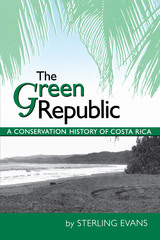 The Green Republic: A Conservation History of Costa Rica
By Sterling Evans
University of Texas Press, 1999 With over 25 percent of its land set aside in national parks and other protected areas, Costa Rica is renowned worldwide as "the green republic." In this very readable history of conservation in Costa Rica, Sterling Evans explores the establishment of the country's national park system as a response to the rapid destruction of its tropical ecosystems due to the expansion of export-related agriculture. Drawing on interviews with key players in the conservation movement, as well as archival research, Evans traces the emergence of a conservation ethic among Costa Ricans and the tangible forms it has taken. In Part I, he describes the development of the national park system and "the grand contradiction" that conservation occurred simultaneously with massive deforestation in unprotected areas. In Part II, he examines other aspects of Costa Rica's conservation experience, including the important roles played by environmental education and nongovernmental organizations, campesino and indigenous movements, ecotourism, and the work of the National Biodiversity Institute.
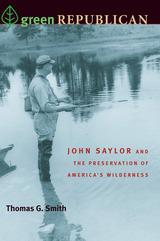 Green Republican: John Saylor and the Preservation of America's Wilderness
Thomas G. Smith
University of Pittsburgh Press, 2006
Green Republican chronicles the life of Congressman John Saylor and his personal legacy as an environmental champion. Saylor believed the wilderness was intrinsic to the American experience-that our concepts of democracy, love of country, conservation, and independence were shaped by our wilderness experiences. Through his ardent protection of national parks and diligent work to add new areas to the parks system, Saylor helped propel the American environmental movement in the three decades following Word War II.
At the height of the federal dam-building program in the 1950s and 1960s, Saylor blocked efforts to erect hydroelectric dams whose impounded waters would have invaded Dinosaur National Monument and the Grand Canyon. During the energy crisis of the early 1970s, Saylor denounced attempts to open the Alaska National Wildlife Refuge to oil drilling. He was the House architect of the Wilderness Act of 1964 and the Wild and Scenic Rivers Act of 1968. Because Saylor represented a coal-mining district, he doggedly promoted the use of coal, instead of atomic or hydropower, to generate electricity, and repeatedly won the support of his constituents over thirteen terms between 1949 and 1973. But he also fervently supported legislation to purify the air and water and redeem stripped lands.
Considered both a maverick and a pioneer, John Saylor won respect on both sides of the aisle because he was direct, hardworking, and passionate about conservation at a time when the cause was not popular. Environmental leaders dubbed him “St. John” because he tenaciously advocated their proposals and battled resistance by resource-use proponents.
Based on extensive research and numerous interviews with Saylor's colleagues and members of the conservationist community, Thomas G. Smith assembles the remarkable story of John Saylor, arguably the leading congressional conservationist of the twentieth century, and a major force in the preservation of America's wilderness.
|
|


